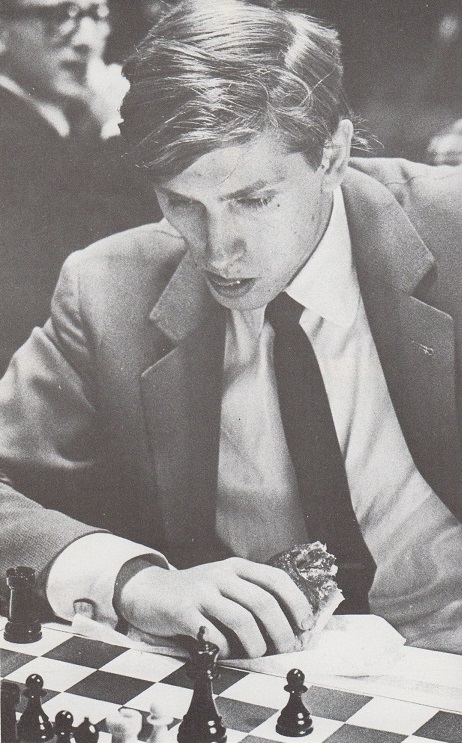
Edward Winter

The present general article on Bobby Fischer complements the following more specific feature articles and does not duplicate their material:
The Byrne v Fischer ‘Game of the Century’
Fischer’s Views on Chess Masters
A Fischer Interview
Fischer’s Fury
Instant Fischer
Fischer’s Chess Column in Boys’ Life
Fischer v Czerniak, Netanya, 1968
Spassky v Fischer, Reykjavik, 1972
Brad Darrach and the Dark Side of Bobby Fischer
A Letter from Bobby Fischer to Pal Benko
Fischer v Gligoric Training Match (1992)
My 61 Memorable Games (Bobby Fischer)
Books about Fischer and Kasparov
***
From page 198 of Achieving the Aim by Mikhail Botvinnik (Oxford, 1981):
‘It is clear now to many people that Fischer has a maniacal fear of beginning a competition.’
(442)
On page 50 of Wonders and Curiosities of Chess Chernev refers to an incident at Buenos Aires, 1960 where Fischer, Black against Unzicker, absent-mindedly touched his h-pawn at the 12th move, had to move it and was forced to resign ten moves later.
Another example of accidental fingering (readers are invited to send in others) came in Teichmann v Burn, Ostend, 1905. As Tarrasch reported on page 324 of the November 1905 Wiener Schachzeitung, after 1 e4 e5 2 Nf3 Nc6 3 Bb5 a6 4 Ba4 Nf6 5 O-O d6 6 Re1 Be7 7 c3 O-O 8 d4 Bd7 9 Nbd2 exd4 10 cxd4 d5 11 e5 Ne8 12 Nf1 g6 13 Bh6, Burn went to play 13...Ng7, but unintentionally picked up the king’s rook. Since that piece had no legal move, Burn had to make a move with his king. After 13...Kh8 his position was quite lost, yet Burn went on to win.
What would have happened if the king had had no legal move either?
(565)
David McAlister (Hillsborough, Northern Ireland) send this alternative explanation of Fischer’s finger slip (?), from Mednis’ How to Beat Bobby Fischer, pages 110-111:
‘12 P-KR4?? An unbelievable move and yet all commentators have tried to explain it in normal chess terms. Here’s what actually happened: Bobby had touched the KRP to move it to KR3. With shock he noted that White can reply 13 BxKRP. Thus there was no choice but to push the KRP two squares. 12...P-KR4?? is horrible, but 12...P-KR3??? would be even worse.’
(607)
On page 198 of the July-August 1963 Chess Life Fischer explained what had happened in his famous loss (12...h5) to Unzicker:
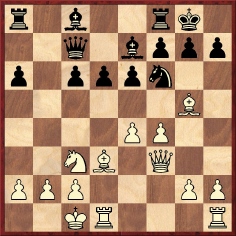
‘In this position, at Buenos Aires, 1960, Unzicker played against me 12 Qg3. I hope that none of my readers will make the move that I did in reply: 12...h5. I touched the pawn, intending ...h6 – and noticed, just in time, that White could play Bxh6. So I had to play the meaningless ...h5, which weakened my king-side and I eventually lost.
Against Unzicker’s 12 Qg3 the correct reply is 12...e5, with the better game for Black. If 13 fxe5 dxe5 14 Bc4 Nh5 15 Qh4 Bxg5+ 16 Qxg5 Nf4 and Black stands better.’
In the passages quoted above, the moves have been converted to the algebraic notation.
(4423)
From page 240 of Half a Century of Chess by Mikhail Botvinnik (Oxford, 1984):
‘Fischer’s character was always clearly inadequate ... [After 1962] Fischer achieved outstanding successes, but illness would seem to have torn him away from chess, which is very, very regrettable: the chess world has suffered an irreparable loss.’
(863)
From a review of Bobby Fischer Teaches Chess on pages 26-27 of that wretched book The Literature of Chess by John Graham (Jefferson, 1984):
Page 26: ‘The book is confusing!’
Page 27: ‘an ideal gift for a beginner’.
(889)
See The Chess Chamber of Horrors, which also includes the following:
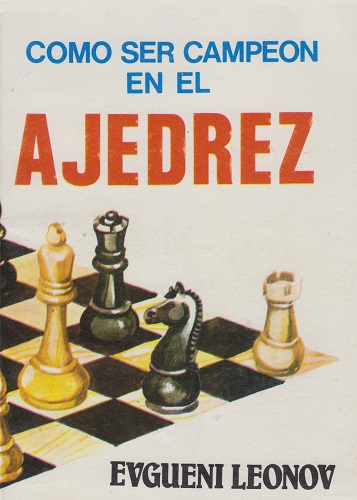
On pages 6-7 of Como ser campeón en el ajedrez by Evgueni Leonov (Mexico City, 1985) the list of world champions includes Murphy, Ewe, Aleknine and Boltvinik. The last two names are Eddie Fischer and Boris Karpov.
(10023)
C.N. 1143 dealt with a remark by Larry Evans in the March 1986 Chess Life that Kasparov’s generous spirit towards Fischer was alien to Karpov. We disputed this, showing that Karpov had indeed praised Fischer. But journalists, particularly in the United States, continue to lump Kasparov and Fischer together to stigmatize Karpov. They would do well to ponder some declarations by Kasparov. For example, he was interviewed by Thierry Paunin in L’Equipe magazine of 24 January 1987. Here are the relevant exchanges:
‘T.P. Do you think Fischer will play again one day and would you like to meet him?
G.K. No, I don’t think there is the slightest chance that Fischer will ever play chess again. The return of Fischer is a myth; in any case, it provides good suspense for people who know nothing about chess. Fischer is the chess past. He left because he didn’t want to play any more. Endless talk about his return is just day-dreaming.
T.P. Haven’t you ever tried to make contact with him? It is said that some grandmasters keep in touch with him ...
G.K. I don’t believe a word of it. I want proof. It is also said that he still plays. Well, let him play, let him enter a tournament and let him play! For me, Fischer is no longer anything. He has gone into history. That is very interesting from the historical point of view, but Fischer means nothing more at all today!’
Truly a generous spirit, worthy of Sir George Thomas.
(1354)
Geoffrey Egan (Edmonton, Canada) writes:
‘I was delighted to see you take to task the egregious Chess Panorama by W. Lombardy and D. Daniels in C.N. 900. Might I offer another example of outright blunder and fallacy contained in that lamentable volume? On page 161 the authors state:
“... Fischer scored his unprecedented eleventh straight victory in the 1963-64 US Championship, the only time anyone has ever made a clean sweep in any tournament with a national title at stake.”
This, of course, is just nonsense. To take but one example, at both Halifax in 1943 and Montreal in 1959 Abe Yanofsky scored +11 –0 =0 in the Canadian Championships of those years. (He also scored +5 –0 =0 in the 1936 Canadian Senior Boys’ Championship.) Presumably these all qualify as tournaments with a national title at stake. I am sure that many other examples could be found for other countries. Of course, it is possible that Lombardy and Daniels meant American national titles; even then the statement must be considered dubious, although I don’t have at hand a complete list of all American titles (National, Women’s, Junior, etc.). Fischer’s domination of American chess was surely impressive enough without the need to make claims that are patently bogus to enhance it.’
(1509)
George Stern (Woden, Australia) points out that Reshevsky’s Great Chess Upsets is mistaken (page 274) in saying that Fischer was permitted to enter the 1971 Candidates series ‘without having to participate in the Interzonal Tournament of 1970’. Fischer not only participated but won by a margin of 3½ points. The American’s refusal concerned an event won by Reshevsky, the US Championship of 1969 (and not 1970, as given on page 116 of The Companion).
(1738)
Richard Reich (Fitchburg, WI, USA) sends us a copy of a report on a Fischer auction, written by Robert H. Boyle on page 15 and page 18 of the 30 November 1987 issue of Sports Illustrated:
‘The books were consigned to Swann by the Brooklyn Public Library, which acquired them in 1967 from a bookshop that had bought the books from Fischer, who was indigent at the time. The first lot offered was a 1956 lab notebook containing notes, homework assignments and drawings by Fischer for his ninth-grade class. Fischer, then 13, had already gained national prominence as a chess prodigy, but he didn’t have much luck in science. He got a 65 on one true-false test, and his teacher had commented “Not satisfactory” on it, to which Fischer had written “Tough”. The composition book also contained a page of grotesque heads drawn by Fischer, and this passage unrelated to either science or chess: “I just can’t take it anymore. Baby listen to what I’m puttin’ down. Hey everybody, gather round, cmon [sic] and let’s dig these Rockin’ Sounds, we got the rugs on the floor ... Come on now I wanna swim with you.”
The notebook sold for $660. It was a bargain, not only for the insights it offered into Fischer’s adolescent mind but also considering what the other lots brought. The next offering, a typescript of Fischer’s 1968 book My 60 Memorable Games with numerous handwritten revisions, was expected to bring $400, and it fetched $6,060. Another lot of 200 various books estimated at $75 went for $1,100.
All told, the ten lots, estimated at $3,335, realized $13,035. Said Fred Wilson, a Manhattan dealer in chess books who was at the auction, “The interest in Fischer is tremendous. He’s still some kind of national hero.”’
(1840)
C.N. 1888 gave, with permission, a selection of items from the Russell Collection, including the following:
Item 1696 in the Russell Collection is a letter from Bobby Fischer to Bernard Zuckerman. It is undated, but from the final sentence we deduce that it was written in October 1962.
‘First Class
Robert Fischer
Rm 11, StadendamDear Bernard,
Greetings!Here are a few tidbits from Varna. Take my game with Donato Rivera for example. 1 P-Q4 N-KB3 2 P-QB4 P-K3 3 N-QB3 B-QN5 4 P-K3 P-Q4 5 P-QR3 BxN+ 6 PxB P-QB4 7 B-Q3? PxBP! 8 BxP Q-B2!; the point. White’s bishop is now forced to an unfavorable square. The game continued 9 B-N3 P-QN3 10 N-K2 O-O 11 B-N2 N-QB3 12 O-O N-QR4 13 N-KN3 B-QN2 14 R-QB1?? (overlooking the threat) Q-B3! 15 P-KB3 Q-QN4! 16 B-QR4 QxB(N7) y blancas abandonon [sic]. Here’s another juicy morsel. Chocltea [sic] is Black. 1 P-K4 P-K4 2 N-KB3 N-QB3 3 B-QN5 P-QR3 4 B-QR4 P-Q3 5 P-QB3 B-Q2 6 P-Q4 KN-K2 7 B-QN3 P-KR3 8 Q-K2!! N-KN3 9 Q-B4! Q-B3 10 P-Q5 P-QN4 11 Q-K2 N-QR4 12 B-Q1 B-K2 13 P-KN3! O-O 14 P-KR4! KR-QB1?? 15 B-KN5! and wins. Believe it or not I lost to this “player” in the finals!!
The first half of the tournament I played well but in the second half I really patzed up on game after another. Botvinnik could have safely resigned against me but I fell into the most obvious silly chepo [sic] you can imagine. He looked like he was dying all through the game. He was gasping, turning colors and looked like he was ready to be carried out on a stretcher. BUT – when I blundered and he caught me in his trap he was the old Botvinnik again. He huffed his chest out, strode away from the table as if he were a giant, etc.
My ship arrives Wednesday morning the 24th.
Regards R. Fischer.’
Fischer’s casual use of the descriptive notation has not been amended.
(1888)
Richard Lappin (Jamaica Plain, MD, USA) sends the Fischer column in Boys’ Life, August 1968.
After explaining in detail ‘why your solutions to the very tough puzzler in March [sic] were wrong’, Fischer answers a reader who wants to know, ‘Have you ever played a computer? What do you think of the chance of a computer of grandmaster strength, and possibly becoming world champion?’ Fischer’s reply:
‘I’ve never played a computer. Eventually, though, I think a computer can become champion. After all, it can’t be as hard as getting a man on the moon. But I hope it doesn’t happen during my lifetime! Incidentally, here’s an example of a computer game. Black’s game was a disgrace to the human race. The computer (White) was called MacHack IV, and it took on Landey, the man.’
White: MacHack IV – Black: Landey
Sicilian Defence
(Notes by Fischer)
1 e4 c5 2 d4 cxd4 3 Qxd4 (Leads to loss of time. Try to avoid early queen moves. 3 Nf3 was better.) 3...Nc6 4 Qd3 Nf6 5 Nc3 g6 6 Nf3 d6 7 Bf4 e5? (Anti-positional, weakens square on d5.) 8 Bg3? (8 Bg5 pinning knight and indirectly gaining control of d5 was logical.) 8...a6 9 O-O-O b5 10 a4 Bh6+? (Bad because it removes the d-pawn’s protection – the machine takes advantage of this. Simply 10...bxa4! and Black’s still OK.) 11 Kb1 b4 12 Qxd6! Bd7 13 Bh4! Bg7 14 Nd5 Nxe4 15 Nc7+ Qxc7 16 Qxc7 Nc5 17 Qd6 Bf8 18 Qd5 Rc8 19 Nxe5 Be6 20 Qxc6!! Rxc6 21 Rd8 mate (A very powerful finish by the machine.)
After replying to questions regarding checkmate and the touch-move rule, Fischer annotates the blunder-ridden game of a reader (Ron Hill of Grant’s Pass, Oreg.) and gives a three-mover by ‘Albert Renn, Kassel, Germany’.
(1893)
A new book from the USA provides the largest collection yet of Fischer’s games (942, most with brief notes): Bobby Fischer: Complete Games of the American World Chess Champion compiled and edited by Lou Hays. The section on simultaneous encounters offers a number of surprises, such as a game in which Fischer was held to a draw against Damiano’s Defence:
Robert James Fischer (simultaneous) – R.F. McGregor
Houston, 28 March 1964
Damiano’s Defence
1 e4 e5 2 Nf3 f6 (‘Bluffing. McGregor, actually a strong player, wanted Fischer to think he was a beginner.’) 3 Nxe5 Qe7 4 Nf3 d5 5 d3 dxe4 6 dxe4 Qxe4+ 7 Be2 Bf5 8 Nd4 Nc6 9 Nxf5 Qxf5 10 O-O Bd6 11 Bg4 Qb5 12 Nc3 Qc4 13 Be2 Qf7 14 Bb5 O-O-O 15 Qg4+ f5 16 Qh3 Nge7 17 Ne4 h6 18 Nxd6+ Rxd6 19 Bf4 Rd4 20 Be3 Rb4 21 Bxc6 Nxc6 22 b3 Re4 23 Rfd1 Rd8 24 Rxd8+ Nxd8 25 Rd1 Qe6 26 g3 Rxe3 Drawn.
It is notable that Fischer did not play the gambit line recommended by the Wiener Schachzeitung (May-June 1912, page 179, and July-August, page 200): 8 O-O (‘!’) Qxc2 9 Qe1 Be7 10 Nc3 Nc6 11 Bb5 O-O-O 12 Qe3, with the threat of 13 Ne1. The magazine also pointed out the snap finish 8 O-O Qxc2 9 Re1 Qxd1 10 Bb5+ Kf7 11 Be8 mate, but of course after 10...Kd8 there is no mate at e8 because the rook is pinned. Fischer’s 8 Nd4 line was preferred by earlier opening encyclopaedias; the 1843 edition of Bilguer’s Handbuch des Schachspiels (pages 48-49) gave 8 Nd4 Nc6 9 Nxf5 Qxf5 10 O-O Bd6 11 Bd3.
As always in such cases, we wonder how much knowledge the master had, and needed, of this historical background.
(1934)
Jean Hébert (Montreal, Canada) sends two Fischer games from a simultaneous display (+48 –0 =0) which were published in L’action catholique in February or March 1964.
Robert James Fischer – M. Tordion
Quebec City, 25 February 1964
Sicilian Defence
1 e4 c5 2 Nf3 Nc6 3 d4 cxd4 4 Nxd4 Nxd4 5 Qxd4 e6 6 Nc3 Qc7 7 Nb5 Qxc2 8 Bf4 Bc5 9 Qd2 Qxe4+ 10 Be2 Bb4
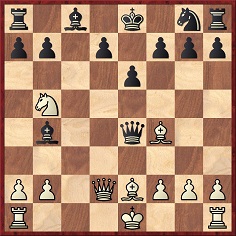
11 Nd6+ Bxd6 12 Bxd6 Nf6 13 O-O Qd5 14 Qf4 Qe4 15 Qg3 Qg6 16 Qa3 Qg5 17 Rac1 Ne4 18 Bb4 a5 19 Bf3 Nd2 20 Bxd2 Qxd2 21 Qc5 Qb4 22 Qxc8+ Rxc8 23 Rxc8+ Ke7 24 Rxh8 h6 25 Rb8 b6 26 Rb7 Qxb2 27 Rd1 Qxa2 28 Rdxd7+ Ke8 29 Re7+ Kd8 30 Rbd7+ Kc8 31 Bb7+ Kb8 32 Re8+ Ka7 33 Ra8 mate.
Robert James Fischer – A. Bilodeau
Quebec City, 25 February 1964
Falkbeer Counter-Gambit
1 e4 e5 2 f4 d5 3 exd5 e4 4 Nc3 Nf6 5 Qe2 Bg4 6 Qe3 Bf5 7 h3 Nxd5 8 Nxd5 Qxd5 9 g4 Bc5 10 Qb3 Be6 11 f5 Qd4 12 Qg3 Bd6 13 Qg2 Bd5 14 Ne2 Qc5 15 Nc3 O-O 16 b4 Qd4 17 Bb2 Bxb4 18 O-O-O Nc6 19 f6 g6 20 h4 h6 21 g5 h5 22 Be2 Ne5
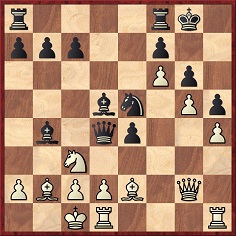
23 Nb5 e3 24 Bxd4 Bxg2 25 Rh2 exd2+ 26 Kb2 Nc4+ 27 Bxc4 Bf3 28 Be2 Bxe2 29 Rxe2 Rae8 30 Rxe8 Rxe8 31 c3 a6 32 Nxc7 Re4 33 Rxd2 Ba5 34 Nd5 Kf8 35 Bc5+ Ke8 36 Rd4 Rxd4 37 Bxd4 Kd7 38 Kc2 Kd6 39 Ne3 Bc7 40 Kd3 b5 41 Ke4 Kc6 42 Be5 Bxe5 43 Kxe5 a5 44 Nf5 Kd7 45 Nd6 b4 46 cxb4 axb4 47 Nb7 Resigns.
(2210)
Yasser Seirawan (Seattle, WA, USA) informs us that the book Bobby Fischer Teaches Chess (first published in 1966) has now sold over a million copies. The source of this information is the latest royalty statement received by a co-author, Stuart Margulies.
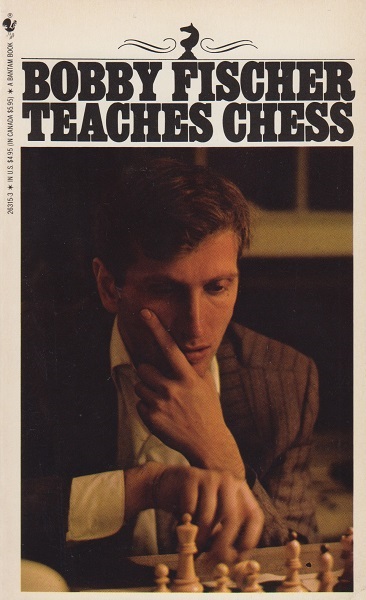
We have occasionally touched on the topic of chess book sales, but it would seem impossible to list authoritatively the best-selling titles, past or present. Is Fischer the only world champion to have a book sell a million copies?
(2267)
See Chess Book Sales.
With respect to the projected match between Fischer and Karpov in 1975, see C.N.s 3588, 3627 and 3635.
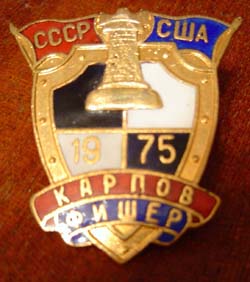
The above image was provided by Michael Clapham (Ipswich, England) in C.N. 3635.
On pages 156-157 of the November 1983 issue of CHESS we chided a reader for complaining about the price ($1) of Fischer’s self-publication “I Was Tortured in the Pasadena Jailhouse!”. Now, 16 years on, we note that an Internet dealer is offering a copy (not signed …) for $150. It is classified under ‘true crime’ and, ironically, the vendor’s name is ‘Bargain Books’.
(2329)
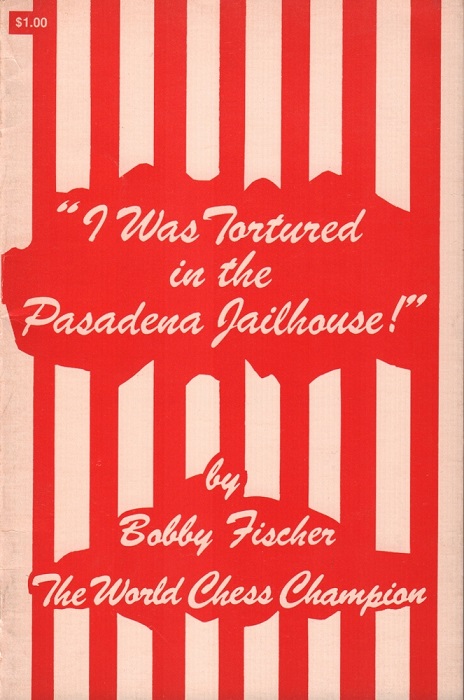
An extract from an item that we contributed to Kingpin in 1995 regarding Dimitrije Bjelica ...
... whose exploits include a two-volume work on Fischer: Robert Fišer – Genije koji se ne vraca (Belgrade, 1984). On pages 8-9 of its 5/1986 issue, New in Chess published a letter from Christiaan Bijl, the compiler of Die gesammelten Partien von Robert J. Fischer (first published in 1976, with a revised edition in 1986). Extracts from the letter are reproduced here with the kind permission of New in Chess:
‘... When he [Bjelica] started volume two it seems that he suddenly got very tired after having written page 49. From page 51 onwards to page 241(!) he tries to give Fischer’s games, introduced by the misleading heading ‘Sve Fišerove partije’ – the complete games of Fischer – but in fact he gives only a poor sixty per cent of them. To my surprise Bjelica has boldly used exact replicas of the copyrighted lay-out of my work ... Puzzled and dazed the reader discovers that games are completely cut to pieces, or rather spoiled in cuttings. Names of players are corrupted (...), authorised annotations are copied or badly cut off. Bjelica collected diagrams from my original edition, several of which he inserted in wrong places and he even used diagrams without the game scores! ... From some games he omitted moves or names of players, added the names of annotators between the moves of an unannotated game, or replaced the actual game moves by a variation. He created even a seven move miniature of Fischer versus Petrosian, and he outrageously omitted in many cases the sites of play and the game-numbers in matches ... The book oozes contempt for its buyers and is an insult to Fischer, who broke off all connections with Bjelica in 1971 after he had been cheated by this “friend”.
It is known in the chess-world that Bjelica’s reputation is a dubious one. With [this] publication he added another outrage of the worst sort to his long list of non-fulfillments, gross falsehoods and impostures.’
Our above-mentioned article on Dimitrije Bjelica currently has little on his relations with Bobby Fischer.
John Donaldson (Berkeley, CA, USA) has provided the following from pages 104 and 128 of CHESS, November 1970 (extracts from an article by Bjelica):
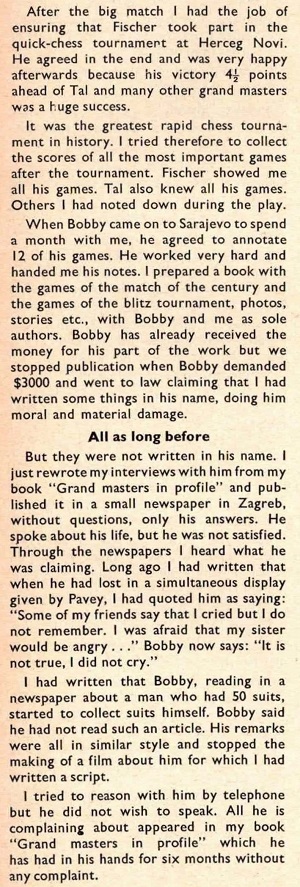
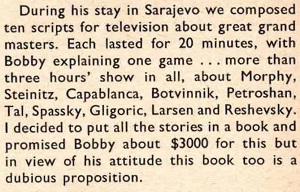
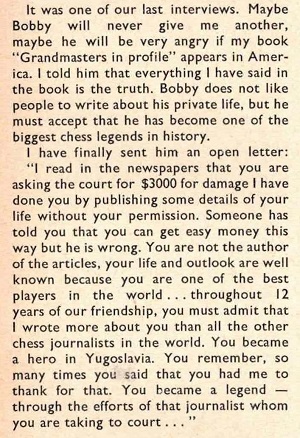
From page 31 of the New York Times, 28 August 1973:
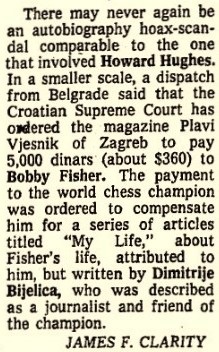
Can more information be found from, in particular, sources in Zagreb and Belgrade?
(12178)
John Donaldson comments that ‘Fischer’s lawsuit against Dimitrije Bjelica (C.N. 12178) stands out for being one of the rare occasions he was awarded a settlement’.
Our correspondent adds:
‘Tracking Fischer’s legal activities is tricky. I believe the first was his lawsuit initiated after the Fischer-Reshevsky match. The conditions were such that the winner was to be awarded 60% of the purse, and Reshevsky being declared the victor received this amount. Fischer as the loser was given 40% but sued for another 10% on the grounds that the score was tied when the match was aborted.
I have been unable to track the lawsuit, but it seems likely (Fischer being invited to the 1963 Piatigorsky Cup) that Jacqueline Piatigorsky ended up enhancing the prize fund and in the end Fischer was given 50%.’
(12195)
It is often forgotten that in the 1960s Fischer was quite a prolific writer. For example, his column ‘Fischer Talks Chess’ in Chess Life had much of interest, including game annotations that were later reworked for My 60 Memorable Games. The articles were discursive, with Fischer frequently replying to his Russian critics. Thus on page 172 of the July-August 1963 Chess Life he referred to claims that he lacked objectivity, after which he gave …
‘… a few more examples of published Russian annotations and analysis that indicate that the Soviets don’t always practice what they preach. My purpose in doing this is not to demonstrate that even good players make mistakes. Any player, no matter how strong he is, can overlook quite simple moves in the course of a game. The point is, that published analysis should be free from such errors. I pride myself on the fact that I have never made a mistake in analysis. I am afraid the same thing cannot be said of my Russian critics.’
Fischer then published some analysis by B. Weinstein regarding a variation of the Meran Defence: 1 d4 d5 2 c4 c6 3 Nc3 e6 4 Nf3 Nf6 5 e3 Nbd7 6 Bd3 dxc4 7 Bxc4 b5 8 Bd3 a6 9 e4 c5 10 e5 cxd4 11 Nxb5 Nxe5 12 Nxe5 axb5 13 O-O Qd5 14 Qe2 Rb8 15 Bg5 Be7 16 f4 O-O 17 Rf3 Bb7 18 Bxf6 Bxf6 19 Nd7 Qxd7 20 Bxh7+ Kxh7 21 Rh3+ Kg8 22 Qh5
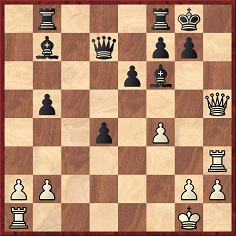
Fischer continued:
‘And here Weinstein concludes his analysis with an “etc.” – signifying that there is no answer to the threat of Qh7 or h8, mate.
What is remarkable – and inexcusable – in this published Russian analysis is that the only move that Black has to avert an immediate mate wins the game for him outright! Black wins in the diagram position with the “desperation” move 22…Bh4! Once the bishop is captured, Black can defend against the mate threats with …f6, and he remains a whole piece ahead with a clear win. The whole thing is childishly simple. Certainly, if Weinstein had applied the “objectivity” that the Russians pride themselves on, he would have seen the forced move 22…Bh4 and realized that the “brilliant” combination starting with 19 Nd7 is unsound.’
(Kingpin, 2000)
As noted in C.N. 2365, an interesting gap in the Fischer record is related on page 58 of The Unknown Bobby Fischer by John Donaldson and Eric Tangborn (Seattle, 1999):
‘Fischer’s match with Milan Matulovic is shrouded in mystery. The basic details are known. That it was held July 20-26, 1958, at the Chess Club Slavia in Belgrade alongside a match between Bent Larsen and Milan Vukcevic. Bobby won the match 2.5-1.5, but only the first game, a win by Matulovic, has surfaced. The results of the final three games are not known, though game four had Bobby as White in a French that went 50 moves.
Yugoslav magazines of the time had very little on the match, which was held prior to Bobby’s participation in the Interzonal. Matulovic doesn’t seem to have his game scores.’
In C.N. 2386 John Donaldson added:
‘John Rasmussen of Hicksville, New York, has pointed out to me that Bent Larsen did play Milan Vukcevic in a match, but in 1955 and not 1958 as Vukcevic remembered it. Edmar Mednis, in How to Beat Bobby Fischer, describes the Fischer-Matulovic event as a public training match held to help Bobby get ready for the upcoming Interzonal at Portorož. Does anyone have the final three games of the match?’
Referring to the 1958 Fischer v Matulovic match (won by Fischer 2½-1½), Kiril Penušliski (Skopje, Macedonia) draws attention to page 56 of Povratak Bobi Fišera by B. Ivkov (Novi Sad, 1993):
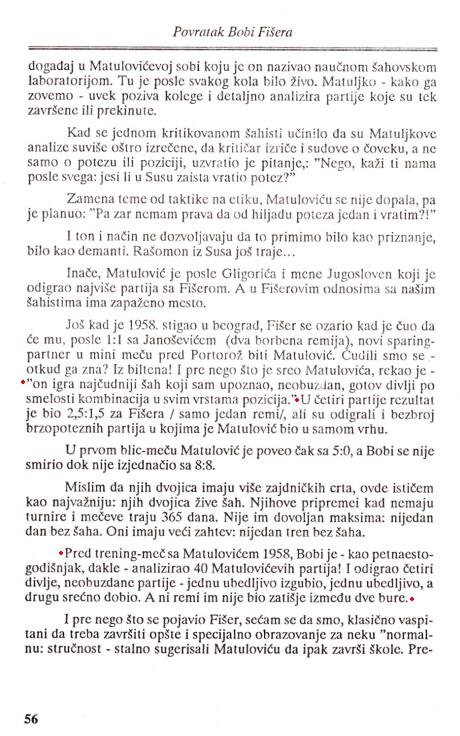
With regard to the two marked passages our correspondent comments:
‘Ivkov attributes to Fischer (without a source) the following remark concerning Matulovic:
“He plays the strangest chess I have ever encountered, fierce, almost wild in the daring of the combinations in all types of positions.”
Towards the bottom of the page Ivkov states:
“Before the 1958 training match with Matulovic, Fischer – as a 15 year old – analysed 40 of Matulovic’s games. And he played four wild, fierce games – convincingly losing one, winning one convincingly and one luckily. And the drawn game was not a calm between two storms.”
These comments suggest that Ivkov had seen the four games of the Fischer v Matulovic match.’
We are aware of no photographs from the match. The shot below, taken six or seven weeks later, comes from page 323 of Chess Review, November 1958:
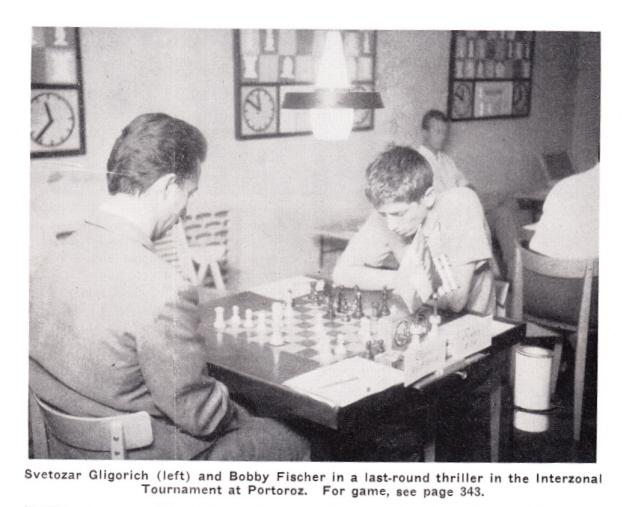
(7589)
For further, very detailed information from Kiril Penušliski see C.N. 7752.
José Miguel Barrueco Martín (Zamora, Spain) now points out a brief item by Matulovic on page 17 of the July 1987 issue of Gens una sumus:
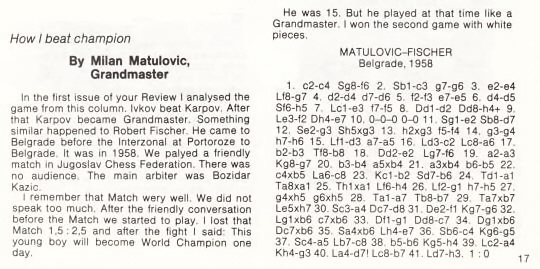
This is the only known game from the match, but it is notable that Matulovic does not call it the first of the four.
(8330)
Readers may find that these photographs have a pleasantly nostalgic air, i.e. from the days when Fischer was interviewable:
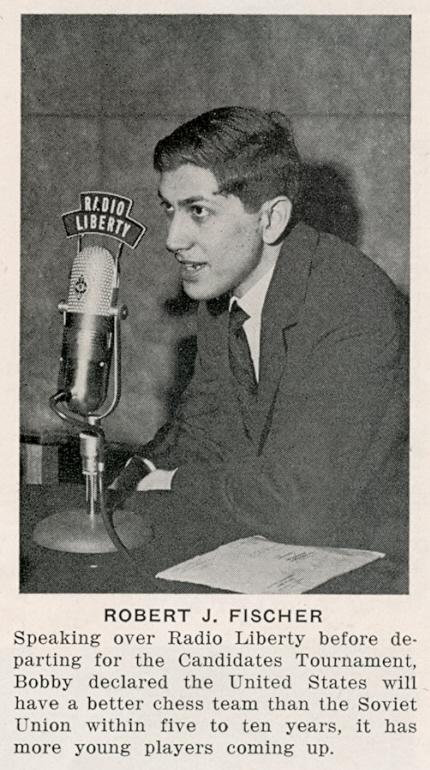
Chess Review, August 1962, page 227
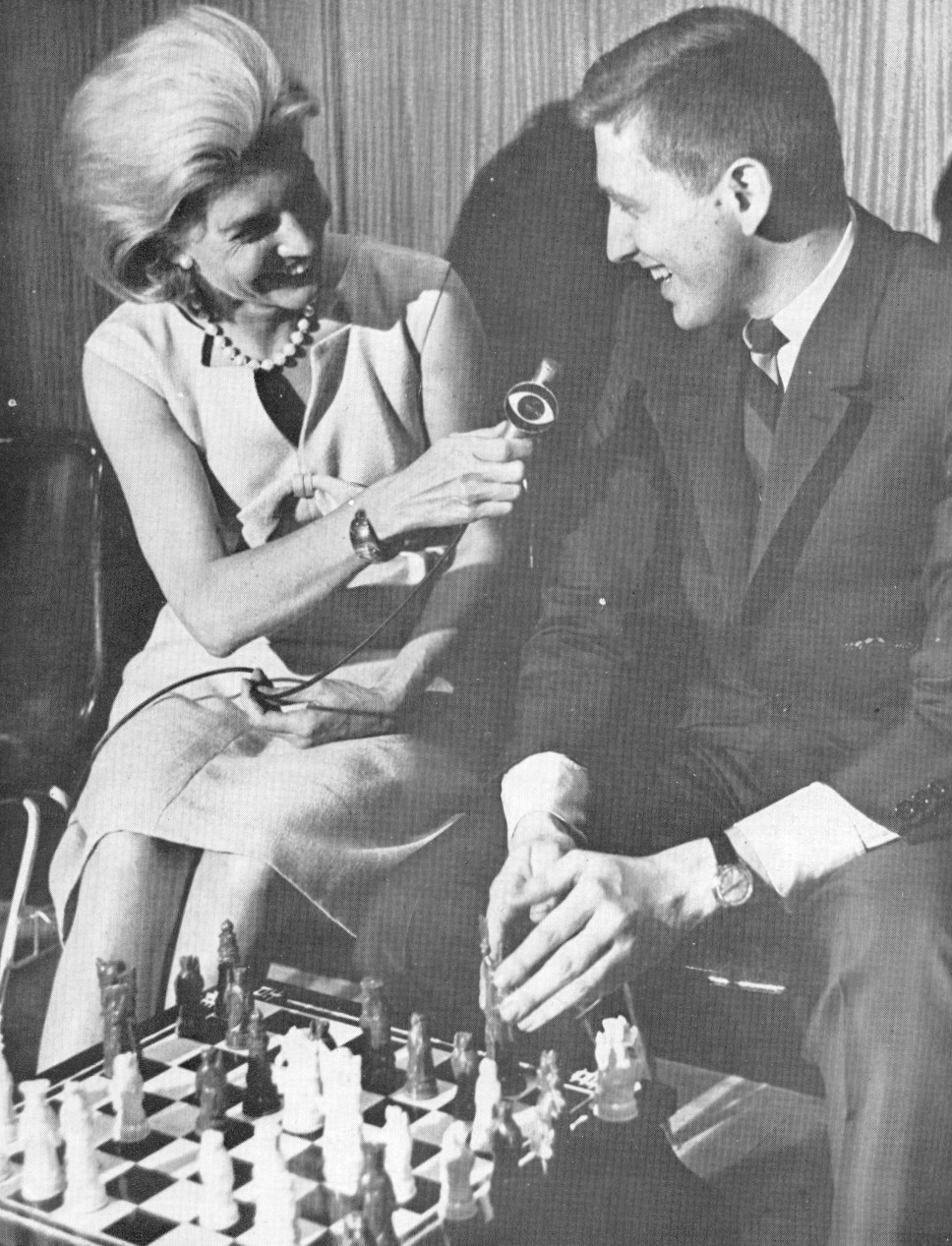
Chess Review, July 1965 (front cover)
Page 196 of the July 1965 Chess Review named the interviewer as Jean Parr of CBS-TV (Channel 2)
(2596)
From Chess and Hollywood:
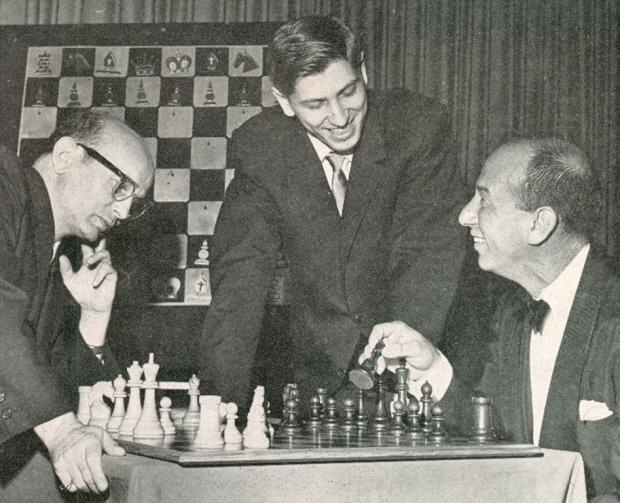
Samuel Reshevsky, Bobby Fischer and José Ferrer (Chess Review, September 1961, page 267)
In the first years of the 1960s what attempts did Fischer make to bring out a collection of his early games? C.N. 2664 noted that page 224 of the September 1963 Chess Life had this box announcement:
‘Want to Get Published?
Bobby Fischer is compiling his early games, 1955, 56 & 57, for publication. He is missing quite a few – and he was on the losing side of many of these. If you have any of the scores, send them to Chess Life, c/o J.F. Reinhardt, 80 E. 11th Street, N.Y. 3, N.Y.’
Is anything more known about this publication project? (It should be noted that his book Bobby Fischer’s Games of Chess had already appeared, in 1959.)
We added in C.N. 2664:
As ever, the call is for solid information. This is not the place for observations along the lines of ‘If memory serves, my understanding has always been that I read somewhere that maybe there was talk once of a rumour that someone perhaps mentioned an oral tradition that it may possibly have been claimed that it was widely believed that …’.
A further remark, in C.N. 4474:
Concerning the final paragraph, other precursors of nescience include, ‘My best guess would be that ...’, ‘If I had to guess I would say that ...’, ‘I think I read or heard somewhere that ...’ and ‘The last I heard was that ...’
Another phrase not recommended:
‘It’s a fair bet that ...’
We have occasionally commented on certain chess authors’ indifference to attributing correctly the information they put forth. In our view, any writer who, for instance, lists alleged quotes by chess figures without even attempting to specify sources is not worth a second look.
Yet there are cases of ‘sourcelessness’ concerning entire books. Examples are Robert James Fischer Gesammelte Partien (Nuremberg, 1989 and 1991), the French edition of which is Bobby Fischer Parties choisies, published by ‘Editions Echecs International’. The volume contains not one word about the place or date of publication, although we note that in 1992 a book by K. Pytel, Vie et oeuvre de Boris Spassky, was published by a similarly, but not identically, named company: ‘Edition Echecs International’ of Schifflange in Luxembourg.
In the case of the Fischer book, ‘French edition’ is a tolerant term, since the pseudo-Gallic text goes awry as early as the first words of the Preface (‘Il y 17 ans depuis que …’).
(2870)
From Chess Life, 20 April 1961, page 117:
‘Frances Parkinson Keyes’ novel The Chess Players is under negotiation as a possible motion picture. Dealing with the life and love of Paul Morphy, there is speculation that Bobby Fischer may play the role of Morphy in the movie.’
(2982)
Below is a news report from page 292 of the October 1960 BCM in which Harry Golombek’s waspishness and sniffy irony were in full flow:
‘The US is experiencing difficulty in raising the sum necessary to send a team to Leipzig. A chess committee has addressed an open letter to President Eisenhower stating that 6,000 dollars were required for this purpose and that “this year with such top players as Bobby Fischer, Samuel Reshevsky, Larry Evans, Robert Byrne, Arthur Bisguier, Pal Benko, Nicolas Rossolimo, James Sherwin and others to select a team from, our chances of winning are excellent”. The letter finishes with “We need an immediate O.K. from you”. One hopes that there will be a good response to this request and that we will see a US team at Leipzig. Unfortunately, the game of chess being what it is, we doubt whether even an immediate O.K. from a US President will suffice to lever the team into first place.
This optimism about USA’s chances seems to flow in some measure from the considered opinion of the US Champion, 17-year-old Bobby Fischer. In the Saturday Review for 10 September we read that “the big news in American chess these days is that the United States, for the first time, has at least half-a-dozen players who, as a group, have a better than fair chance of winning the world’s championship at the Chess Olympics. According to young Mr Fischer, who visited S.R.’s offices recently, a team made up of himself, Samuel Reshevsky, Larry Evans, Nicolas Rossolimo, Arthur Bisguier and Robert Byrne would be in genuine contention for first place.” Knowing the members of this team the present writer would be prepared to admit the truth of this last sentence, always provided the last three words were omitted.
Some more illuminating remarks are quoted in the following paragraph: “We asked Fischer about his recent trip to Russia and he told us that the average man in the street was no more interested in chess there than he was over here. ‘Moscow’s a pretty dull place’, he told us frankly. Fischer himself has grown up some since we talked to him last, but mostly in height. He is still not much of a scholar, although he likes books on magic, hypnotism and palmistry, and stories of intrigue. Asked if he wanted to go to college, he shook his head. ‘Nah’, he said, ‘too much homework.’”
What sort of divining guide Fischer used to test the average Muscovite’s interest in chess we do not know since he speaks no Russian but we are happy to assure the reader that the young American grandmaster is far from being the moron that one might think him to be from these idiotic remarks.’
(3022)
A book just published by Faber and Faber, Bobby Fischer Goes to War by David Edmonds and John Eidinow, focuses on the 1972 world championship match. Becoming cagier with every day that passes, we venture no assessment of the precision or otherwise of the authors’ narrative about Fischer (the world champion whose life is probably the most difficult to chronicle without factual error), and our observations here are confined to one unfortunate aspect of the supporting material offered. The extensive presentation of ‘sophisticated’ journalistic and political comment merely underscores the authors’ naivety about, and indifference to, (pre-Fischer) chess history. An example of their unquestioning reproduction of chess-lore chestnuts long since refuted comes on page 24:
‘… a German book, Instructions to Spectators at Chess Tournaments, containing three hundred blank pages followed by the words “SHUT UP”.’
Why is that there? Because on page 79 of Bobby Fischer’s Conquest of the World’s Chess Championship (New York, 1973) Reuben Fine wrote:
‘A German wit in fact once wrote a book entitled Instructions to Spectators at Chess Tournaments. The book consisted of three hundred blank pages and one other page on which was written: KEEP QUIET.’
However, as discussed in C.N.s 857 and 884 (see page 121 of Chess Explorations) the German publication was no more than ‘a little pamphlet’. See also pages 252-253 of Chess Facts and Fables and A Fictitious Chess Book.
Page 68 of the Edmonds/Eidinow book attempts to titillate with the hoary falsehood that Morphy ‘was found dead in a bathtub, surrounded by women’s shoes’. As noted in C.N. 2913 (see page 231 of Chess Facts and Fables), Alexander Cockburn wrote on page 16 of Idle Passion that Morphy died ‘according to some accounts, in his bath, surrounded by women’s shoes’. The Fischer book has even unobtrusively dispensed with the wishy-washy, story-spoiling ‘according to some accounts’.
On the next page the co-authors inform us:
‘the Mexican master Carlos Torre removed all his clothes while travelling on a public bus in New York, his breakdown possibly triggered by a relationship with a young woman that had gone sour. From that moment on he never recovered his sanity.’
Why? Again because writers like Reuben Fine and Alexander Cockburn wrote things like that about Torre, without a scrap of substantiation, and Messrs Edmonds and Eidinow appear qualmless about presenting as fact any second- or third-hand yarn, even if (especially if) it entails a great master of the past being ridiculed or depicted as a freak.
(3099)
See too ‘Fun’ and Reuben Fine, Chess and Psychology.
Regarding Edmonds and Eidinow’s faulty reference to the origin of the term ‘mimophant’, see Arthur Koestler and Chess.
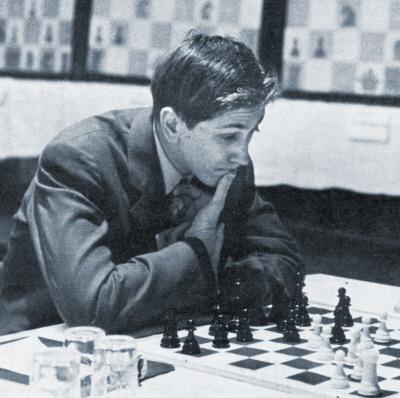
Bobby Fischer
A book by Peter Fuller entitled The Champions and subtitled ‘The secret motives in games and sports’ (Urizen Books, New York, 1977) discusses figures from the worlds of chess, bullfighting, boxing and motor-racing. The chess chapter (pages 49-104) has plenty of trivia and tripe about the masters of yesteryear (the first paragraph states, ‘Steinitz claimed to have played God at pawn odds and won’) but is essentially about Fischer, viewed from a psychoanalytical standpoint.
The results are spectacular. Fuller opines that Fischer’s queen sacrifice in his famous game against Donald Byrne in 1956 ‘is central to the understanding of Fischer’s psychological motivations in chess’ and that ‘more has been written about this queen sacrifice than about any other single move made this century’ (pages 71-72). The implications for Fischer were, it is indicated on page 81, greater than anybody could have imagined:
‘Although Fischer played excessively aggressive chess, it remained difficult to demonstrate manhood through a non-physical game, in which the queen is represented as the main ally.
His need to disguise his internal Regina affected chess and life. On the board it was first expressed in the queen sacrifice. The historic move paralleled his ego-ambition to deny identification with his mother, simultaneously symbolizing a refusal to accept the option of homosexuality, and a defiant rejection of infantile dependence. A reversal of usual chess practice, it paralleled a reversal he was trying to bring about with himself.’
These observations were considered so judicious that the sentence beginning ‘The historic move’ was paraded on the back of the dust-jacket. Yet it is on page 100 that the chapter attains its high-water mark:
‘For some Russians, as Lenin warned, chess may become an alternative to revolutionary thought: instead of confronting the failure of the revolution in terms of history, players may attempt to achieve individualistic solutions on the chess board, and these become inextricably bound up with their own private conflicts. Chess, and its accompanying strategical and tactical theory, may thus be pursued as a way of working out a better form of regicide, and of evading reality and retreating into a private world at the same time.
We may correspondingly speculate (and it is no more than that) that the dramatic upsurge of interest in Fischer in the sixties, combined with the sudden birth of chess as a major cultural component in America, was in part related to the continuing national preoccupation with the assassination of President Kennedy. Interest in the game may socially have been a way of mastering the guilt and anxiety inevitably associated with the murder of a leader. The wish to return to the traumatic event may thus parallel, within a broader context, the desire of Freud’s grandson to return to the scene of his mother’s departure in order to find a way of binding the anxiety associated with it. It is at least possible that chess thus provides a way of repeating rather than remembering national as well as personal conflicts.’
(3100)
The fifth game of the 1963 world championship match between Petrosian and Botvinnik began 1 c4 g6 2 d4 Nf6 3 Nc3 d5 4 Nf3 Bg7 5 e3 O-O 6 Be2. For Petrosian’s view of 6 Be2 see pages 395-396 of The Games of Tigran Petrosian Volume I: 1942-1965 compiled by E. Shekhtman (Oxford, 1991).
On pages 237-238 of the October 1963 Chess Life Fischer annotated his game (as Black) against Greenwald at Poughkeepsie, 1963. It began 1 d4 Nf6 2 c4 g6 3 Nc3 d5 4 cxd5, at which point he wrote:
‘This is White’s only chance of gaining any real advantage against the Grünfeld. Much weaker, for example, is 4 Nf3 Bg7 5 e3 O-O 6 Be2? (A genuine beginner’s move). So far, Petrosian-Botvinnik, Game Five, 1963 World Championship Match. Botvinnik now played 6…dxc4? 7 Bxc4 c5? (Better is 7…Nfd7! and then 8…e5) 8 d5! e6 (Better is 8…Ne8.) 9 dxe6 Qxd1+ 10 Kxd1 Bxe6 11 Bxe6 fxe6 and despite all of Black’s lemons, the game is still only slightly better for White, which only proves again the weakness of White’s first move, 1 d4.
Correct for Black after 6 Be2? is 6…c5! and White must play carefully to equalize, e.g.,
(a) 7 O-O? cxd4 8 Nxd4 Nc6 9 cxd5 Nxd5 10 Nxd5 Qxd5 11 Bf3 Qc4 12 Nxc6 bxc6 and Black stands better; Aaron-Gligoric, Stockholm, 1962.
(b) 7 cxd5 Nxd5 8 Qb3 Nxc3 9 bxc3 Qc7 10 O-O b6 11 a4 Nc6 again better for Black; Goglidze-Botvinnik, Moscow, 1935.
(c) 7 dxc5 Qa5 8 cxd5 (8 O-O dxc4 9 Bxc4 Qxc5 with advantage) 8…Nxd5 9 Qxd5 Bxc3+ 10 Bd2 (10 Kf1 Bg7 11 Bd2 Qc7 Black regains the pawn at will, with a strong attack to boot) 10…Bxd2+ 11 Qxd2 Qxc5 12 O-O Nc6 13 Rac1 Qb6 and White should draw with correct play.’
Under the heading ‘And Now Fischer as Annotator’ Purdy wrote on page 7 of the January 1964 Chess World:
‘We like especially the opening paragraph of Fischer’s note to 4 cxd5. It is matchless in the whole literature of chess.’
(3371)
C.N. 3588 quoted from pages 161-162 of Karpov on Karpov (New York, 1991), during a description of the mid-1970s discussions between Fischer and Karpov on a possible world championship match:
‘After the talks we set out for a stroll around Tokyo. I was afraid that autograph hounds would harass us, but, to my amazement, not one person approached us. Here were two of the best chessplayers in modern times, whose photographs practically never left the front page, walking down the street – you’d think at least someone would have noticed. Later I understood that such a thing is possible in only one place on earth: Tokyo.
One photograph – the only one in which Fischer and I are together – was taken. The chairman of the Japanese Chess Federation, Matsumoto, ingratiated himself with Fischer, who disliked journalists even more than their articles, and took our picture “for his family album”. A few days later the shot was sold to Agence France-Presse, who in turn distributed it worldwide.’
Where has the photograph been published?
This postage stamp has recently been issued in Austria:
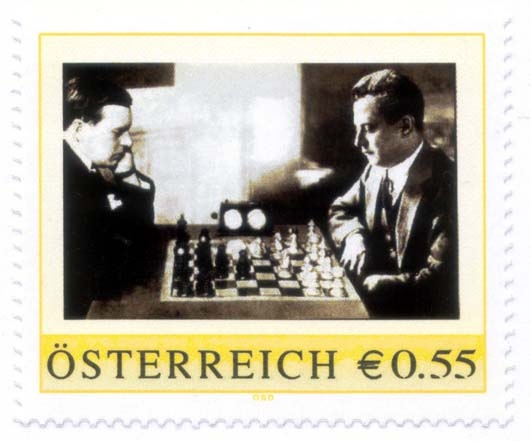
(3680)
Although the Alekhine-Capablanca photograph is a fake the postage stamp shown in C.N. 3680 is genuine, being one of a set which includes the following portrayal of Fischer:
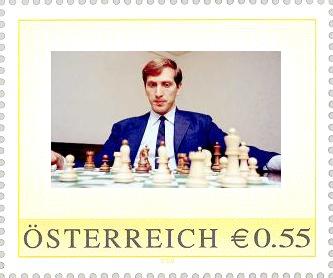
(3681)
Michael McDowell (Westcliff-on-sea, England) quotes the following from page 16 of A Tribute to G.F. Anderson compiled by G.W. Chandler, C.R. Flood and R.C.O. Matthews (published by the British Chess Problem Society in 1974):
‘The logical element in Kriegspiel problems gives them an appeal to players that many conventional problems lack. Not long after Are There Any? was published, Robert C. Stephenson, one of our members, wrote to Anderson:
“I write because I must have another copy of Are There Any? I had solved only up into the thirties when last night I incautiously carried it down to the Marshall Club to show it to Jack Collins. Then, seeing it in Jack’s hands, Bobby Fischer pounced upon it in great excitement and before the evening was over the two of them had so made it theirs, were so comically oblivious of the mere owner, that I hadn’t the heart to explain that I had brought it to show, not to bestow.”’
Our correspondent comments:
‘Anderson’s 1959 book Are There Any? is a fascinating collection of Kriegspiel problems. I am not aware of any other reference to Fischer showing a direct interest in the composition side of chess (as opposed to Benko setting him problems to solve).’
(3994)
Michael Syngros (Amarousion, Greece) asks whether Fischer is the master about whom the most volumes have been written.
(4416)
‘Fischer Talks Chess’ was the title of a column which began in the June 1963 Chess Life. As noted on page 166 of A Chess Omnibus, some of the material was subsequently used, in revised form, in My 60 Memorable Games. On pages 302-303 of the December 1963 issue Fischer wrote up his win over Bisguier at that year’s New York State Open Championship (game 45 in the book). Thus his famous remark about 1 e4 (‘Best by test’) appeared in print in 1963.
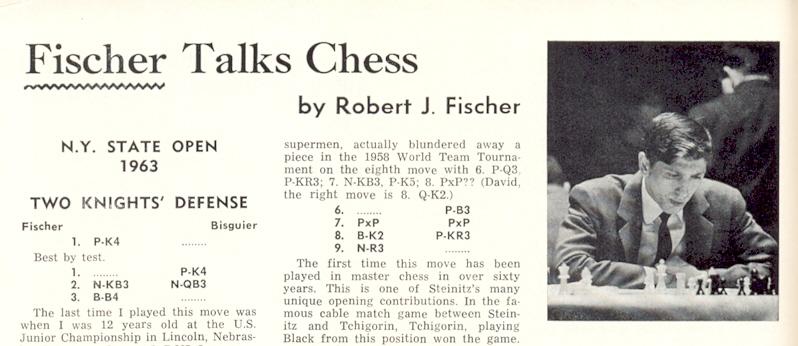
That was also the game in which Fischer discussed and corrected analysis of a Steinitz v Chigorin game which had been given on page 77 of the March 1892 Deutsche Schachzeitung, and for readers who wish to compare the two sets of comments (as well as what appeared in My 60 Memorable Games) we reproduce below the relevant passage from page 302 of the December 1963 Chess Life and the note in the Deutsche Schachzeitung:
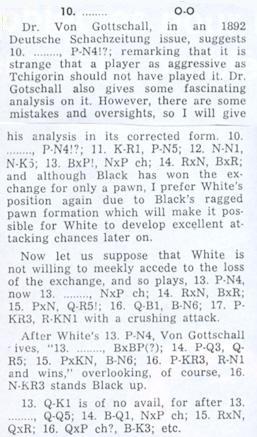
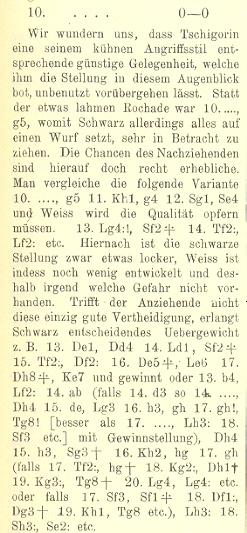
It may be noted that in the penultimate paragraph in Chess Life the pawn exchange given by von Gottschall was omitted, so that Fischer had ...Rg8 at move 16, instead of move 17. Those moves were, however, given accurately in My 60 Memorable Games.
On pages 215-216 of the September 1963 issue Fischer annotated his game against Hans Berliner in that year’s Western Open (‘a model of a tournament compared to some of the foreign ones I’ve been in’). That game is not in his book, even though the closing note in Chess Life reads:
‘It is difficult to find one particular game that is typical of my “style”. This comes close.’
His penchant for taking readers by surprise was shown by his first note to a further game from the same column and the same event, Reinhard v Fischer, which began 1 Nf3 Nf6 2 g3 g6 3 Bg2 Bg7 4 O-O O-O 5 d3 d6:
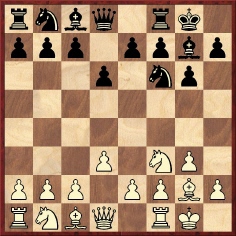
Before looking at Fischer’s assessment of this position, readers are invited to make their own. Is it level? Despite the symmetry, does White retain the advantage of the first move? Not according to Fischer:
‘“Believe it or not”, Black stands better! Now whatever White does, Black will vary it and get an asymmetrical position and have the superior position due to his better pawn structure! In the Filip – Fischer game, Varna, 1962, similarly Black gets the upper hand: 1 d4 Nf6 2 c4 g6 3 g3 c6 4 Bg2 d5 5 cxd5 cxd5 6 Nf3 Bg7 7 O-O O-O 8 Nc3 ...; and Black, breaking the symmetry at the proper time, gets the advantage by 8...Ne4.’
On page 236 of the October 1963 Chess Life (annotating his game against R. Oster at the New York State Open) he wrote that after 1 d4 Nf6 the move 2 Nf3 is ‘a rather common mistake’. For an account of Fischer’s controversial discussion of the Grünfeld Defence on pages 237-238 of the same issue, see pages 146-147 of Chess Facts and Fables.
(4423)
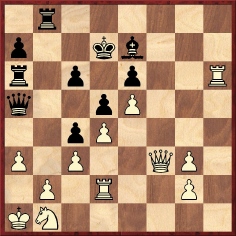
This position (White to move) appeared on page 42 of Bobby Fischer’s Games of Chess (London, 1959), having arisen in his encounter with Mednis in the 1957-58 US championship. Fischer won quickly with 32 Rxe6 and commented:
‘The position is a paradox. Black has poised all of his pieces for attack, and White has placed almost all of his pieces for defense; and yet White has a winning attack. The reason for this is that Black’s king is unprotected except for his KB, and White is actually attacking with three heavy pieces.’
Are there any better examples of paradoxical positions?
(4424)
See too C.N. 4429.
A close-up photograph of Fischer was given on page 48 of The Most Instructive Games of Chess Ever Played by Irving Chernev (New York, 1965), and we note that it is one of several in the book which had appeared in XIV. Schach-Olympiade Leipzig 1960 (page 106):
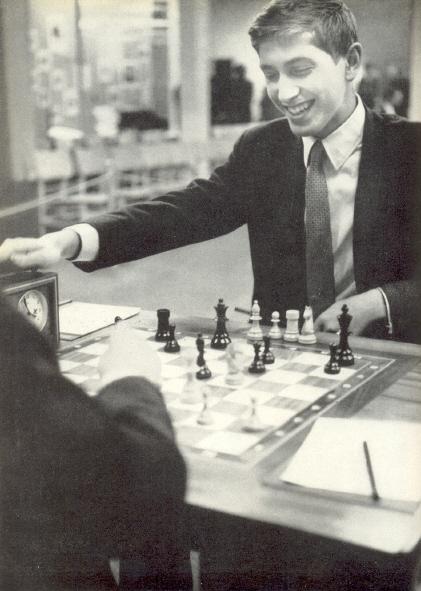
We have been unable to match the position with any recorded Fischer game.
(4504)
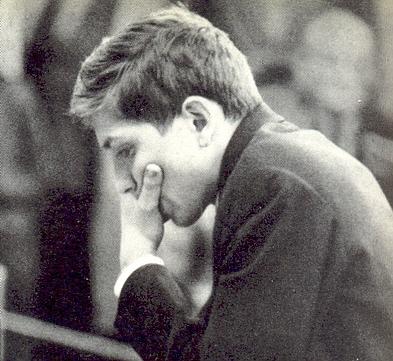
Bobby Fischer
Joop Elderhorst (Rotterdam, the Netherlands) asks about the correct game-score of Barcza v Fischer, Zurich, 1959. Whereas various books and databases state that play ended at move 95, our correspondent points out a story attributed to Tal on page 25 of Russians versus Fischer by D. Plisetsky and S. Voronkov (Moscow, 1994), as well as on pages 29-30 of the 2005 edition (published by Everyman). Below is the latter book’s translation of what Tal purportedly stated:
‘In his game with the oldest competitor, the Hungarian Grandmaster Gideon Barcza, Fischer had no advantage, but, not wishing to let his opponent go in peace, played on to the 103rd move. The game was adjourned three times and the contestants used up two score sheets, but even when there were only the kings left on the board, Fischer made two more moves!. Draw! Stunned by such a fanatical onslaught, Barcza could barely get up from his chair, but Bobby nonchalantly suggested:
“Let’s have a look at the game from the beginning. I’m sure I could have played better at some point!”
Barcza then began pleading:
“Look, I have a wife and children. Who’s going to support them in the event of my untimely death!”’
Exactly where Tal (who was a participant in the tournament; indeed, he won it) made these remarks is unclear, but we have found no contemporary source suggesting that the game continued to move 103. For example, pages 118-119 of the special issue of the Schweizerische Schachzeitung devoted to Zurich, 1959 stated that the game ended in the following position, when White had just captured his opponent’s queen with 95 Qxa4+:
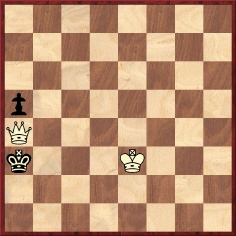
Mr Elderhorst comments:
‘It is hardly likely that another eight moves would be played in a game between masters of such a level. Moreover, for a bare-kings ending to occur Black would have had to allow White to take his pawn.’
(4594)
The conclusion to Fischer’s draw against Botvinnik at the Varna Olympiad in 1962 has also given rise to discussion, on a human level. On page 153 of Analiticheskiye I Kriticheskiye Raboti 1957-1970 (Moscow, 1986) Botvinnik reported that Fischer was distraught as he left the hall. To quote the English translation on page 183 of volume three of Botvinnik’s Best Games (Olomouc, 2001):
‘Only here, with his face [as] white as a sheet, did Fischer shake my hand, and with tears in his eyes he left the hall.’
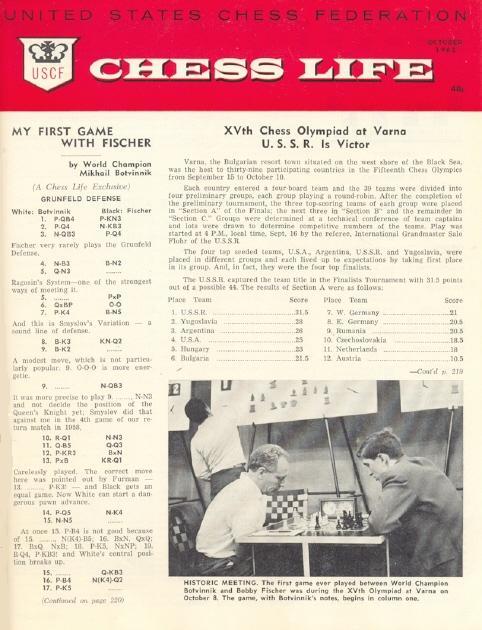
The matter arose on page 137 of the September 1963 Chess World when C.J.S. Purdy was discussing Alexander Kotov:
‘I also knew that he was a very kindly writer. I have never known him to treat anyone unkindly in print. By contrast, his countryman Flohr, a clever journalist, handled Bobby Fischer almost spitefully, when he reported that after he had only succeeded in drawing with Botvinnik in Varna, after having a winning advantage, he left the room and, having reached the corridor, burst into tears. As Fischer probably thought he was alone by then, it was cruel to record such a thing, but Flohr knew it was good “copy”. Kotov would never initiate such a story. Nor would I myself; I am prepared to use it once it has been made public already, for I am not a censor, but I think Kotov is too kind even to do that ...
I do not decry Flohr. There is virtue in sheer truth. But Flohr could have written sympathetically or purely factually, without spiteful overtones.’
Can a reader quote Flohr’s exact words?
(4595)
Which (future) world champion wrote that 1 d4 ‘leads to nothing’?
Since Fischer declared on page 302 of the December 1963 Chess Life that 1 e4 was ‘best by test’ (see C.N. 4423), he is an obvious suspect. And, indeed, it was Fischer who made the seemingly forgotten observation, on page 84 of the April 1964 Chess Life. His notes to the first match-game between Dubois and Steinitz, London, 1862 began:
‘The players of 1862 knew something very valuable that the players of today would do well to make note of: 1 P-Q4 leads to nothing!’
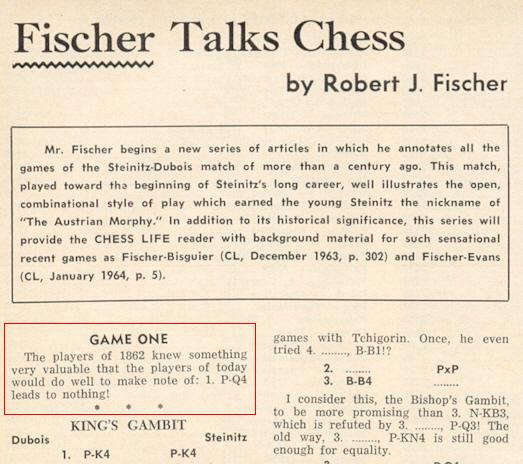
Whatever the spirit in which the remark was penned, it might have been expected to become part of mainstream Fischer lore.
(4641)
Ed Tassinari (Scarsdale, NY, USA) asks what became of the Ecuadorian player César Muñoz, who defeated Bobby Fischer in the 1960 Olympiad in Leipzig.
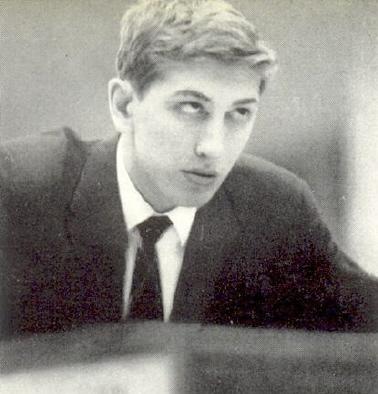
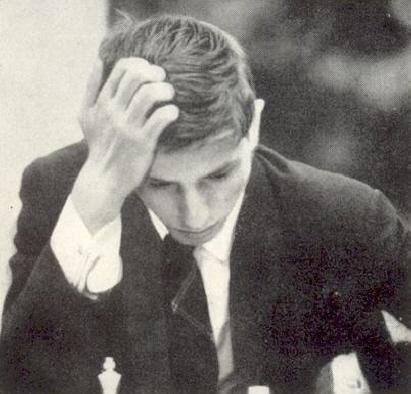
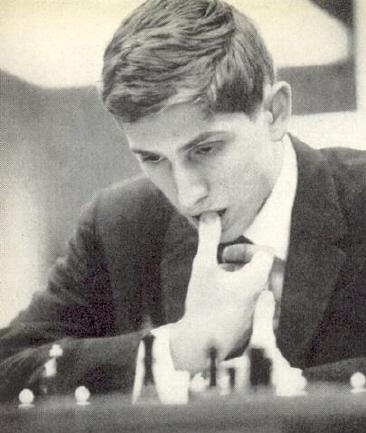
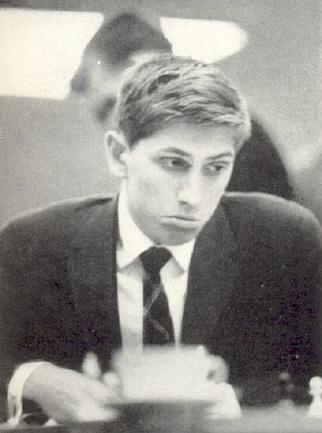
The portraits of Fischer reproduced above appeared on pages 42-43 of XIV. Schach-Olympiade Leipzig 1960, published by Sportverlag Berlin.
(4657)
Javier Asturiano Molina (Murcia, Spain) draws attention to the following passage about Bobby Fischer on page 483 of ‘Garry Kasparov on Fischer My Great Predecessors Part IV with the participation of Dmitry Plisetsky’ (London, 2004):
‘In 1977 he easily defeated a computer at the Massachusetts Institute of Technology (3-0), and he crushed his teacher Collins in a training match (+16 –1 =3).’
Our correspondent asks what is known about this ‘training match’ against John W. Collins (1912-2001).
(4688)
Wanted: information about any photographs of Fischer taken between the mid-1970s and his re-appearance in 1992.
(4689)
An addition to our list of monographs on Fischer, Games of Bobby Fischer, has been provided by Michael Clapham, who writes:
‘There is no mention of any author, publisher, place or date of publication, but I think that it was published in the Philippines in about 1972. It contains a short biography of Fischer and 25 annotated games from 1965 to 1971.’
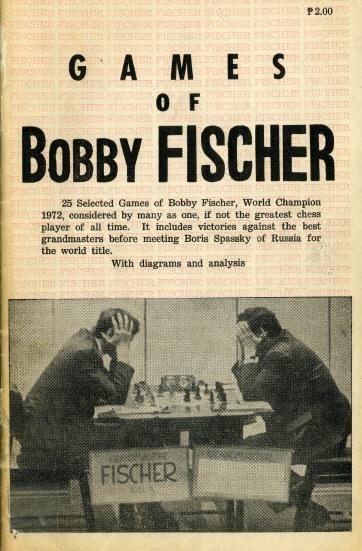
The front-cover text (‘... considered by many as one, if not the greatest chess player of all time’) is unfortunate.
(4707)
A further addition to our list of volumes about Fischer comes from Calle Erlandsson (Lund, Sweden): Fischer. 100, published in 2003 by Alfil Chess Books in Bangalore.
Our correspondent remarks:
‘It contains 100 games without annotations. There are some diagrams and just short remarks like “A wonderful game” and “Typical Fischer”. No dates or events are mentioned for any of the games. The booklet is described as volume one in a “Classics series – 1”, but I do not know whether further volumes in the series have been issued.’
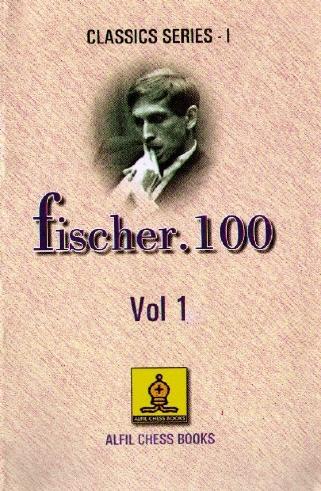
(4721)
Yakov Zusmanovich (Pleasanton, CA, USA) draws attention to the first monograph on Fischer to be published since the master’s death: Vybrané Partie Roberta Fischera by V. Babula, Z. Hrácek, R. Biolek, D. Kanovský and P. Šimácek.
(5553)
Our compilation of books about Bobby Fischer (a list often misappropriated by other webpages) includes Bobby Fischer Un genio travieso by Frank Edwin Gormann (Buenos Aires, 1973), and it is only recently that we acquired a copy, thanks to Horacio Paletta (Buenos Aires).
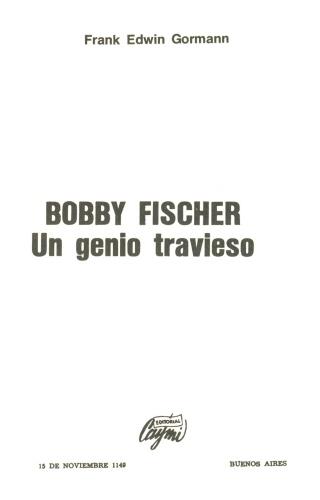
The 121-page work comprises a brief biographical section on Fischer and 15 annotated games. About F.E. Gormann we have no information.
(6572)
An addition to our list has been received from Juan Carlos Sanz Menéndez (Madrid): Fischer sus 200 mejores by Luis Matos. It comprises 101 pages and has 200 games, the last being the 21st game in the 1972 match against Spassky (the book’s only coverage of that contest). A brief biography is included, and some notes are taken from Fischer’s My 60 Memorable Games. It has a mixture of the Spanish descriptive notation and the algebraic notation. There are no publication details, but our correspondent believes that the book appeared in Venezuela, where Matos was active (writing chess columns for the newspaper Universal in Caracas, as well as articles under the pseudonym ‘Jaque Matos’). The front-cover photograph of Fischer is a reverse shot.
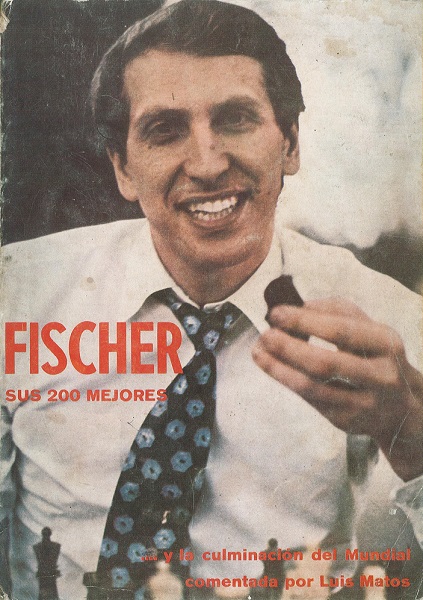
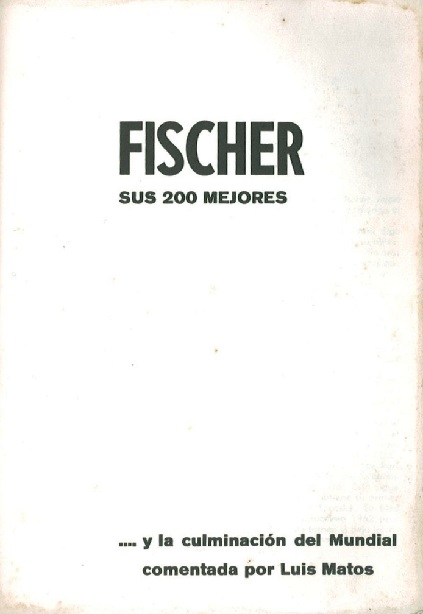
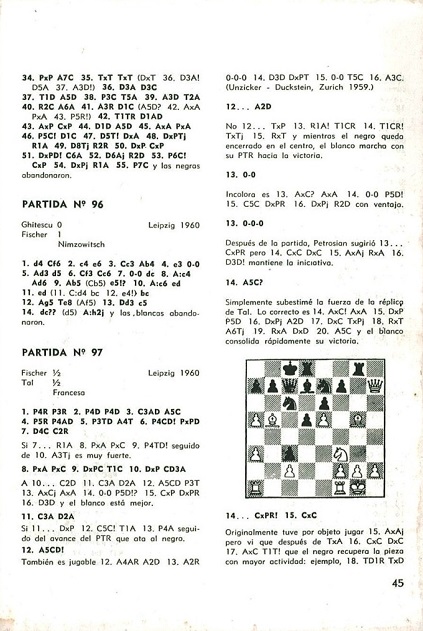
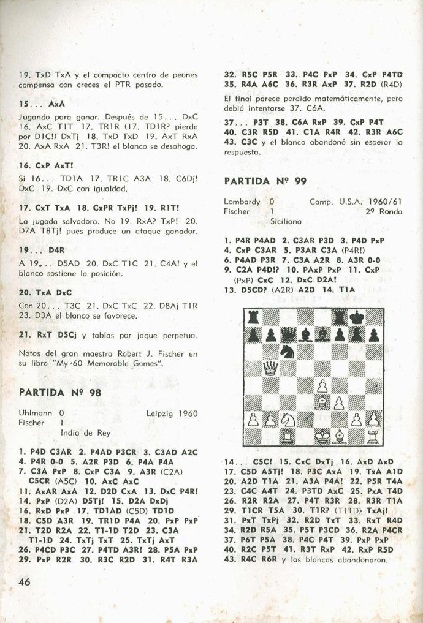
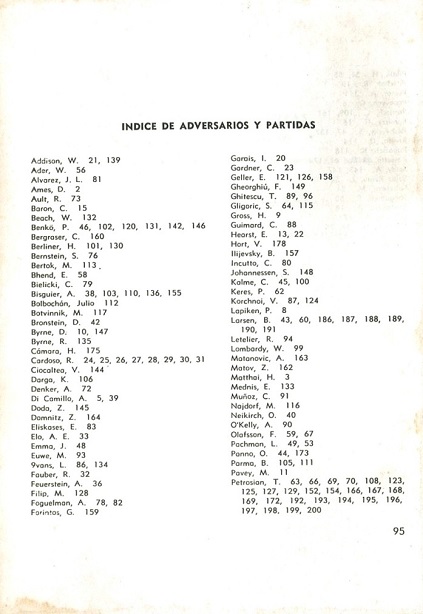
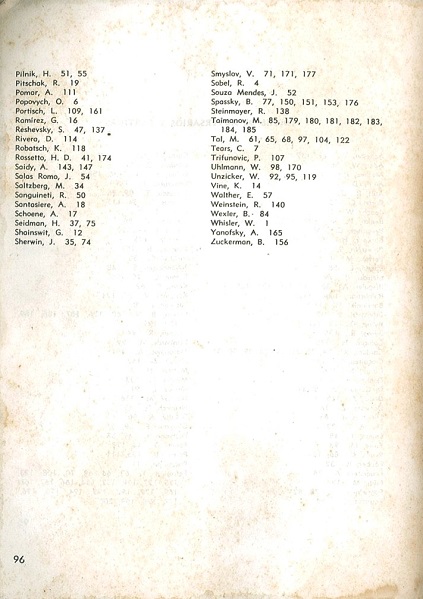
(8944)
Aðalsteinn Thorarensen (Reykjavik) draws our attention to a new book in Icelandic, Yfir farinn veg með Bobby Fischer by Garðar Sverrisson:
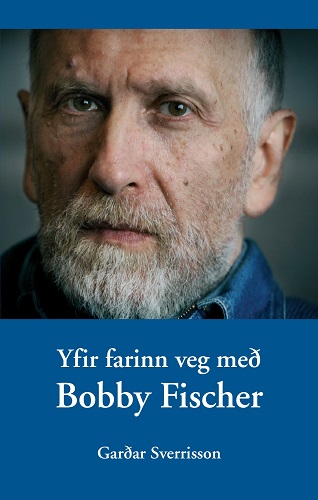
(9568)
C.N. 9568 mentioned Yfir farinn veg með Bobby Fischer by Garðar Sverrisson (Reykjavik, 2015), and C.N. 9600 drew attention to a particular point: the author’s categorical statement that Fischer had nothing to do with My 61 Memorable Games.
An English translation, by Maria Helga Guðmundsdóttir, of Sverrisson’s ‘personal memoir’ has now been published, a 224-page hardback entitled Bobby Fischer The Final Years (Reykjavik, 2019).
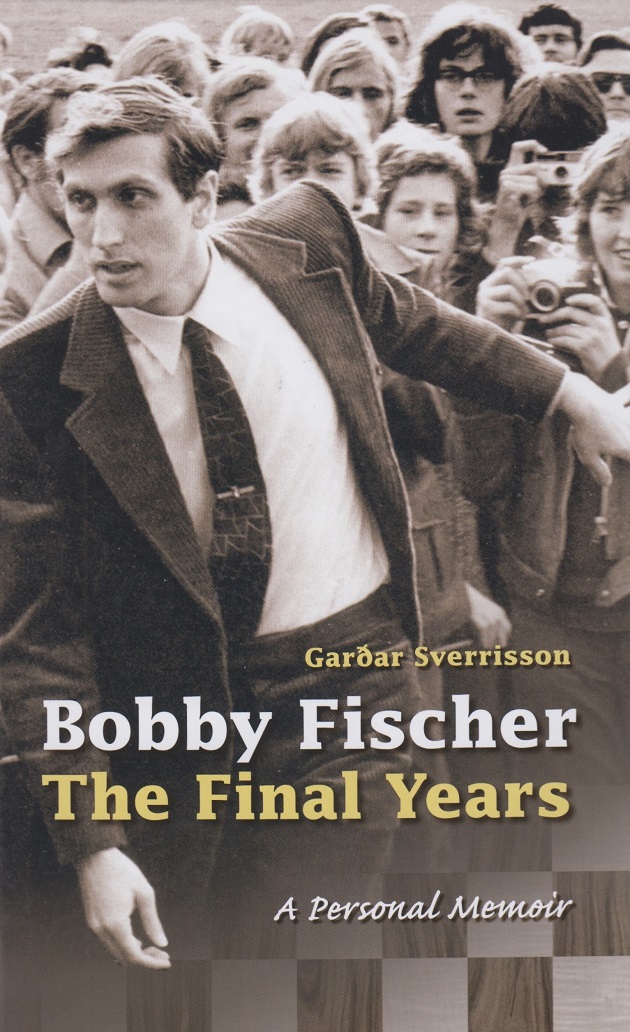
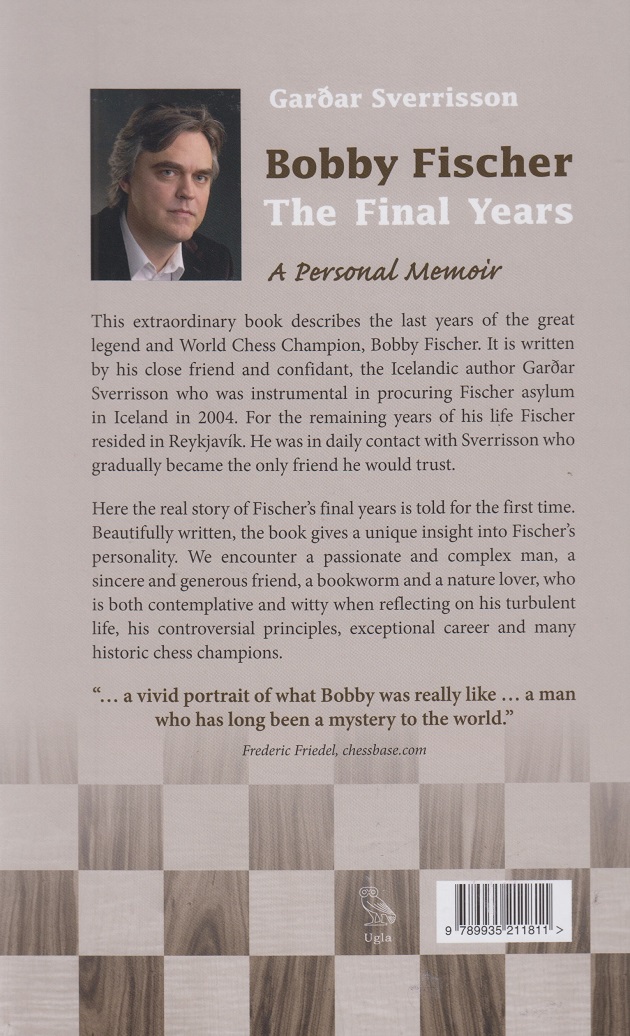
Among the many dozens of volumes about Fischer, Sverrisson’s exceptionally informative and gripping work stands out, and for as long as interest in Fischer endures, it will be avidly read and quoted.
(11654)
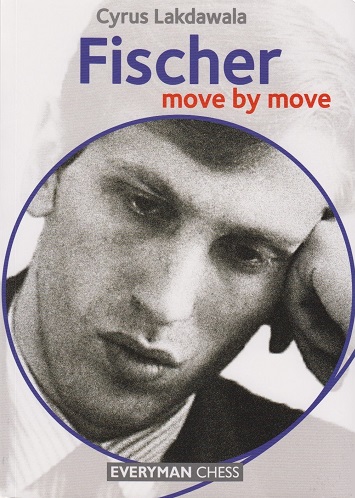
The claim on the cover that Lakdawala ‘is a highly prolific and respected author’ is half right. On page 5 a minuscule ‘bibliography’ omits virtually all the important books on Fischer, but includes a potboiler by Eric Schiller, and lists My 60 Memorable Games with the information ‘Batsford, 1969’. In his annotations, as ever, Lakdawala writes 50 words where a respected author would write five or, more probably, none.
(9603)
Before Cyrus Lakdawala’s Capablanca move by move (C.N. 10344) is returned to the shelf, a passage from page 316 may be noted:

Faulty punctuation apart, a more scrupulous publisher than Everyman Chess would have made Mr Lakdawala either verify the matter or delete the paragraph. Readers deserve better than talk of an article ‘titled something like’ and ‘a quote which went something like’.
Dan Scoones (Port Coquitlam, BC, Canada) has kindly found the article, ‘Unlucky Heat Wave’. It was published not in Canadian Chess Chat Magazine but in Chess Canada, and not in 1972 but in August 1971 (pages 17-18).
Larsen annotated the first game of his Candidates’ semi-final match against Fischer, and his opening paragraphs did indeed place heavy emphasis on the weather:
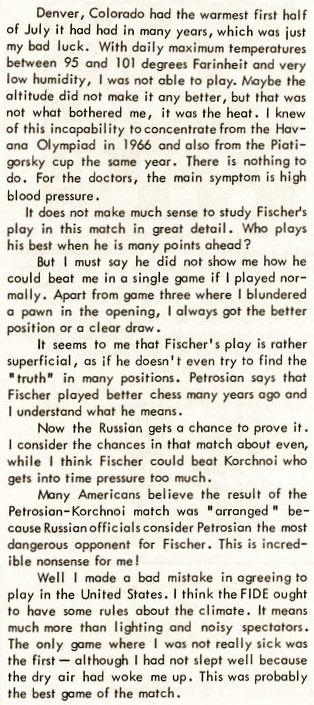
(10345)
We have three editions (not the first, published in 2010) of Shakhmatny pamyatnik Fischeru by V.A. Leonov. Issued in Nizhny Novgorod and dated, respectively, 2011, 2016 and 2017, they are small-format, 62-page booklets.
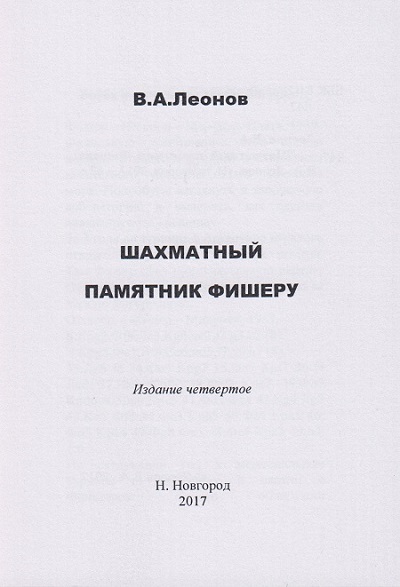
An oddity is that the impressum page states that the print-run for the 2011 edition was 25 copies, and that only five copies of the two later editions were published.
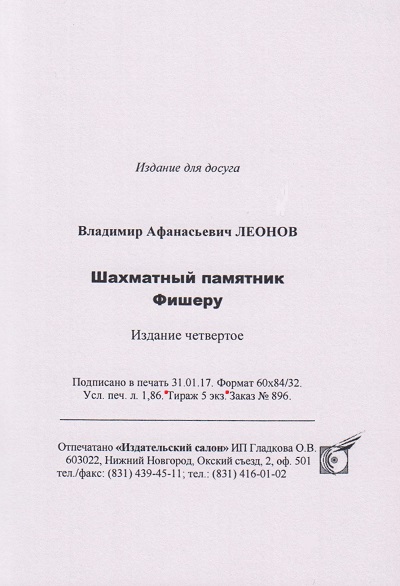
(10561)
From Richard Reich:
Michael Basman published four small books in a series called Turnover Chess. They ranged in length from 23 to 47 pages, and each consisted of one game, presented with notes and diagrams. No date of publication was indicated.’
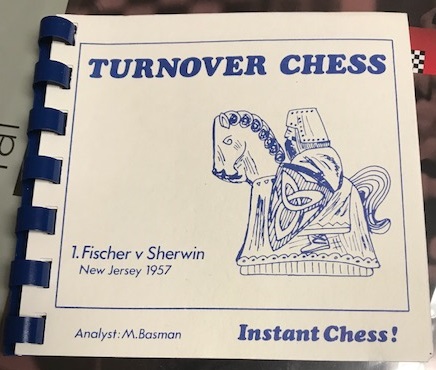
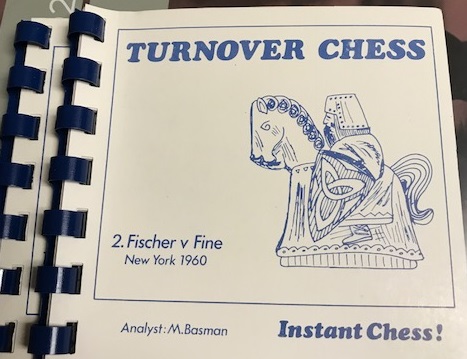
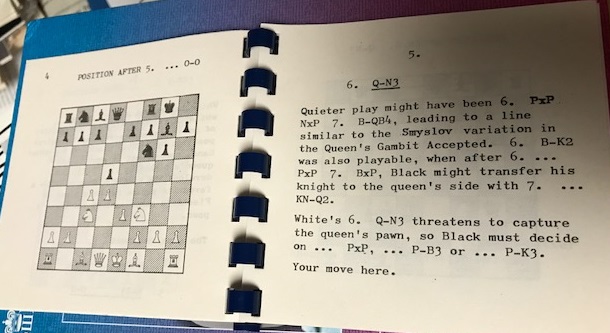
The games were Fischer’s wins over Sherwin (New Jersey State Open Championship, 1957), Fine (New York, 1963 – and not 1960 as stated on the cover and on the first page), Weinstein (US Championship, 1960-61) and Gudmundsson (Reykjavik, 1960).
(10622)
Just received: Bobby Fischer en Cuba by Miguel A. Sánchez and Jesús Suárez (‘Printed by Amazon Italia Logistica S.r.l., Torrazza Piemonte (TO), Italy’, 2019):
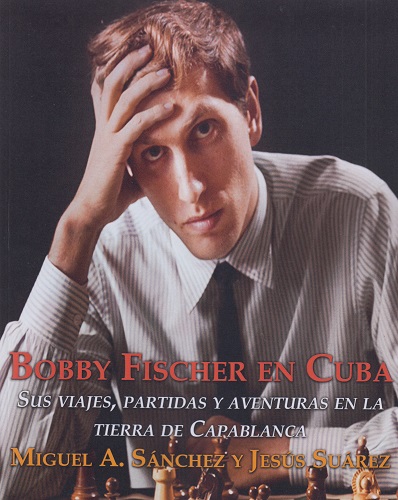
Far from diligently presenting fresh, worthwhile information, the book, sullied with an inordinate number of misspelt names, is mainly padding and irrelevancies. For example, pages 28-32 and pages 293-296 are taken up with games between Capablanca and Whitaker.
(11722)
Our list of books about Fischer and Kasparov was discontinued before the appearance of a detailed monograph by John Donaldson, Bobby Fischer and His World (Los Angeles, 2020):
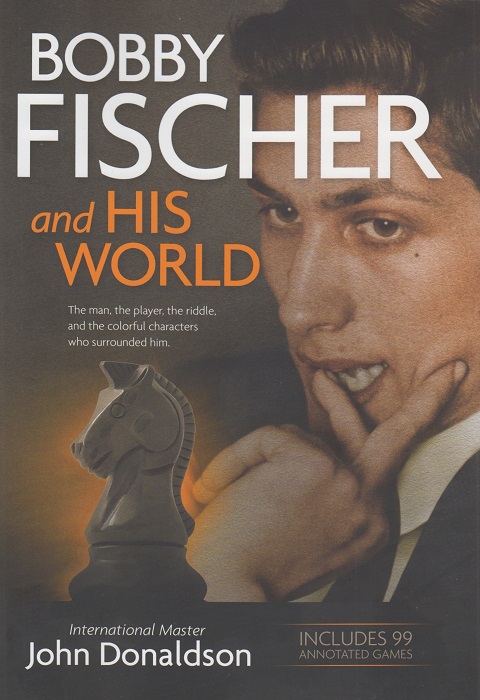
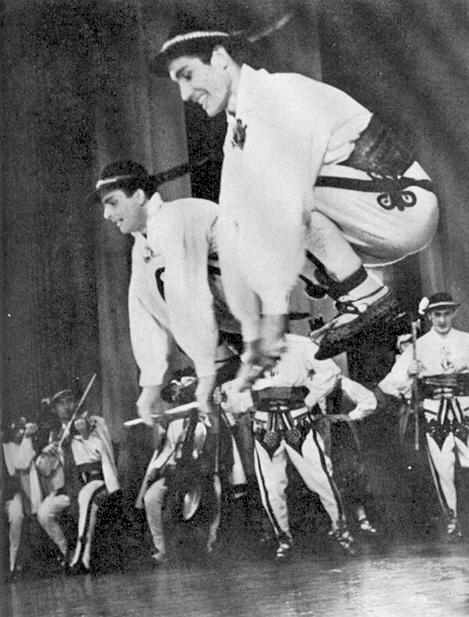
This photograph of Fischer was published on page 107 of the May 1964 Chess Life, which stated that it came from the ‘Mazowsze Polish Song and Dance Co.’.
(4708)
From James J. Barrett (Buffalo, NY, USA):
‘There is a bizarre photo of “Fischer” in Chess Life for May 1964 (page 107). He is outfitted in the full regalia of a Polish peasant and is jumping high along with others, similarly dressed, in a chorus line. The credit says “Mazowsze Polish Song and Dance Co., reproduced through courtesy of Hurok Attractions, Inc.” Can this truly be Fischer? Not one word of follow-up in subsequent issues could I find – no letters to the Editor, and no denial by Bobby, who was and is not one to be trifled with. (I might add that Fischer was contributing “Talk Chess” to Chess Life at the time.) My final feeling is that the picture is a joke.’
Information, please ...
(1325)
‘Robert James Fischer est né en 1943 à New-York. Il a acquis ses premiers rudiments d’échecs à six ans, grâce à son grand frère.’
That appears on page 10 of Mes parties favorites de Fischer, Spassky, Kortchnoï, Larsen [4x25] by Paul Keres and Iivo Nei, a recent publication by Editions Chessy in Spain. The error regarding Fischer’s birth-place was on page 9 of the original Estonian edition (Tallinn, 1975), which, however, correctly stated ‘sister’ rather than ‘brother’.
Fischer himself gave the basic facts on page xi of Bobby Fischer’s Games of Chess (London, 1959):
‘I was born in Chicago, Illinois, on March 9, 1943, and learned the chess moves early in 1949 from my sister Joan, who was eleven.’
C.N. 3336 (see page 256 of Chess Facts and Fables) quoted an instance of Reuben Fine writing that Fischer was ‘born in Brooklyn’.
Tailpiece: what is the earliest known photograph of Fischer?
(4769)
We are grateful to David DeLucia (Darien, CT, USA) for permission to reproduce two photographs which, as mentioned in C.N. 6189, were taken in January 1953 and are on page 11 of his book Bobby Fischer Uncensored:
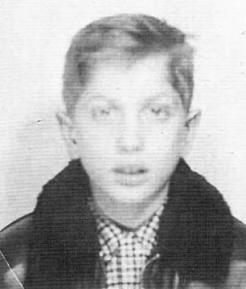
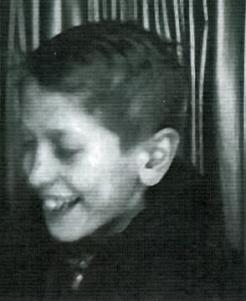
(6193)
The first page of the plates section in Endgame by Frank Brady (New York, 2011) has ‘the earliest known photograph of Bobby Fischer, sitting on his mother’s lap in 1944, when he was one year old’.
(6959)
Milan Ninchich (Macquarie, ACT, Australia) sends an extract from page 41 of Barbra The Way She Is by Christopher Andersen (London, 2006):
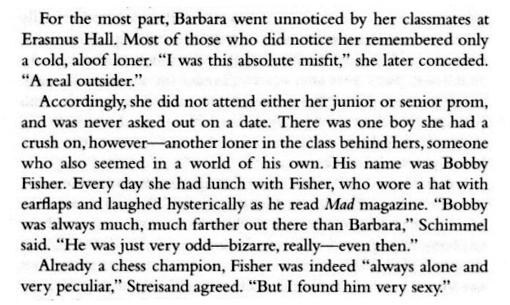
The Erasmus connection is well known, but where did the quotes about ‘Fisher’ come from?
The photograph below, from page 114 of the April 1959 Chess Review, shows Fischer at the time he was a student at Erasmus Hall:
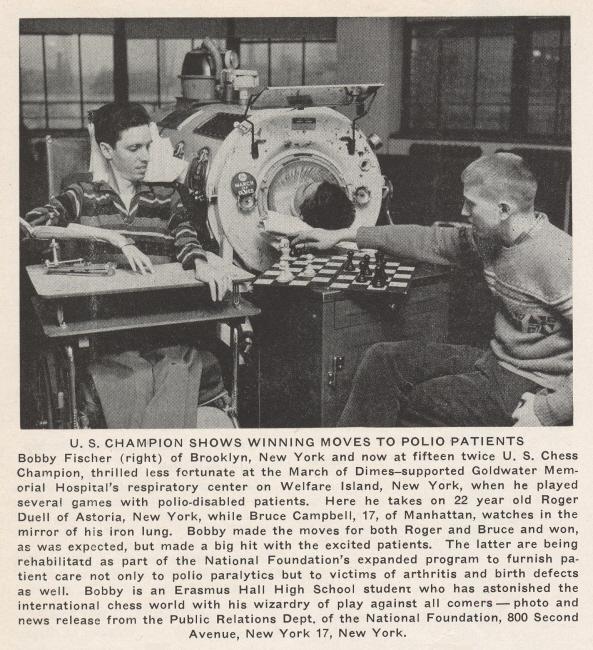
(4966)
Ronald Young (Bronx, NY, USA) notes an interview with Barbra Streisand on pages 79-107 and 193-200 of Playboy, October 1977, with the following on page 91:
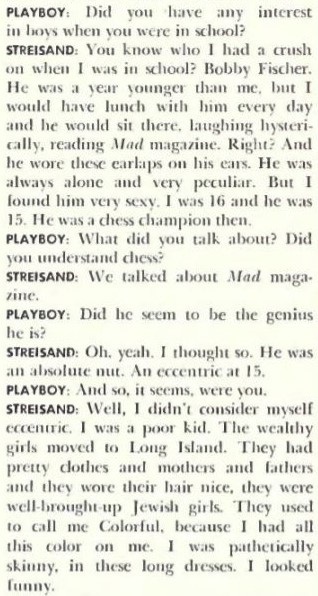
(11267)
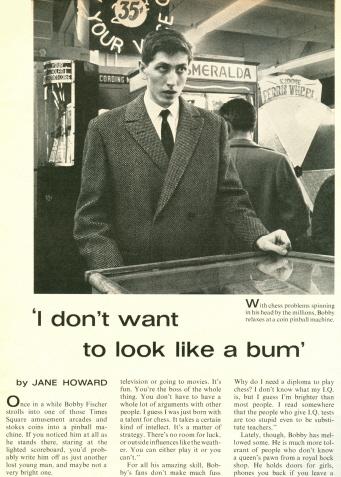
An article about Bobby Fischer on pages 97, 98 and 100 of Life, 21 February 1964 contains a number of colourful observations ascribed to the young master, but is it known that they are ‘safe’? As so often, we hesitate to quote from such an article, bearing in mind Fischer’s remark ‘A lot of these quotes about me are not correct’ (see Instant Fischer).
(5200)
In an article about Fischer at ChessBase.com on 20 January 2008 we commented:
Indeed, the largest single category of loose ends regarding Bobby Fischer arguably relates to remarks attributed to him without any precise, reliable source. A major contribution to the cause of chess truth, and to Fischer’s memory, would be a webpage featuring only those quotes which are known to be correct and for which exact citations are supplied.
Olimpiu G. Urcan (Singapore) notes in the UCLA Library a fine photograph of Mr and Mrs Piatigorsky watching Larsen and Fischer in play (Los Angeles Times, 16 July 1966).
(5443)
A surprising number of newspapers and chess magazines handled Fischer’s death in pedestrian fashion, with some not even bothering to pretend to bother. In contrast, three articles have, from our reading, stood out as being of permanent worth:
(5460)
John Bleau (Quebec, Canada) asks what the source is for the statement that Fischer had an IQ of about 180.
At present, the best we can offer is the following passage from page 22 of Profile of a Prodigy by Frank Brady (New York, 1973):
‘Recently, I spoke to a professor who used to work in the Grade Advisor’s Office at Erasmus Hall while Bobby was a student there.
“His IQ was in the 180s”, he said. “Give or take a point or two. He was definitely a ‘high’ genius, but with no interest or capacity for schoolwork.”’
(5471)
Javier Asturiano Molina mentions that a figure of 184 was given, without substantiation, in two books by Pablo Morán. See the inside front cover of “Bobby” Fischer su vida y partidas (Barcelona, 1971/1972) and page 94 of Los niños prodigio del ajedrez (Barcelona, 1973).
(5475)
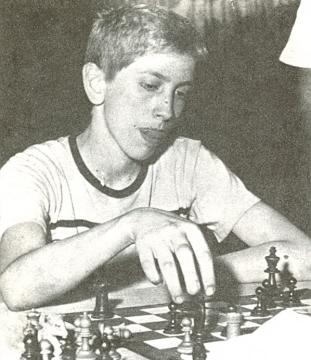
Bobby Fischer
‘The boy’s intelligence quotient has never been made public, but school authorities indicate that it is high in the upper percentile.’
This was written by Harold C. Schonberg in an article entitled ‘Fourteen-Year-Old “Mozart of Chess”’ in the New York Times, 23 February 1958. See page 51 of The Joys of Chess by Fred Reinfeld (New York, 1961), which reproduced the article.
(5491)
From Michael Clapham:
‘The dust jacket of The Golden Dozen by Irving Chernev (Oxford, 1976) lists other “Oxford Chess Books”, and the first of these is Chess technique and Bobby Fischer by R.E. Burger. I know of no such work being published, but presumably it would have been the same as Burger’s The Chess of Bobby Fischer, which the Chilton Book Company, Radnor had brought out in 1975.’
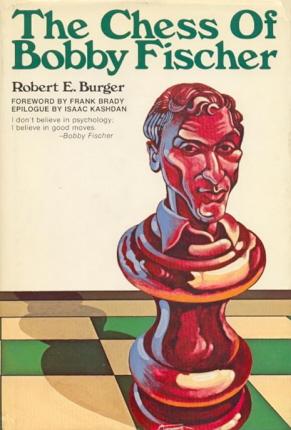
Further to C.N.s 5471, 5475 and 5491, we add that in his Foreword to the US book (page viii) Frank Brady wrote:
‘In previous writings I have cited Fischer’s IQ as in the range of 180, a very high genius. My source of information is impeccable: a highly regarded political scientist who coincidentally happened to be working in the grade adviser’s office at Erasmus Hall – Bobby Fischer’s high school in Brooklyn – at the time Fischer was a student there. He had the opportunity to study Fischer’s personal records and there is no reason to believe his figure is inaccurate. Some critics have claimed that other teachers at Erasmus Hall at that time remember the figure to be much lower; but who the teachers are and what figures they remember have never been made clear.’
(5876)
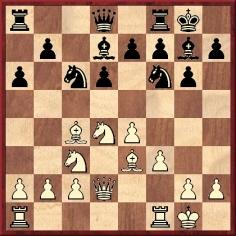
The above position arose after 1 Nc3 g6 2 e4 c5 3 Nf3 Bg7 4 d4 cxd4 5 Nxd4 Nc6 6 Be3 d6 7 Bc4 Nf6 8 f3 O-O 9 O-O Bd7 10 Qd2 a6 in the rapid game Shipman v Fischer, New York, 1971. See, for instance, pages 318-319 of volume three of Bobby Fischer (Madrid, 1993).
Eduardo Bauzá Mercére (New York, NY, USA) points out that the position after Black’s tenth move had occurred in the following game, from a four-college tournament:
N. Hull (Yale) – Frederick Bayard Barshell (Columbia)
New York, 31 December 1902
Sicilian Defence
1 e4 c5 2 Nf3 Nc6 3 d4 cxd4 4 Nxd4 g6 5 Be3 Bg7 6 Nc3 Nf6 7 Bc4 d6 8 O-O O-O 9 f3 Bd7 10 Qd2 a6 11 a3 Rc8 12 Bb3 Kh8 13 Rad1 Kg8 14 Nd5 Nxd5 15 exd5 Ne5 16 Rfe1 Nc4 17 Bxc4 Rxc4 18 b3 Rc8 19 a4 (‘P-KR4’) 19...e5 20 dxe6 fxe6 21 c4 Be5 22 f4 Bxf4 23 Bxf4 e5 24 Bh6 exd4 25 Bxf8 Qxf8 26 Qxd4 Rc6 27 Rf1 Bf5 28 b4 Qc8 29 Rc1 Be6 (‘P-R3’) 30 b5 axb5 31 axb5 Rc5 32 Qxd6 Bf5 33 Qe7 Rxc4 34 Rxc4 Qxc4 35 Qxb7 Bd3 36 Qb8+ Resigns.
Source: The Sun (New York), 1 January 1903.
The opening (a ‘Rauzer Sicilian’) is to be noted. As indicated in the game-score above, at two points our correspondent has amended the moves given in the Sun, to make sense of the ensuing play.
For Black’s name, the newspaper report had both ‘Barshell’ and ‘Barshall’. The details we have incorporated in the game heading come from page 47 of Columbia University Alumni Register 1754-1931 (New York, 1932). His identity is confirmed by the report on the tournament in the New York Times, 30 December 1902.
(5472)
Wanted: the earliest known appearance of the famous quote ascribed to Bobby Fischer, ‘All I want to do, ever, is play chess’.
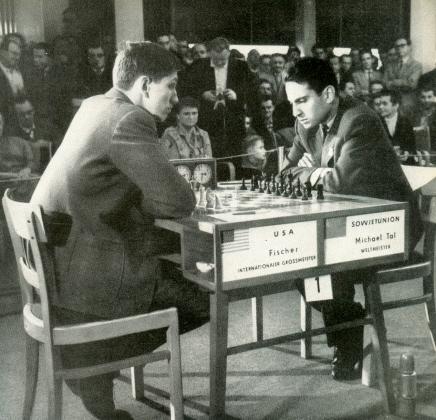
Bobby Fischer and Mikhail Tal (from page 41 of XIV. Schach-Olympiade Leipzig 1960)
(5534)
C.N. 5534 asked, without result so far, about the origins of a remark commonly ascribed to Fischer: ‘All I want to do, ever, is play chess.’
Now, Chris Boys (Tamil Nadu, India) refers to another alleged comment of Fischer’s: ‘I don’t believe in psychology. I believe in good moves.’ A number of Internet outlets indicate that Fischer made the remark to the Washington Post in 1972. What evidence can be found?
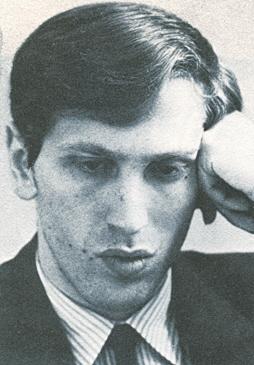
Bobby Fischer
(5824)
C.N. 5824 gave the Fischer quote, ‘I don’t believe in psychology. I believe in good moves’, which is seen regularly, without a specific source. Mark McCullagh (Belfast, Northern Ireland) notes that it appeared in the New York Times of 4 July 1972, and below we give the details.
The article, ‘Fischer Leaves for Iceland After Briton Adds to Prize’ by Peter Kihss, was published on pages 1 and 14. A number of remarks by Fischer were quoted, and the relevant passage, on page 14, is:
‘Fischer’s own comments came during an interview at the home of Fred M. Saidy, musical-comedy author, at 2 Cedar Lane, Douglaston. The press had been invited by Mr Saidy’s son Anthony, a physician and a chess master who often competes in international play.
... Asked whether the backing and filling, the demands he was reported to have made and the objections he was said to have lodged were an effort to make a psychological impact on his opponent, Fisher [sic] replied:
“I don’t believe in psychology. I believe in good moves.”’
(5830)
Regarding the observation ‘I don’t believe in psychology. I believe in good moves’, Stefan Müllenbruck (Trier, Germany) draws attention to a brief YouTube video clip of Fischer.
(5856)
C.N. 5534 asked for the earliest known appearance of the famous quote attributed to Bobby Fischer, ‘All I want to do, ever, is play chess’.
From page 98 of Life, 21 February 1964, in the article ‘One-Track Mastermind’ by Jane Howard which was referred to in C.N. 5200:
‘Bobby hasn’t the slightest flicker of doubt who he is or what he wants to do. In an age that idolizes well-roundedness he has a single aim: “All I want to do, ever”, he says, “is play chess”.’
From page 100:
‘“Women are lousy at chess”, says Bobby. “They’re meant to stay home. I bet I could take any man of average intelligence, a rank beginner, give him oh, around two months of lessons, and have him at the end of that time beat the women’s world champion.’
Concerning his daily routine in Brooklyn, Fischer was quoted as follows on the same page:
‘... I pick up the Times, see if it’s got anything on chess, then read the News. But mostly I read chess magazines. I get around ten a month. You have to keep up. I’ve learned enough Russian and some of those languages to make out their chess magazines. Chess is much more popular other places than here. The Latvian chess magazine has a circulation of 30,000 a month; ours is only 9,000.’
The final two paragraphs of the article (also on page 100):
‘Always in his mind are the 64 squares of a chessboard, with its pieces arranged in one of millions of possible combinations. Always he is thinking of his next match.
“It’s not exactly easy, keeping up the championship”, he says. “It’ll keep me busy all the rest of my life.”’
Page 97 of Life, 21 February 1964
The article was mentioned on page 72 of Chess Review, March 1964:
‘Life magazine gives Robert J. Fischer a fairly good story in its 21 February issue. We can’t subscribe to all it says nor all it quotes Fischer on. It is “fairly good”, however, in that it doesn’t try to present his worst side nor make chess too queer for “regular people”. Yet there is some adverse slanting, and the photos tend to catch Fischer at beatnik angles.
When can we expect a good article from outside publications?’
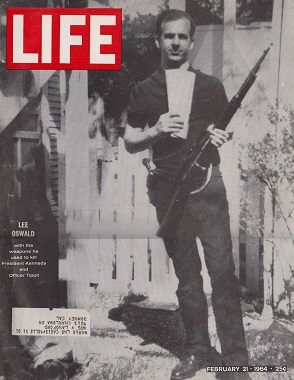
(9010)
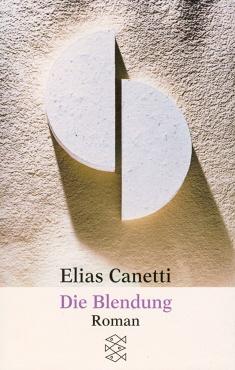
The chessplaying Fischerle/Fischer coincidence in Elias Canetti’s 1935 novel Die Blendung (published in English in the 1940s under the titles Auto-da-Fé and The Tower of Babel) is too well known to be discussed here, but when and by whom was the coincidence first pointed out, and did Canetti ever comment on it?
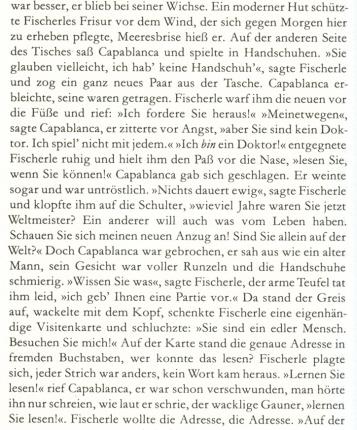
Above is an excerpt from page 380 of the 2005 Fischer Taschenbuch Verlag edition, while the passage below comes from page 200 of Auto-da-Fé:

(5507)
From page 117 of Chess is my Life by Victor Korchnoi (Zurich, 2005):
‘It does not seem possible, but one thing that I don’t have is a photo of myself with Bobby Fischer. Nevertheless, between 1960 and 1970 we contested eight games, in which we each scored two wins.’
In the meantime Korchnoi has doubtless noted the photograph taken at Curaçao, 1962 which is available online in a ChessBase article and appears on page 73 of Curaçao 1962 by Jan Timman (Alkmaar, 2005). That richly-illustrated book also has, on page 33, a group photograph in which Fischer is standing behind Korchnoi.
(5514)
Costas Karayiannis (Loughton, England) asks for corroboration of an episode related by Tal on page 124 of his book The Life and Games of Mikhail Tal (New York, 1976). The same text, except for minor linguistic changes, appeared on page 123 of the Cadogan Chess algebraic edition (London, 1997).
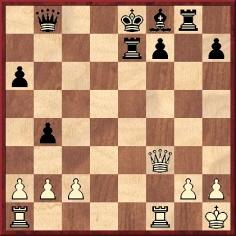
Tal reported that in this position, from a game in the Candidates’ tournament at Bled, 1959:
‘... Fischer first wrote down the move 22 Rael!, without doubt the strongest, and wrote it not in his usual English notation but in European, almost Russian. Then he not very deftly pushed the scoresheet towards me. “He’s asking for an endorsement”, I thought to myself, but how was I to react? To frown was impossible, if I smiled he would suspect “trickery”, and so I did the natural thing. I got up and began to calmly walk up and down the stage. I met Petrosian, made some joke to him, and he replied. The 15-year-old Fischer, who was essentially still only a large child, sat with a confused expression on his face ...’
Fischer then wrote down and played a different move, 22 Qc6+, and went on to lose. Tal added:
‘When I later asked Fischer why he hadn’t played 22 Rae1, he replied: “Well, you laughed when I wrote it down.”’
Our correspondent asks whether any confirmation of the incident appears in other sources. He notes that Fischer made no reference to it in My 60 Memorable Games (game 17).
(5747)
Fischer’s opponent was Jonathan Penrose, at the Leipzig Olympiad, 1960.
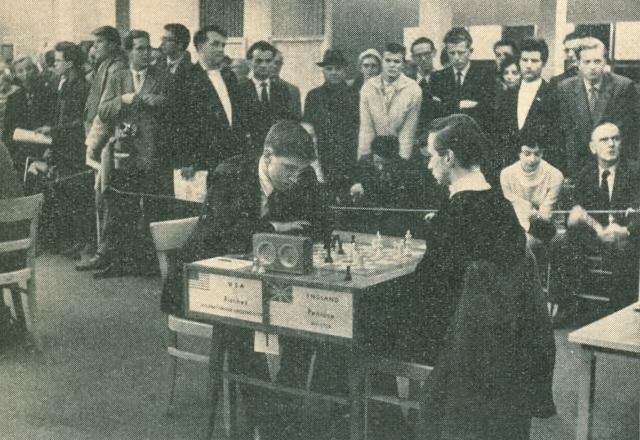
The photograph appeared on page 11 of Schach-Echo, 8 January 1961.
(5818)
Taylor Kingston (Shelburne, VT, USA) writes:
‘Guillermo Cabrera Infante’s account of Capablanca supposedly falling asleep while playing Marshall in 1909 bears a great resemblance to an incident involving Fischer and Bisguier. One account is on page 197 of The Even More Complete Chess Addict by M. Fox and R. James (London, 1993):
“It’s New York 1963, the last round of the American championship. Bisguier and Fischer are equal first. Fischer doesn’t make a move for a long time. Bisguier looks up and sees his opponent is fast asleep. In another half-hour, the great Bobby’s clock will fall, making Bisguier the champ. That’s where we come to the most gracious blunder of all. In Bisguier’s words: ‘I made a bad move. I woke up Bobby Fischer.’ And of course Bobby, after a couple of yawns, went on to collect his fifth US title.”
This is almost identical to what Cabrera Infante reports that Marshall said (“I made the worst move of the game. I woke up Capablanca”). Could he have confused Capablanca-Marshall with Fischer-Bisguier?
Whether he did or not, there is already ample confusion about if and when Fischer may have fallen asleep while playing Bisguier. Contemporary reports on the game which was referred to by Fox and James, and was played in the last round of the US Championship in New York on 3 January 1963, mention no such incident (see, for example, Chess Life, January 1963, page 3; Chess Review, February 1963, page 63 and March 1963, pages 76-77).
Frank Brady’s Profile of a Prodigy (New York, 1973) is unsure, but indicates that it was more likely in the Western Open at Bay City, Michigan, in July 1963. Page 70 describes Fischer playing an all-night set of high-stakes blitz games and then states:
“The next morning, Fischer faced Bisguier, and though perhaps apocryphal, it has been said that he was so tired he actually fell asleep at the board and had to be awakened. It didn’t affect his play, however, as he defeated Bisguier soundly.”
Bisguier himself, though, places the incident at the New York State Open, held in Poughkeepsie, NY in August-September 1963, on page 69 of The Art of Bisguier, Selected Games 1961-2003 (Milford, 2008):
“Paired against Bobby in the New York State Open that year, I noticed that he was taking a long time to move. Then I saw that he’d fallen sound asleep. In a few minutes the flag on his clock would fall, and he’d lose on time. That’s not the way I like to win games, tourneys or titles. So I made what some called my biggest blunder of the tournament. I awakened Fischer. Bobby yawned, made a move, punched his clock and proceeded to beat me. It ended up as Game 45 in his My 60 Memorable Games. Later I heard that Fischer had stayed up late the previous night playing speed chess for money.”
Brady seems to have confused the Michigan and New York tournaments. Whether Cabrera Infante has confused Fischer with Capablanca, I cannot say, but the two accounts are remarkably similar.’
We note that a) the above-quoted text by Messrs Fox and James also appeared on page 149 of The Complete Chess Addict (London, 1987) and b) the Fox/James book was referred to, in another context, in Cabrera Infante’s ill-informed essay on Capablanca. Indeed, he clearly used it for a number of his ‘facts’.
(5900)
See too Chess and Sleep.
Some observations by Wolfgang Heidenfeld on page 9 of the January 1966 BCM (in D.J. Morgan’s Quotes and Queries column):
‘In connection with the various “best game” lists and their coupling with specific masters, it has occurred to me that there is a slight ambiguity in the meaning of the term “best game”. Take Fischer as an example. The game which Fischer played best may be the magnificent brilliancy against Donald Byrne, which he won at the age of 13; or it may be his win against Gligoric at the Candidates’ tournament, 1959; or again it may be the much-advertised “game of the century” [sic] against Robert Byrne. Yet I would call none of these “Fischer’s best game”, because the opposition did not play well enough. Fischer’s best game – that is the best game in which Fischer was involved – was undoubtedly his first-round draw against Gligoric at the Bled tournament, 1961.’
The draw is game 30 in Fischer’s My 60 Memorable Games. Heidenfeld annotated it on pages 145-146 of his posthumous book Draw! (London, 1982).
(6022)
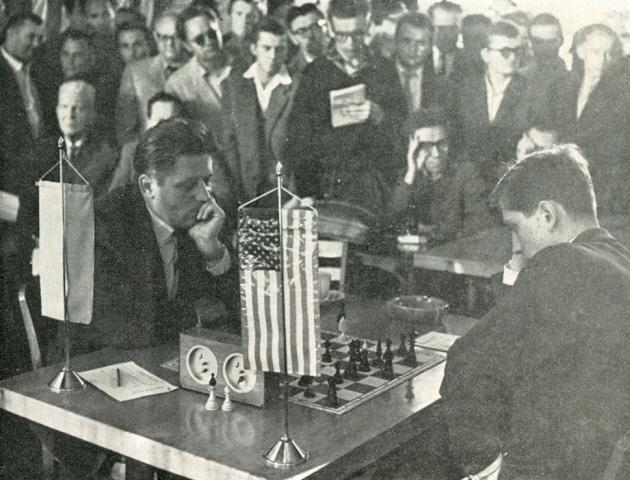
Regarding C.N. 6078 many readers correctly responded that Fischer’s opponent was Bogdan Sliwa. The photograph was published on page 241 of the November 1962 Chess Life, the occasion being a small United States v Poland team match in Warsaw, shortly before the Olympiad in Varna.
(6084)
Dan Scoones draws attention to a second photograph taken during the game Sliwa v Fischer, Warsaw, 1962: U1347491 at the Corbis website.
(6089)
Graeme Cree (Austin, TX, USA) raises the subject of Fischer’s participation in the 1957-58 US championship in New York (which was a Zonal tournament), rather than the concurrent Hastings tournament. He points out an article by Montgomery Major on page 4 of the 5 November 1957 Chess Life which praised Fischer for deciding not to play in the championship, given that he had already accepted an invitation to Hastings:
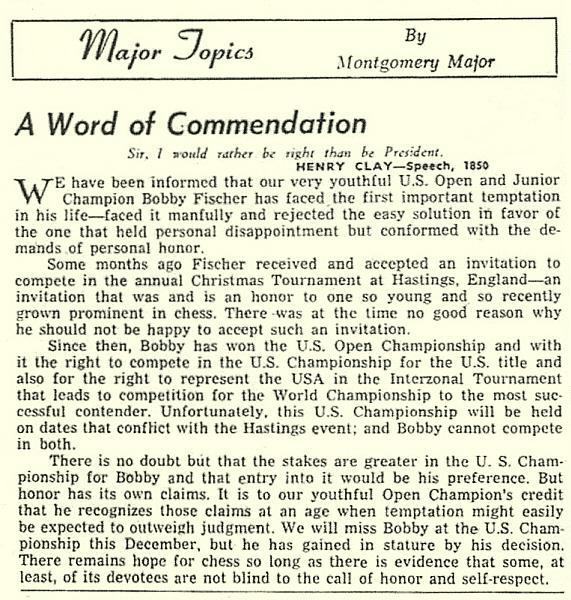
Mr Cree adds that an article by Bernard Taper in The New Yorker of 7 September 1957 (pages 25-27) also stated that Fischer would be playing in Hastings. Our correspondent comments:
‘So, according to these two sources the result which first brought Fischer to world prominence almost never happened at all. The 20 November 1957 Chess Life (pages 1 and 3) announced him as one of the participants in the US championship, with no explanation or even acknowledgement of the change. What happened?’
See also page 19 of Profile of a Prodigy by Frank Brady (New York, 1973), but the detailed sequence of events is not yet clear to us. ‘Brooklyn Boy Is Invited To Play Chess Masters’ was the headline of a brief news story about the Hastings tournament on page 45 of the Sports Section of the New York Times, 11 June 1957. Page 155 of the June 1957 BCM stated that ‘according to press reports young Bobbie Fisher, of New York, has been invited to play’. His name was spelt correctly on page 266 of the October 1957 issue, which reported that an invitation to play in Hastings had been accepted by ‘Bobby Fischer, who at the age of 14 has just won the US Open’ (in August). Fischer was again in the list of expected participants at Hastings on page 286 of the November 1957 BCM. His withdrawal was mentioned, without elucidation, by Wolfgang Heidenfeld on page 29 of the February 1958 BCM.
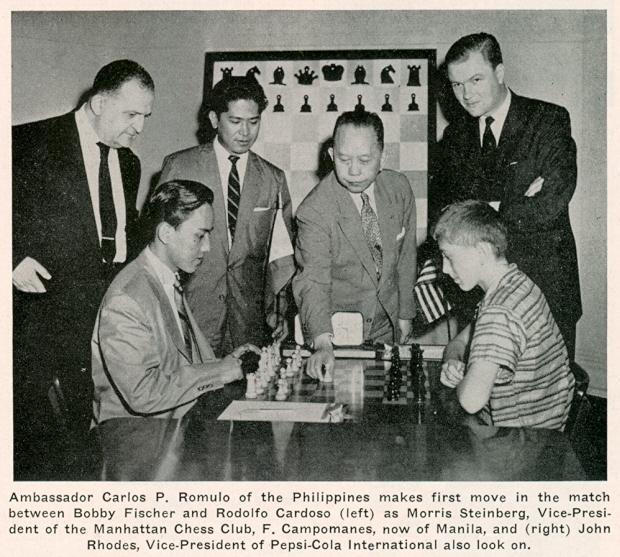
Source: Chess Review, November 1957, page 322
(6092)
From Leonard Barden (London), who was a participant in the tournament in question (Hastings, 1957-58):
‘I have the impression that Fischer withdrew in late October, which, allowing for magazine production time, would be consistent with the Chess Life and BCM reports. Given that FIDE had a four-year cycle and that Fischer obviously had a chance to qualify for the Interzonal, I do not think that any other decision by him was possible. Frank Rhoden, the Hastings organizer, was philosophical about it, and hoped to include Fischer another year. A couple of weeks before the start of the tournament, Rossolimo also withdrew, giving an opportunity to me.’
We add that the top finishers at Hastings, 1957-58 were: 1st P. Keres; 2nd S. Gligoric; 3rd M. Filip; 4th L. Barden.
(6097)
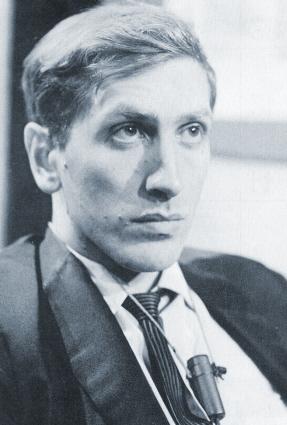
Bobby Fischer
One of the most extraordinary of all chess books has just been published: Bobby Fischer Uncensored by David and Alessandra DeLucia (Darien, 2009). A richly-illustrated 394-page hardback of supreme quality, it presents hundreds of items from David DeLucia’s collection of Fischer material, including photographs, game-scores, correspondence, contracts, books and ephemera.
For example, C.N. 4769 asked about the earliest known photographs of Fischer, and we note that page 11 has two which were taken in January 1953. A further shot on the same page shows ‘Bobby studying chess in the bath tub’.
Regarding the 1995 Batsford edition of My 60 Memorable Games there is much documentation, including (on pages 204-205) reproductions of Graham Burgess’s letter to Fischer dated 7 September 1994 announcing that Batsford planned a new edition (‘no new errors will be brought into the book’) and the reply from Fischer’s lawyer John Hazard (14 November 1994) stating that ‘Batsford Ltd. is mistaken in its assumption that it has the authority to publish a new edition of My Sixty Memorable Games’. The affair is also mentioned in detail in the extracts presented (on pages 248-261) from another item in Mr DeLucia’s collection, dated 18 November 1997: ‘a 100-page working typescript by Fischer entitled “What Can You Expect from Baby Mutilators”’.
Numerous illustrations are of books and other publications owned by Fischer, including such titles as The White Man’s Bible, The World Conspiracy and The Myth of the Six Million. His personal notebooks are also reproduced, and it would be impossible to overstate the anti-Semitism with which they are suffused. ‘Hitler was right about the Jews: They want to steal everything I’ve worked for all of my life’ (page 244). On page 285 another note, dated 21 May 1999, is also typical: ‘It’s time for programs against Jews and it’s also time for vigilante killings of Jews – random killings of Jews.’ Page 301 has a draft letter which begins:
‘Dear Mr Osama bin Laden allow me to introduce myself. I am Bobby Fischer, the World Chess Champion. First of all you should know that I share your hatred of ...’, etc., etc.
Mr DeLucia presents such material without editorial comment, rightly leaving readers to supply their own revulsion. Fortunately, though, the book contains much chess material too, such as (on page 82) photographic reproductions of ‘possibly four unrecorded games of Bobby’s from his 1964 US simul tour’.
(6189)
See also Chess and Jews and Brad Darrach and the Dark Side of Bobby Fischer.
Frederick S. Rhine (Park Ridge, IL, USA) asks about an episode in the 1965 Capablanca Memorial tournament in Havana (for Fischer, in New York) related on page 213 of American Chess Masters from Morphy to Fischer by Arthur Bisguier and Andrew Soltis (New York, 1974):
‘All went well until Fischer played Viktor Ciocaltea of Rumania. Ciocaltea’s first move, 1 P-Q4, was played on the Marshall Club board by a FIDE judge. Fischer replied with his usual 1...N-KB3. Then came the remarkable reply, 2 P-K5!? There was considerable consternation on West 10th Street as the officials realized that White’s first move had been 1 P-K4 and not 1 P-Q4. Could Fischer take his move back? Could the error in transmission be explained? It didn’t matter because Fischer waved aside the fears by playing 2...N-Q4. He was willing to play Alekhine’s Defense, an opening he had never played before in tournament chess and was not to play again for five years. But he was sufficiently prepared to hold Ciocaltea to a draw in an unfamiliar opening.’
Do contemporary reports corroborate this account? We see nothing in Chess Life, Chess Review or the tournament book (published in Buenos Aires later in the year).
The game was played on 29 August 1965, and the following day the New York Times (page 22) noted that Fischer ...
‘... pulled two surprises yesterday in his third game of the Capablanca Memorial tourney: He adopted an unusual defense, and he discharged his referee.’
The report stated that Frank Brady, whose task was to oversee Fischer’s moves in New York, was dismissed ‘even before the game got under way’. His book on Fischer, Profile of a Prodigy, had been published the previous week.
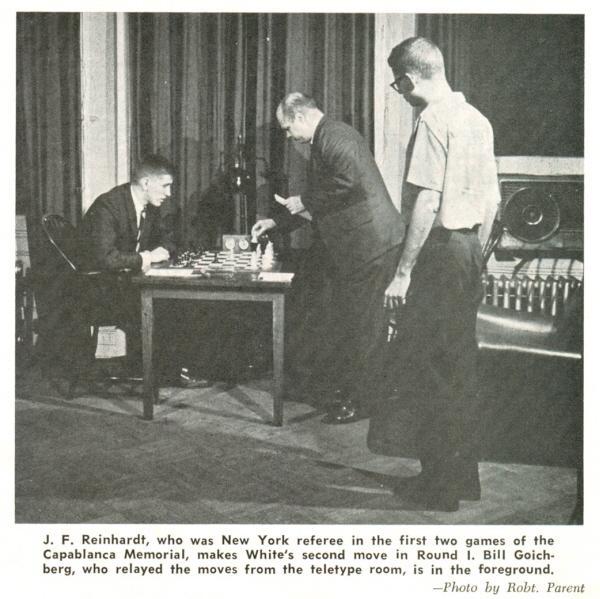
Source: Chess Life, September 1965, page 191
(6194)
On the topic of correspondence games played by world champions (C.N. 3719), Javier Asturiano Molina notes that pages 29-30 of The Unknown Bobby Fischer by John Donaldson and Eric Tangborn (Seattle, 1999) gave a 12-move loss by Fischer in 1955 against A.W. Conger. The game being well known today, we refrain from going into the details here.
(6283)
Further to our feature article Capablanca v Alekhine, 1927 Christian Sánchez (Rosario, Argentina) writes:
‘In a letter published on page 715 of the November 1974 issue of Chess Life & Review Fischer wrote:
“... the Capa-Alekhine match did have a draw clause at 5-5. Yes, Alekhine had to win by 6-4 to take the title just the same as my match proposal ...
The Russians are also making a big to-do about this tie clause even though they are well aware from their own books of these facts. Yet they pretend that I’m asking for an unprecedented advantage! (See page 18 ‘Ten Champions of the World’, Moscow 1972 in Russian for Capa-Alekhine regulations – fotocopy enclosed.)”
The next page quotes a cable sent to FIDE by Fischer:
“... Alekhine needed at least a margin of six wins to four to become world champion, whereas Capablanca needed only five wins to retain his title, draws not counting ...”’
Below is an extract from pages 17-18 of the book referred to by Fischer, 10 Chempionov Mira edited by L. Abramov (the chapter in question having been written by A. Kotov):

(6337)
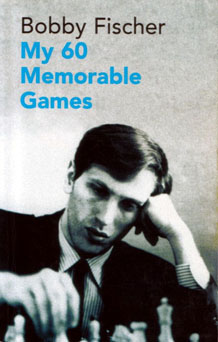
We have added to Fischer’s Fury the full texts of C.N.s 2268 and 2298. Written in 1999 and published in New in Chess, they responded to Fischer’s criticisms of us over the My 60 Memorable Games affair.
(6366)
Regarding Hort v Fischer, Palma de Mallorca, 1970, we have been asked by Paul Macklin (Prestwich, England) whether Fischer missed a mate in one at move 55.
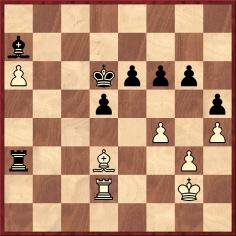
From the above position almost all Fischer books containing the game state that play continued 53...Bb6 54 Rd1 Ra2+ 55 Kf3
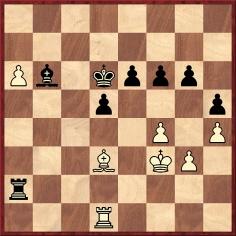
Here, Black could play 55...Rf2 mate, whereas Fischer’s move is indicated as 55...Bd4.
However, contemporary sources (e.g. page 61 of the February-March 1971 issue of Mundo del ajedrez) give Black’s 53rd move as ...Be3, which means that no mating opportunity arose two moves later. The matter was raised by Bart Gibbons on page 27 of the January 1976 Chess Life & Review, on the basis of the game’s appearance in the Wade/O’Connell book on Fischer, and in reply to his query Larry Evans remarked that 53...Be3, and not 53...Bb6, had been played.
(6367)
Serin Marshall (Brooklyn, NY, USA) notes this passage regarding Fischer on page 46 of The Chess Artist by J.C. Hallman (New York, 2003):
‘For a time he seemed perfectly functional – he wrote a column for Boys’ Life, did a television commercial for Xerox, and won money to play in his first interzonal tournament by appearing on a game show.’
Our correspondent asks whether any information is available about the Xerox matter. Our only thought at present is that Bobby Fischer Teaches Chess (New York, 1966) was published by Basic Systems, Inc., ‘an education subsidiary of Xerox Corporation’. The spine:

Below is Fischer’s signature in one of our copies of the first edition.

(6371)
From Nigel Short (Athens):
‘I qualified as an International Master at Hastings, 1979-80 at the age of 14 (I was born on 1 June 1965), and my title was ratified by FIDE at its Congress in Malta at the end of 1980. Before that time, had anyone obtained the IM title at a younger age?
The recipients of the IM title at FIDE’s Congress in Venice (October 1967) included Henrique Mecking, who was born in early 1952. At which event did he qualify for the IM title?’
(6419)
Christian Sánchez writes:
‘According to Henrique Mecking – see page 9 of his book O Encontro do Século Fischer x Spassky (São Paulo, 1973) – he obtained the title of International Master at the age of 15, breaking two records: the youngest player to win a continental championship and the youngest International Master ever (bettering Bobby Fischer).
He seems to be referring to the play-off of the 1966 South American Zonal Tournament. Four players (Mecking, Oscar Panno, Julio Bolbochán and Alberto Foguelman) shared first place in that event (held in Termas de Río Hondo, in the province of Santiago del Estero, Argentina), but only three could qualify for the Interzonal in Sousse. The play-off, held in Buenos Aires, was won by Mecking; qualification brought him the title of International Master, at the age of just over 15 years.’
We note that according to page 116 of the April 1967 BCM the play-off event was held from 25 January to 4 February 1967.
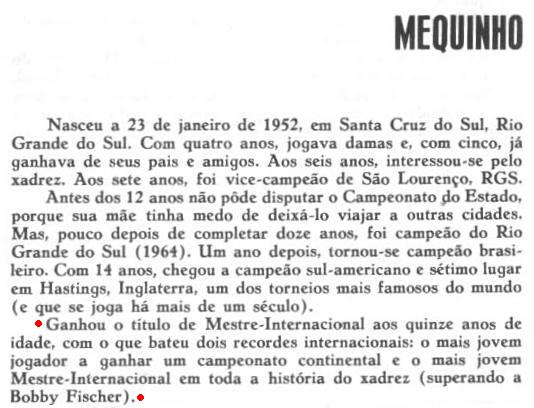
(6422)
The reference to Fischer in the above book by Mecking prompts us to raise another question.
By finishing equal fifth in the Portorož Interzonal tournament in August-September 1958, Fischer qualified for the following year’s Candidates’ event and automatically acquired the title of Grandmaster. See, for instance, page 195 of the October 1958 Schweizerische Schachzeitung (a particularly reliable periodical for administrative matters) and page 25 of Profile of a Prodigy by Frank Brady (New York, 1973).
But did Fischer obtain the International Master title the previous year? His entry in Jeremy Gaige’s Chess Personalia states that he did, and he was also mentioned as a recipient in 1957 on page 41 of the Livre d’or de la FIDE (Sutton Coldfield, 1977). However, Fischer was not listed among the new title-holders in the reports on FIDE’s Congress in Vienna (18-22 August 1957) which were published in, for example, the Schweizerische Schachzeitung (September 1957, pages 178-180) and the BCM (October 1957, pages 268-269).
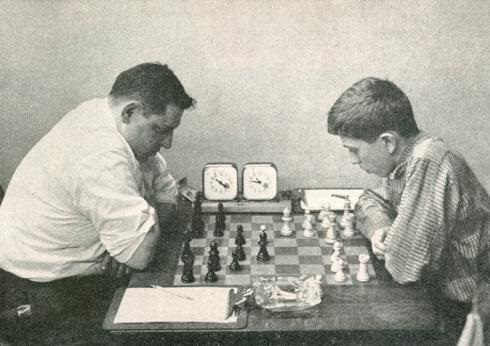
The photograph above, from page 81 of the March 1958 Chess Review, shows Fischer in play against Abe Turner in the final round of the 1957-58 US Championship in New York.
(6423)
Nikolai Brunni (Honolulu, HI, USA) notes a news item on page 1 of Chess Life, 5 February 1958:

(6428)
We draw together, rather guardedly, the strands of the discussion so far (C.N.s 6419, 6422, 6423 and 6428) on the competing claims (Fischer, Mecking and Short).
In each case, the date of accession to the IM title is taken to be the conclusion of the event in question. The alternative is to use the date when FIDE officially made the award at its annual congress, but that would seem arbitrary and unfair (because the gap between the over-the-board achievement and the FIDE congress could range from a few days to nearly a year).
Concerning Fischer, no grounds have been found for the claim that he became an IM in 1957. As regards the report in Chess Life that he earned the title in January 1958, confirmation would be welcome from other sources. We have not yet traced any press reports that FIDE’s 1958 congress in Dubrovnik confirmed or ratified Fischer’s IM title. (It could not have been a case of Fischer’s GM title superseding the IM one, because at the time of FIDE’s congress the Portorož Interzonal Tournament was still in progress.)
Further evidence regarding Mecking’s IM title would also be welcome. With respect to both Fischer and Mecking, does any reader have access to FIDE’s working documents and reports? More generally, what were the rules on the awarding of the IM title for performances in Zonal Tournaments?
At present, the situation is tentatively summarized as follows:
(6429)
Robert Desjarlais (Bronxville, NY, USA) enquires about the origins of Fischer’s reported statement that ‘blitz kills ideas’.
The best citation that we can currently offer is a second-hand one, on page 308 of the June 1970 Chess Life & Review. Dragoslav Andric wrote: ‘while Fischer is known for his pronounced years-long aversion to blitz play, which, in his opinion, “kills your ideas”.’
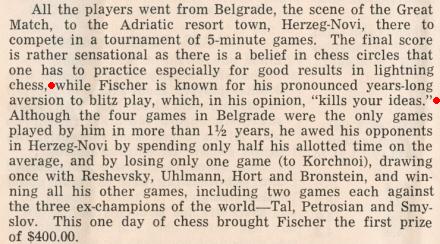
(6595)
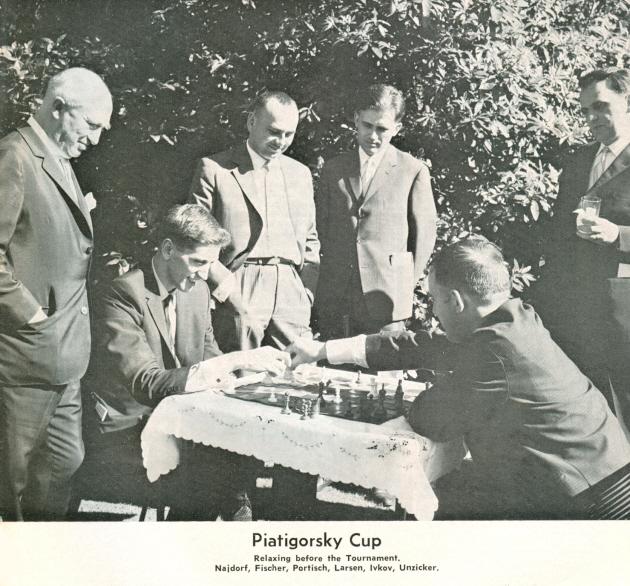
(6763)
See too Bent Larsen (1935-2010).
From Philip Wong (Wilmette, IL, USA) comes the information that there is a ‘Checkmate’ collection of shoes from the company Barker, with models which include the names of Fischer, Spassky, Karpov and Topalov. An Internet search for such words will lead to a number of websites, some of which have illustrations showing chess positions on the soles.
Our correspondent asks about other instances of non-chess articles being named after chessplayers. As regards clothing, page 225 of David Lawson’s biography of Morphy reproduced an advertisement for The Morphy Hat (‘1859 – A new and novel style of straw hat’). C.N.s 4177 and 4187 referred to merchandise allegedly on sale in Prague in the 1930s, including ‘Salo Flohr collars’ and ‘Flohr slippers’. However, the source for that information was only Koltanowski.
Page 41 of XIV. Schach-Olympiade Leipzig 1960:
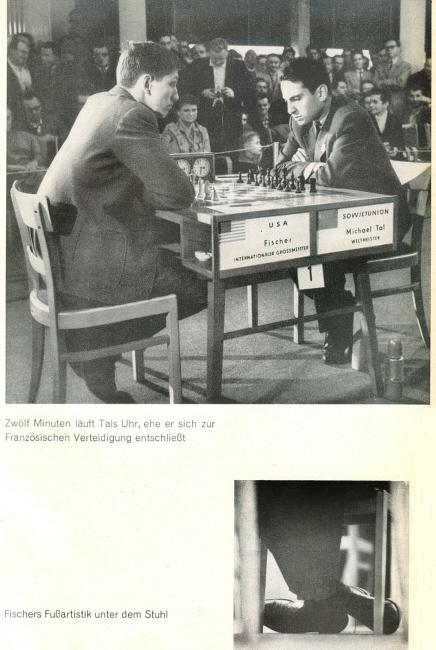
(6888)
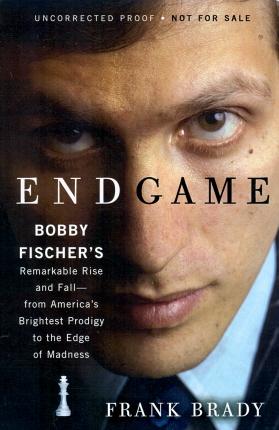
The book Endgame by Frank Brady (New York, 2011) thanks us for assistance but should not.
On 1 December 2010, the day after receiving an ‘uncorrected proof’ of the book from Dr Brady, we spontaneously sent him a list (several pages long) of errors noted during our quick skim of the work. He at once forwarded our list to the publisher, but it proved too late for the corrections to be incorporated. However, the publisher did mistakenly add the acknowledgement to us which Dr Brady had also submitted.
[Addendum: The above statement was posted on the basis of information provided to us by Dr Brady and with his prior knowledge. Subsequently, it became apparent that the publisher had, in fact, been able to incorporate many of the more ‘straightforward’ typographical matters which we had pointed out.]
(6929)
Frank Brady (New York, NY, USA) wonders whether his new biography of Bobby Fischer, Endgame, is the first chess book ever to enter, upon publication, a bestseller list (number 31 on the New York Times list).
He informs us that editions of his earlier Fischer work, Profile of a Prodigy, have sold more than 100,000 copies over the years.
See too Chess Book Sales.
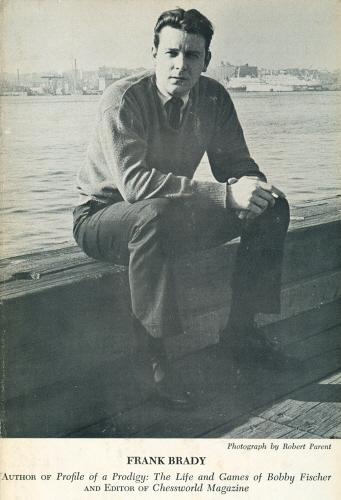
Back cover of the dust-jacket of Profile of a Prodigy (London, 1965)
(6962)
Frank Brady informs us that his biography of Fischer, Endgame (New York, 2011 and 2012), has appeared in Czech, Dutch, German, Icelandic, Italian, Japanese and Russian, and that a Spanish edition is in preparation.
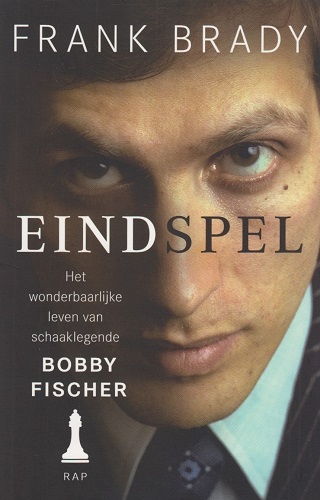
(9532)
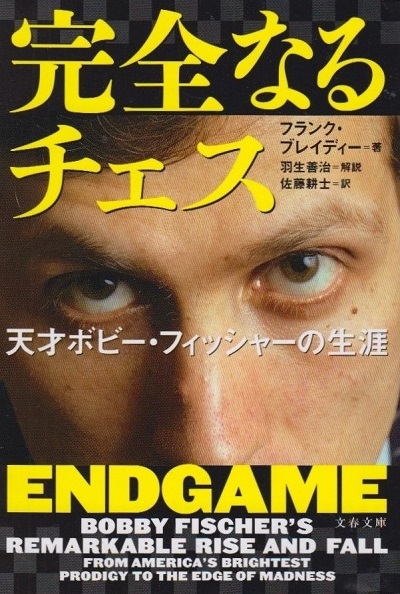
Ignacio Martínez (Madrid) asks:
‘Who were the seconds of Fischer and Larsen in their 1971 Candidates’ semi-final match? Or did they play in Denver without any team support?’
From Jack Spence’s report ‘Fischer v Larsen: at the ring-side’ on pages 328-329 of CHESS, July 1971:
‘... both players were in Denver without a second, Fischer being accompanied only by Ed Edmondson, USCF official, in charge of arrangements, and Larsen by his wife ...’
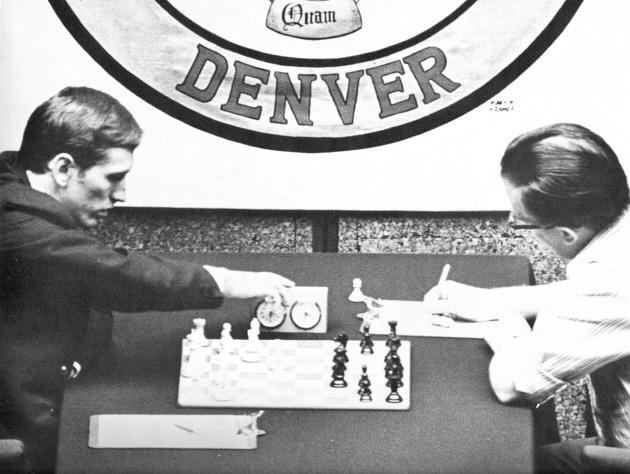
The above photograph was on the front cover of the September 1971 Chess Life & Review.
(6973)
Roy Henock (Eureka, CA, USA) notes a statement at the Huffington Post website: ‘In 1972, Kavalek was Bobby Fischer’s second in his world championship match against Boris Spassky in Reykjavik.’
In terms of presence in Iceland, is it possible to find, or compile, a comprehensive list of seconds, attendants, representatives and officials, with respect to both Fischer and Spassky?
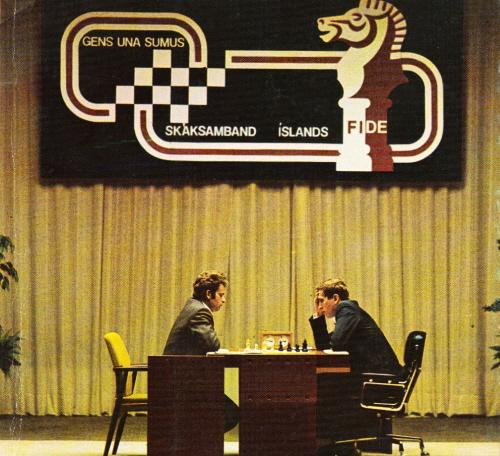
From the front cover of El match del siglo by L.Pachman (Barcelona, 1972)
(8125)
From Lubomir Kavalek (Reston, VA, USA):
‘I wrote about my role during the 1972 world championship match in an article on pages 60-68 of the 6/2012 New in Chess. It includes transcripts of two interviews with Fischer.
In brief, I took over the second’s duties during the adjournment of the 13th game after Fischer sent Lombardy away. I was analysing with Fischer alone until the end of the match. We also spent time walking together, swimming and bowling. To my knowledge, there were only three other people (Bill Lombardy, Fred Cramer and Brad Darrach) who had daily contact with Fischer away from the playing hall. I was also busy reporting for the Voice of America. I know that there was a list of the invitees to the closing ceremony; since Lombardy was the official second, I was listed as “Bobby Fischer’s coach – bowling”, although I bowled only three times in my life. However, it enabled my wife and me to sit at the same table with Bobby and Boris Spassky.’
We add a brief excerpt from Lubomir Kavalek’s above-mentioned article in New in Chess (page 66):
‘It was during this game [the 13th] that I started working with Bobby on the adjournment games after he sent his official second, Bill Lombardy, away from his suite. Bobby and Bill were a great pair, but during that night they turned into two strong personalities with two different opinions. The tension was resolved by Lombardy’s sneeze. “I don’t want to get your cold, Bill”, Bobby said and added he wanted to work with me. Bill left quietly.
From that moment on, I analysed just with Bobby till the end of the match.’
(8135)
See also Chess Seconds.
Courtesy of Frank Brady we reproduce a letter dated 5 March 1957 in which Hans Kmoch forwarded an invitation to Fischer to play two games against Euwe:
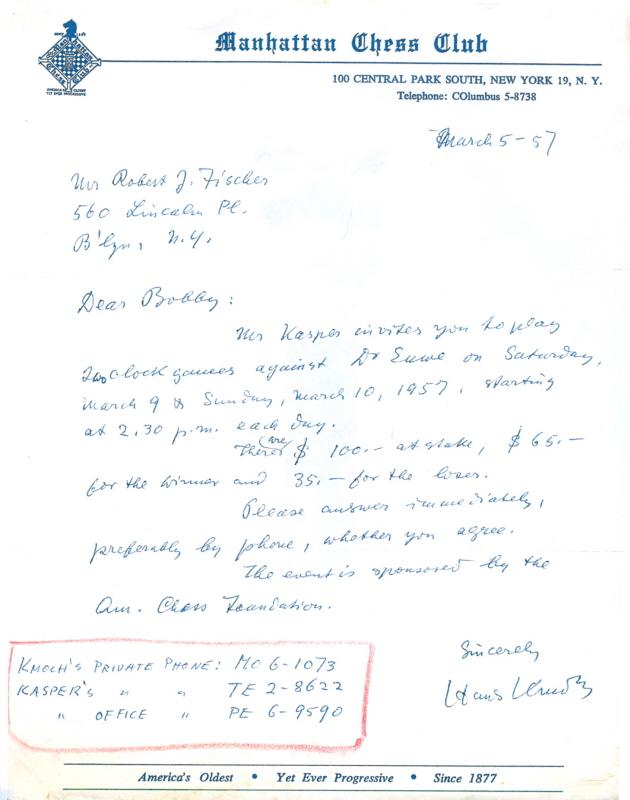
Fischer agreed, but it is only recently that the full score of the second game, a draw, has become known, thanks to Dr Brady’s researches.
A photograph showing play in the first game was on the front cover of the April 1957 issue of Chess Review:
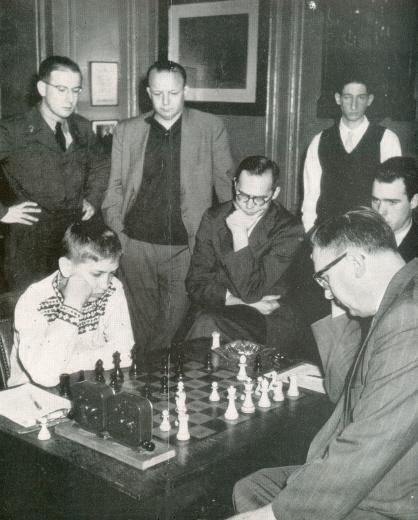
(6995)
From Tony Bronzin (Newark, DE, USA):
‘While recently reading the fine book Endgame Strategy by Mikhail Shereshevsky (Oxford, 1985) and comparing its analysis (on pages 176-177) of Saidy v Fischer, US Championship, 1963-64 with what appears on pages 312-314 of volume four of Garry Kasparov’s My Great Predecessors, I noticed a discrepancy regarding Black’s 47th move. Kasparov’s book indicates that Fischer played the decentralizing move 47...Nh5, while Shereshevsky has 47...Ne4. The latter move is corroborated by Anthony Saidy in a letter published in Larry Evans’ column in the November 1986 Chess Life (page 47).
Position after 47 Bh4
Which move was played, ...Ne4 or ...Nh5? Kasparov’s analysis at move 48 to save White, which includes the move 49 Bf2, does not work with the black knight on e4.’
The score was published on page 35 of the February 1964 Chess Life and on page 146 of the May 1964 Chess Review. In each case the move given was 47...Ne4.
On the other hand, Saidy contributed an introduction to the game in Bobby Fischer by Karsten Müller (Milford, 2009) – see pages 248-249 – and in that book the game-score had 47...Nh5, with a question mark and the comment ‘too slow’.
A photograph from earlier in the game appeared on page 132 of the May 1964 Chess Review:
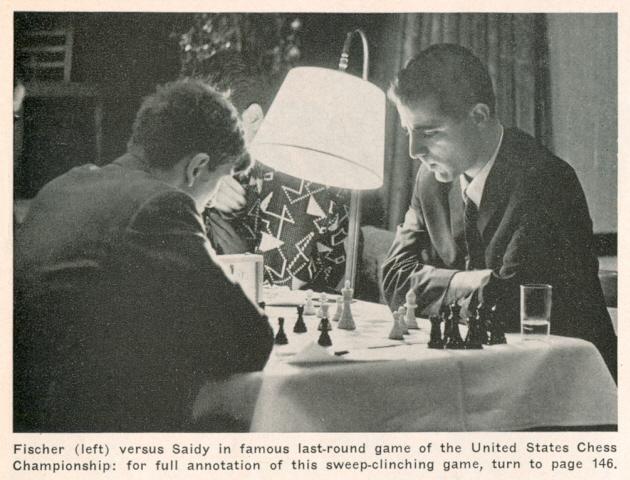
(7031)
C.N. 1267 gave the score of a game drawn by Bobby Fischer against José Arango Casado in a simultaneous exhibition in Havana on 26 February 1956. We added that the Cuban magazine of the time, Ajedrez en Cuba, gave no games. Its September 1956 issue (pages 182-183) mentioned that Fischer had been in Havana ‘five or six months ago’ and that he had ‘defeated all players with whom he measured his strength’. In the December 1956 number (page 20) there was a brief reference to Fischer’s ‘brilliant performance in Havana’s Club Capablanca some months ago’.
Further details were provided by Ed Tassinari in C.N. 1306:
‘C.N. 1267 concerning Fischer’s previously unpublished games, including one from his 12-board simultaneous exhibition at the Capablanca Chess Club in Havana, sheds a little light on an aspect of his career that remains fairly obscure. Several years ago I made a modest attempt to survey several Cuban publications for news and/or game-scores of Fischer in Havana, with meagre success. What I did find was basically this:
In his chess column in El Mundo (Havana), Carlos Palacio mentioned the presence of the US visitors from the Log Cabin (NJ) Chess Club (column of 26 February 1956). He noted that E. Forry Laucks had extended an invitation to Cuban players while they were in New York the previous November (participating in a match with the Marshall Chess Club). A reception was held on the afternoon of 25 February for the visitors, and during this pairings were made for a team match which was held that night. He gave the results in his column, but with no game-scores.
The 28 February issue of El Mundo had a picture of Fischer giving the simultaneous exhibition, and in Palacio’s chess column of the same date there is a picture of Fischer playing José A. Gelabert in a skittles encounter, together with reference to an article that appeared in Chess Review for January 1956 (which was actually a reprint of a New York Times piece describing a Fischer simultaneous exhibition against 12 young members of the Yorktown Chess Club (NY) given at the Manhattan Chess Club in November 1955). A list of Fischer’s opponents and the results of the 26 February simultaneous display are also given: Raimundo Plasencia, Sergey Pavol, Rogelio Ferrer, E. Haughton, E. Forry Laucks, Dr Luis F. de Almagro, Antonio Higuera, Dr Armando Bermúdez, Alberto Reyes and Raúl Martin all lost; José Arango Casado and Ramón Meréndez Bermúdez drew.
Unfortunately no game-scores were given by Palacio, nor in any of his columns for the following weeks. Mention of the Log Cabin aggregation was made by the then Cuban champion Dr Juan González in his column (26 February 1956) which occasionally appeared in the Diario de la Marina (Havana). He gave the line-up for the team match, but nothing beyond what appeared in Palacio’s columns.
I also scanned several weeks of the New York Times for February and March 1956 in the hope of locating something about the Log Cabin tour and/or Fischer game-scores; the only mention apparently was on 5 March 1956, page 26, which noted that the three-week Log Cabin Chess Club tour had ended; the team had played matches with Miami, Tampa, St Petersburg and Hollywood, Florida; Clinto, North Carolina and Havana, with a result of 23½ to 26½. It was noted that Norman Whitaker played first board for Log Cabin and won five, lost one and drew one. Fischer made exactly the same result on second board.’
See also pages 45-49 of Endgame by Frank Brady (New York, 2011). We note too a photograph of Fischer’s simultaneous display in Havana. Below, from page 6 of the January 1956 Chess Review, is a picture of Fischer giving his simultaneous exhibition against the Yorktown Chess Club:
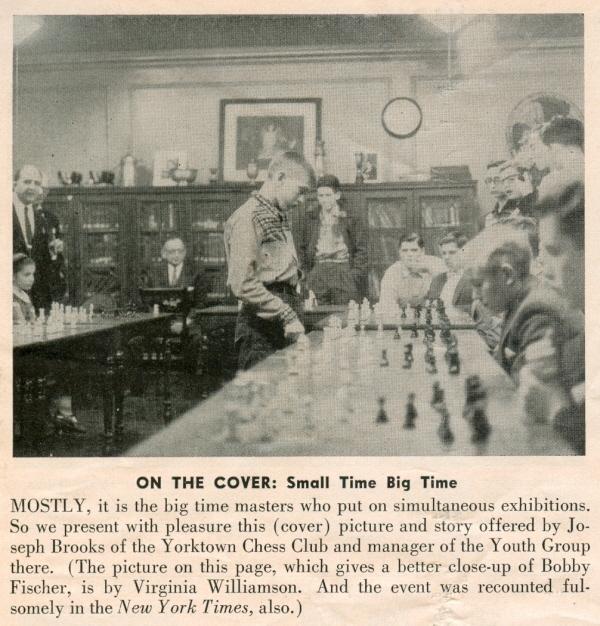
(7176)
Wanted: information about a quote ascribed to Fischer on page 57 of Bobby Fischer heute by Yves Kraushaar (Schwanden, 1977) and given in C.N. 932:
‘Es gibt nur zwei wahre Schachgenies – das andere war Wilhelm Steinitz, der Weltmeister von 1872 bis 1894.’
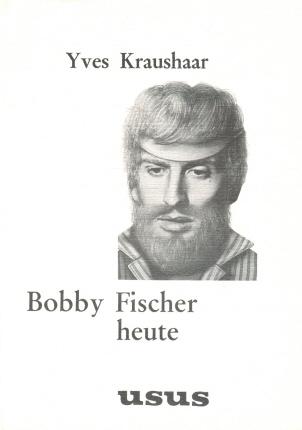
(7186)
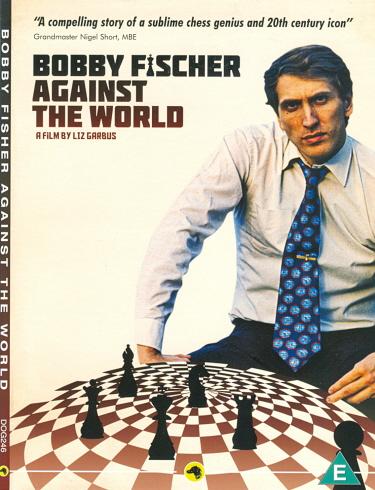
Graced with some exceptionally rich archive material, Liz Garbus’s 2011 documentary film Bobby Fischer Against the World is disgraced with some exceptionally poor interviewees. A particular low point, with some of the talking heads less concerned about being truthful than noticed, is the dense sequence which seizes on the issue of insanity:
Anthony Saidy: ‘Victor Korchnoi claimed to have played a match with a dead man and he even provided the moves.’
Asa Hoffmann: ‘Rubinstein jumped out of the window because the fly was after him.’
Anthony Saidy: ‘Steinitz in late life thought he was playing chess by wireless with God Almighty – and had the better of God Almighty.’
Asa Hoffmann: ‘Carlos Torre took all his clothes off on a bus.’
To highlight only the Steinitz versus God yarn, no scrap of serious substantiation is available. Once again we witness the magnetic pull of malignant anecdotitis. And since the theme is insanity, an uncomfortable question arises: can such groundless public denigration of Steinitz and others be considered the conduct of a rational human being?
(7345)
Regarding Bobby Fischer Against the World (C.N. 7345), Tony Bronzin notes a remark by Anthony Saidy on the third game in the 1972 world championship match, which began 1 d4 Nf6 2 c4 e6 3 Nf3 c5:
‘In game three Bobby played an opening, a defense, he had never played before, the Benoni ...’
(7361)
The reversed image of Fischer above is discussed in C.N. 12018.
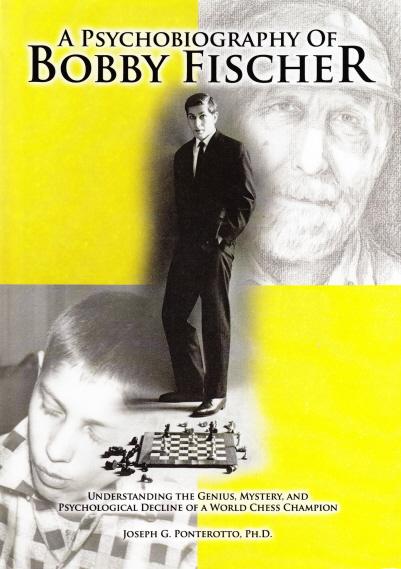
A Psychobiography of Bobby Fischer by Joseph G. Ponterotto (Springfield, 2012) shows little discernment between good chess sources and bad ones, although neither type can be blamed for the particular carelessness in the appendices on pages 163-171. For example, it is stated that the second Fischer v Spassky match was in 2002, and that the birth-year of Fischer’s mother and of Paul Morphy was 1949.
(7151)
In the United States in March 1986 the House of Representatives passed a Resolution, sponsored by Charles Pashayan, which recognized Bobby Fischer as the world chess champion. Siegfried Hornecker (Heidenheim, Germany) provides a link to the record of the Resolution. [Link broken.]
(7388)
John Donaldson points out that during a radio interview (Baguio City, 27 January 1999) Fischer stated that after defeating Petrosian in the Candidates’ final match in 1971 he undertook a tour of Argentina for simultaneous exhibitions. In all, he tentatively recollected in the interview, he gave 25 or 30 displays; he insisted on having the original of each game-score (a total of perhaps 600-1,000 games). Fischer added that the game-scores, unpublished, were subsequently stolen from him.
Noting that the Fischer-Petrosian match ended on 25 October 1971, our correspondent lists the following known displays by Fischer:
Mr Donaldson asks whether this list can be expanded and whether it is known where the game-scores are now.
(7506)
A list of locations in Argentina where Fischer gave simultaneous displays in 1971 has been provided by John Donaldson, from page 53 of the February 1972 issue of Ajedrez:
Eduardo Bauzá Mercére notes that page 26 of the January 1972 issue of Ajedrez published a photograph of Fischer in Tucumán watching the game Quinteros v Ferreira in the final round of the Pan American team championship:
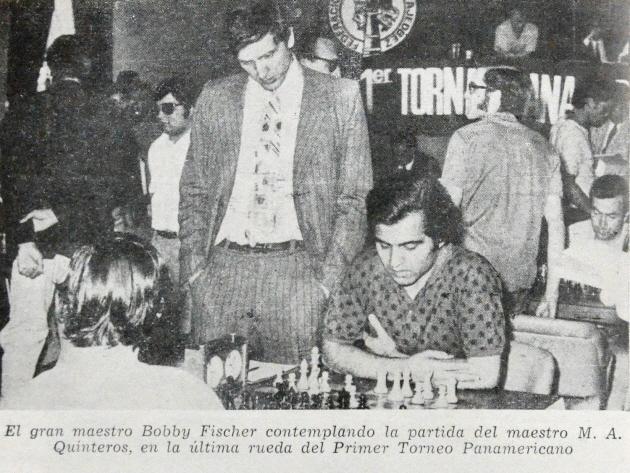
(7521)
Wayne Komer (Toronto, Canada) points out a webpage with many high-quality photographs of Fischer by Carl Mydans. [Link broken.]
(7773)
A quote published on page 186 of Combinations The Heart of Chess (New York, 1960) by Irving Chernev:

No source was given, but the observation comes from an article by Tartakower on pages 362-363 of the December 1954 Chess Review:
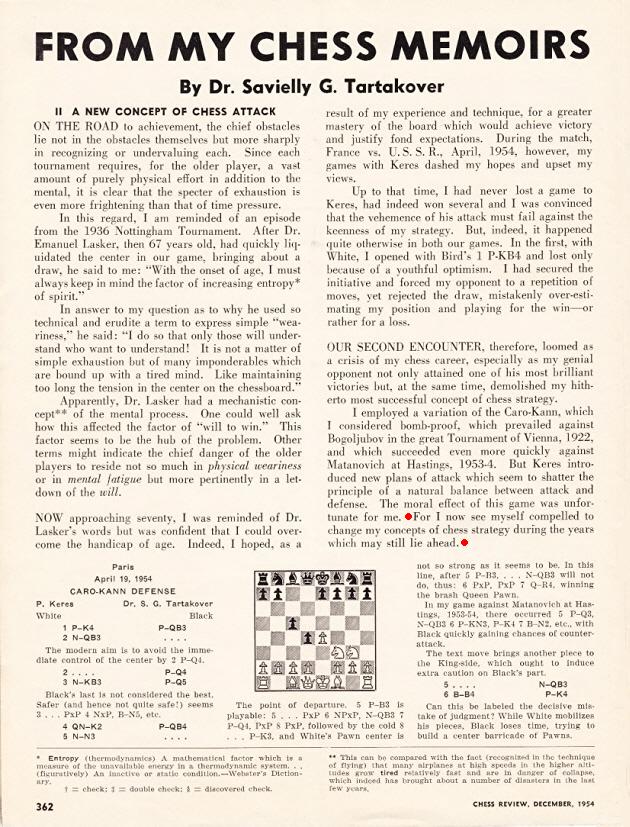
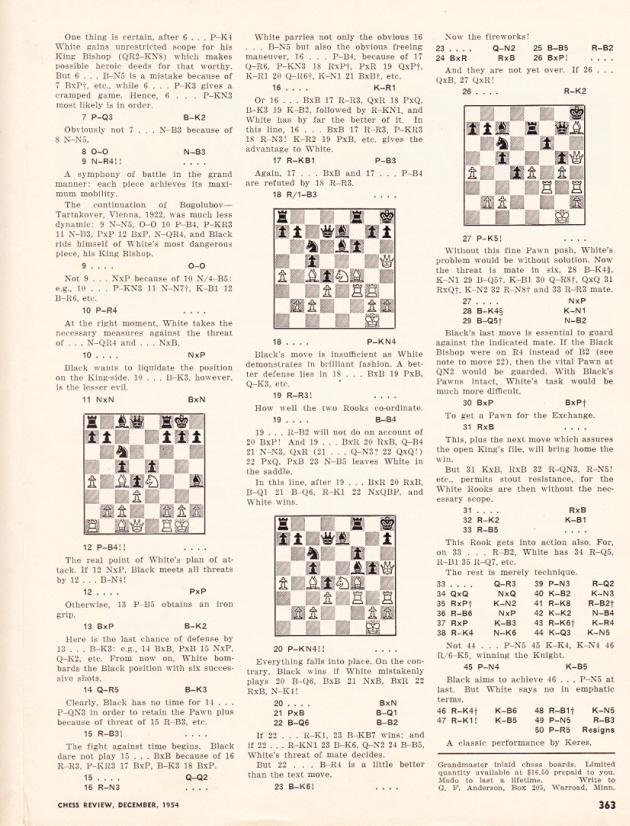
The Keres v Tartakower game was discussed by Fischer on page 172 of the July-August 1963 Chess Life:
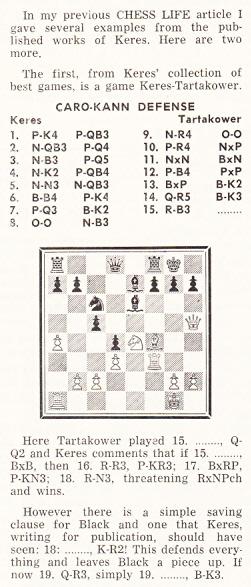
In the diagram White’s bishop is missing from c4.
In his previous article (Chess Life, June 1963, page 142) Fischer mentioned that he had been reading Keres’ ‘recent book of his best games (in Estonian)’. Below is the relevant note in the Keres v Tartakower game, from page 381 of that work, Valitud partiid 1931-1958 (Tallinn, 1961):
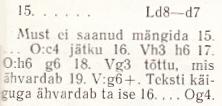
The position before Fischer’s discovery, 18...Kh7:
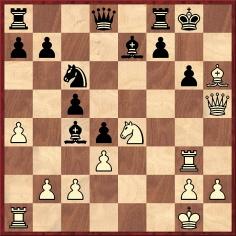
(7801)
From pages 54-55 of My Seven Chess Prodigies by John W. Collins (New York, 1974):
‘In Bobby Fischer’s Chess Games, by Wade and O’Connell, contributing editor Sir [sic – see C.N. 5674] Harry Golombek remarks on the influence of Capablanca on Bobby’s style and sees a strong resemblance in the respective strategies that run through their games. He recalls that Bobby acknowledged the influence in an interview with Leonard Barden that was broadcast on the BBC, and that Bobby also said he had read and appreciated a book on Capablanca by Golombek. The influence and resemblance are evident, and I have always been aware of it, recent evidence of it being in his third and fifth games with Spassky in Iceland. But I must say that I do not recall Bobby ever dwelling on his admiration of Capablanca or playing over great numbers of Capa’s games, though I assume he played over all of them at some time.
With Anderssen and Steinitz the story is much different. I remember I once lent a brand-new copy of Adolf Anderssen, by Dr Hermann von Gottschall, to him. Some weeks or months later he returned it, and I had good reason to believe he had worked over every game and note in it – all 751 games in the main section, plus 80 problems by Anderssen in another section. And later on Bobby and I played over 36 games that Anderssen played during 1851 to 1859 in Breslau with Louis Eichborn, a banker and good friend of chess. Much to our great glee we found that Anderssen lost them all. Steinitz received even more attention. Bobby was always intrigued by the man and his games, and he has revived many of his discarded variations, one is the Two Knights’ Defense, for instance. And another is the Petroff Defense. As with the Anderssen book, he borrowed my four volumes of Chess Master Steinitz [Schachmeister Steinitz], by Ludwig Bachmann, and thoroughly chewed and digested every one of the 669 games in them. Later, on many an afternoon and evening in my apartment, he and I would go over a score or so of these same Steinitzian struggles again. Bound copies of Steinitz’s The International Chess Magazine also provided us with grand old games and insights into the frightening intellect and acid pen of the “Father of Modern Chess”.’
The photograph of Collins below is reproduced from the front cover of a catalogue (numbered 1294) of Maddak Inc., published in 1995:
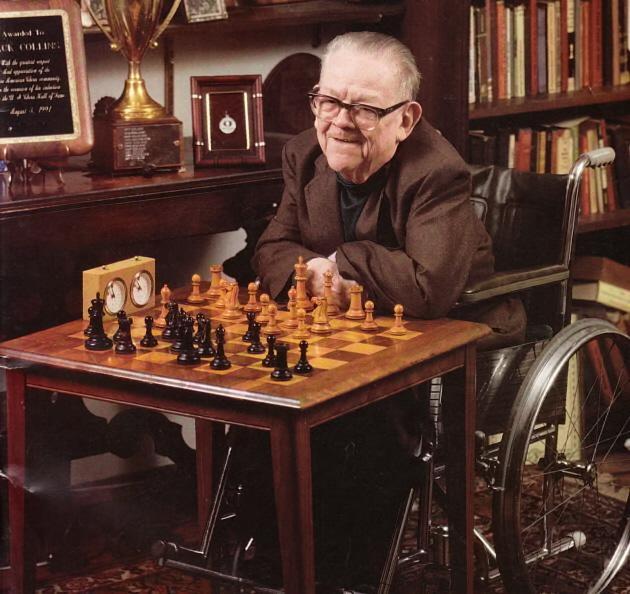
(7987)
From page 173 of All Things Considered by Bernard Levin (London, 1988) comes another (‘once’) example of how tinkering with chess can make an ‘intellectual’ writer seem anything but:
‘Fischer is not known to have done, said or thought anything at all other than about matters pertaining to chess, and once, when he gave up chess temporarily, he did nothing but play billiards for a couple of years.’
(8068)
Thomas Höpfl (Schkopau, Germany) and Dan Scoones point out a video item featuring Euwe and Alekhine (1935) which is similar, but not identical, to one available in Chess Masters on Film.
From Thomas Höpfli there also comes a link to a video report on Arturo Pomar which includes Fischer speaking a few words of Spanish.
(8201)
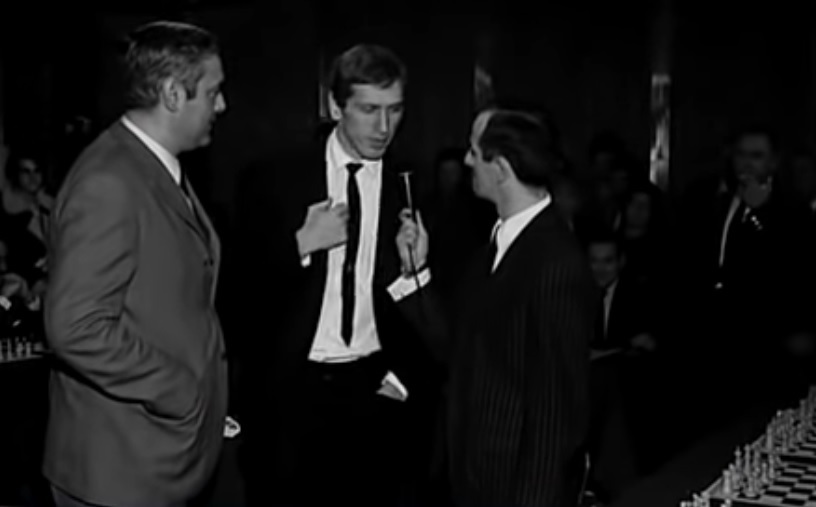
At the end of a brief review of Caïssas Weltreich by Max Euwe and Bob Spaak (Berlin-Frohnau, 1956) Harry Golombek wrote on page 63 of the March 1957 BCM that the book ...
‘is embellished by some excellent photographs, especially the one that gives such a humorous contrast between Reshevsky and Euwe’.
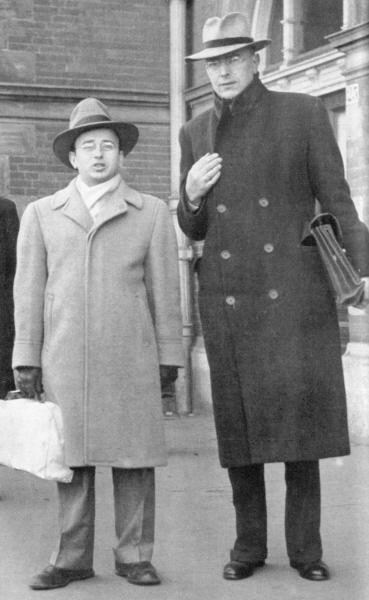
The picture was shown on page 94 of Chess Facts and Fables. On the same theme, the shot below comes from page 375 of Schach Express/Chess Express, October 1970, in a report on the Siegen Olympiad:
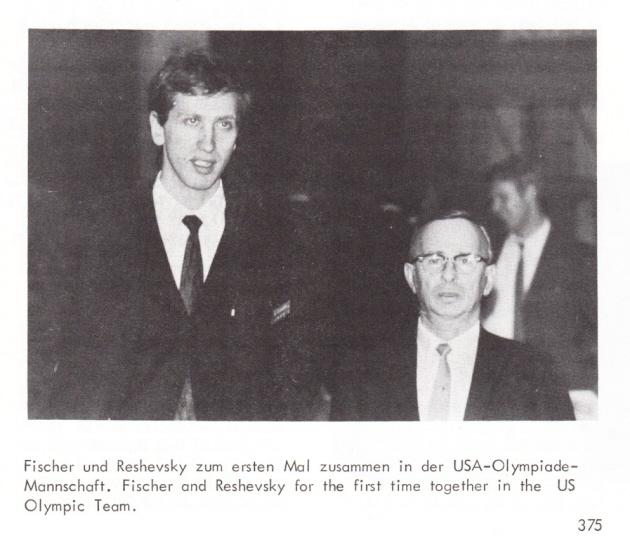
(8356)
Concerning announced mates, Dan Scoones draws attention to comments by Hans Kmoch on page 76 of the March 1964 Chess Review (Reshevsky v Fischer, 1963-64 US championship):
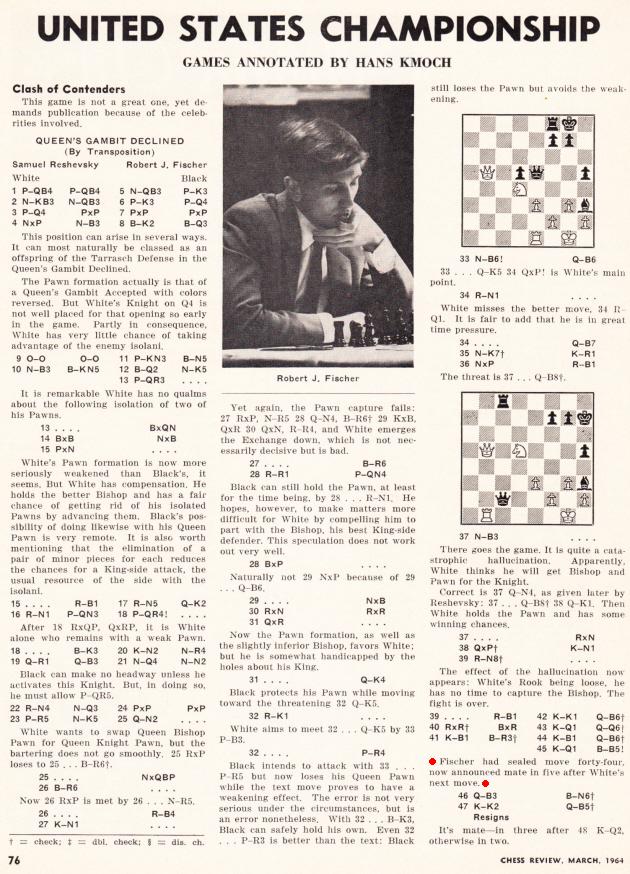
(8381)
If modern games were to be presented as they often were a century or two ago, the reader would see headings such as ‘A brilliancy by Mr Carlsen a few years back’, ‘Played in Germany’, ‘Another recent skirmish produced by Mr Anand against Mr ****** on the Continent’ and ‘Mr K*****k won this finely contested game against a strong opponent some time since’. In short, the public record of chess games, devoid of exact places, dates and names, would be desolate.
Nowadays, of course, most games are published with basic factual information as a matter of routine, but is there any valid reason for quotes to be handled quite differently? If a book, magazine or website wishes to notify its readership that A stated B, why omit particulars about the context (e.g. the place and date) of the observation? Were the answer to be that the book, magazine or website does not have the information, why is it disseminating the quote at all?
Chess literature and lore are a bog of ignorance, doubt and error regarding who said/wrote what and when. To give just one example of a book which makes no attempt to guide or inform the reader, below are the last two names in the chapter ‘On Players’ on pages 127-133 of The Chess Scene by David Levy and Stewart Reuben (London, 1974):
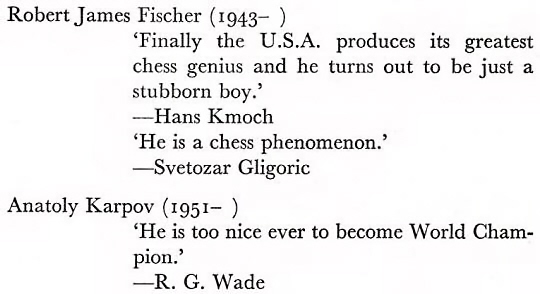
Not a source in sight.
We can offer at least some information about the most significant of these quotes, Kmoch on Fischer. Below is the first paragraph of an article, ‘The Selfmate of Bobby Fischer’, by Eliot Hearst on pages 166 and 183 of Chess Life, July 1964:
‘The “selfmate” theme of the chess problemist –a position in which one player compels his opponent to checkmate him – symbolizes suicide on the chess board. The chessplayer who prefers tournament competition to problem solving usually finds this kind of composition more amusing than artistic, and his amusement is probably due to the utter impracticality of the situation; tournament players are known to maintain a firm belief in the dictum that it is better to give checkmate than to receive it. Very few US chessplayers, however, are amused by Bobby Fischer’s equally impractical and unrealistic decision not to compete in the world championship qualification series and thus to surrender all of his rights to a world title match until at least 1969. The same mind that has produced some of the best chess combinations and positional gems of the past decade has also proved responsible for one of the most disappointing moments in American chess. As veteran chess analyst Hans Kmoch, who has observed and written about the games of world champions from Lasker to Petrosian, said in New York recently: “Finally the USA produces its greatest chess genius and he turns out to be just a stubborn boy.”’
See too Chess: the Need for Sources.
(8475)
With regard to Fischer v Dely, Skopje, 1967 (1 e4 c5 2 Nf3 d6 3 d4 cxd4 4 Nxd4 Nf6 5 Nc3 Nc6 6 Bc4 e6 7 Bb3 a6 8 f4 Qa5 9 O-O Nxd4 10 Qxd4 d5 11 Be3 Nxe4 12 Nxe4 dxe4 13 f5 Qb4 14 fxe6 Bxe6 15 Bxe6 fxe6 16 Rxf8+ Qxf8 17 Qa4+ Resigns) Irving Chernev wrote on pages 128-129 of Wonders and Curiosities of Chess (New York, 1974):
‘... Bobby Fischer brought off a brilliancy in less than five minutes against grand master Dely, who nearly lost the game on time.’
A similar remark is to be found in Bojan Kurajica’s tournament report on page 115 of CHESS, 11 December 1967:
‘In this game Fischer caught his opponent unprepared and beat him in just 17 moves. He spent perhaps five minutes while grand master Dely nearly lost on time.’
Substantiation of the time taken by both players will be welcomed.
Concerning Péter Dely, it is unclear why both sources cited above said that he was a grandmaster. We believe that at the time of the tournament he was an international master, having been awarded that title by the FIDE Congress in Stockholm in 1962; see, for instance, page 182 of the September 1962 Schweizerische Schachzeitung. Strangely, though, many sources, including Jeremy Gaige’s Chess Personalia, state that Dely did not become an international master until 1982. Another oddity is that when Harry Golombek gave the Fischer v Dely game on page 24 of The Times, 11 November 1967 (Review section) he wrote:
‘Here is how he [Fischer] recently disposed of another technically titled grandmaster at the international tournament of Skopje.’
Péter Dely (Chess Review, January 1968, page 22)
(8565)
We thank David DeLucia (Darien, CT, USA) for permission to reproduce Fischer’s score-sheet of his first training game against Gligoric, played in 1992:
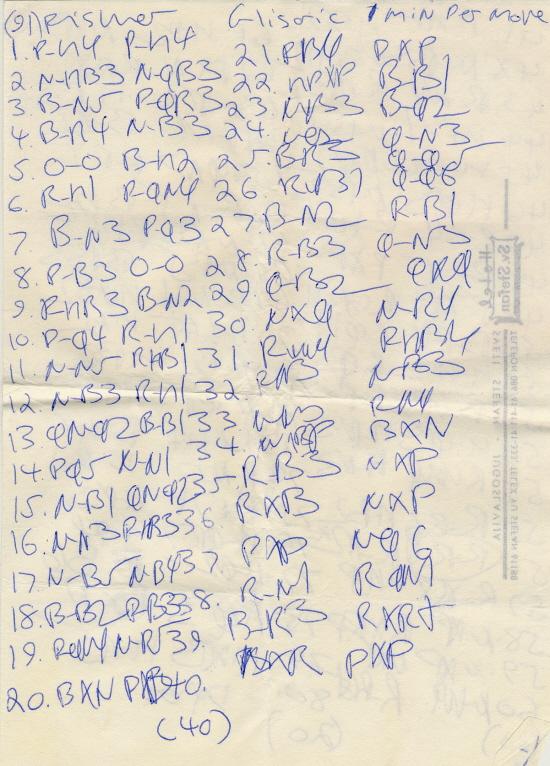
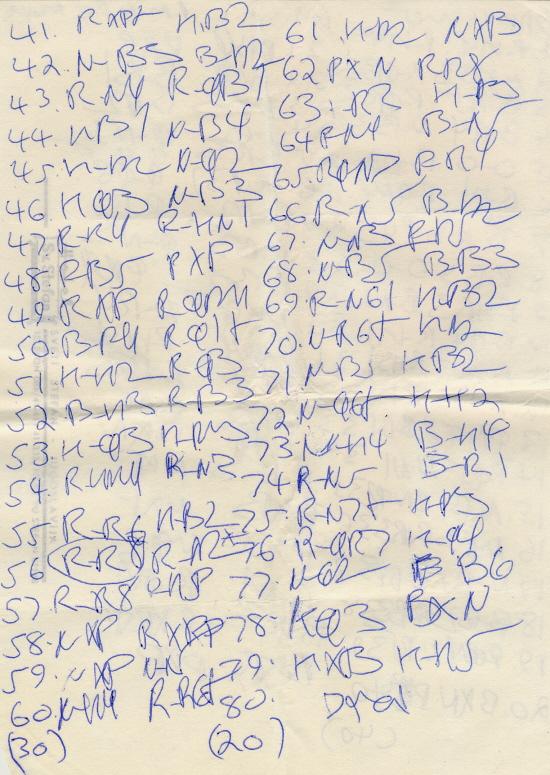
1 e4 e5 2 Nf3 Nc6 3 Bb5 a6 4 Ba4 Nf6 5 O-O Be7 6 Re1 b5 7 Bb3 d6 8 c3 O-O 9 h3 Bb7 10 d4 Re8 11 Ng5 Rf8 12 Nf3 Re8 13 Nbd2 Bf8 14 d5 Nb8 15 Nf1 Nbd7 16 Ng3 h6 17 Nf5 Nc5 18 Bc2 c6 19 b4 Na4 20 Bxa4 bxa4 21 c4 cxd5 22 exd5 Bc8 23 Ne3 Bd7 24 Nd2 Qb6 25 Ba3 Qd4 26 Rc1 Qd3 27 Bb2 Rac8 28 Rc3 Qg6 29 Qc2 Qxc2 30 Nxc2 Nh5 31 h4 f5 32 g3 Nf6 33 Ne3 g5
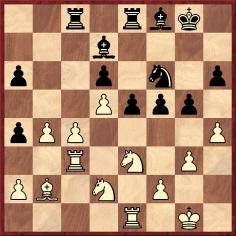
34 Nxf5 Bxf5 35 Rf3 Nxd5 36 Rxf5 Nxb4 37 hxg5 Nd3 38 Rb1 Rb8 39 Ba3 Rxb1+ 40 Nxb1 hxg5 41 Rxg5+ Kf7 42 Nc3 Be7 43 Rg4 Rc8 44 Kf1 Nc5 45 Ke2 Nd7 46 Kd3 Nf6 47 Rh4 Rg8 48 c5 dxc5 49 Rxa4 Ra8 50 Bc1 Rd8+ 51 Ke2 Rd6 52 Be3 Rc6 53 Kd3 Ke6 54 Rh4 Rb6 55 Rh6 Kf7 56 Rh8 Rb2 57 Ra8
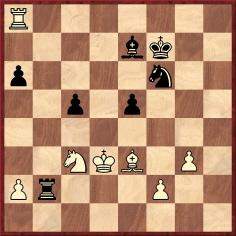
57...e4+ 58 Nxe4 Rxa2 59 Nxc5 Ng4 60 Ne4 Ra3+ 61 Ke2 Nxe3 62 fxe3 Ra1 63 Ra7 Ke6 64 g4 Bb4 65 Rb7 a5 66 Rb5 Be7 67 Ng3 a4 68 Nf5 Bf6 69 Rb6+ Kf7 70 Nh6+ Kg7 71 Nf5+ Kf7 72 Nd6+ Ke7 73 Ne4 Be5 74 Rb5 Bh8 75 Rb7+ Ke6 76 Ra7 Kd5 77 Nd2 Bc3 78 Kd3 Bxd2 79 Kxd2 Ke4 Drawn.
The game is given on pages 358-359 of a new compendium of Fischer documentation edited by Mr DeLucia’s daughter, Alessandra: Bobby Fischer Triumph and Despair (Darien, 2014). It is a 786-page volume of the highest imaginable technical quality, and further details are available on a New in Chess page.
A section of particular interest, further to the material in Fischer’s Fury, is on pages 398-457 of Bobby Fischer Triumph and Despair and concerns the 1995 Batsford edition of My 60 Memorable Games. Alessandra DeLucia writes on page 398 that Fischer’s drafts of his grievances against the Batsford book were written and updated over a period of nearly two years and occupy more than a metre of shelf-space.
(8634)
Information is sought about this picture, from page 277 of CHESS, July 1972:
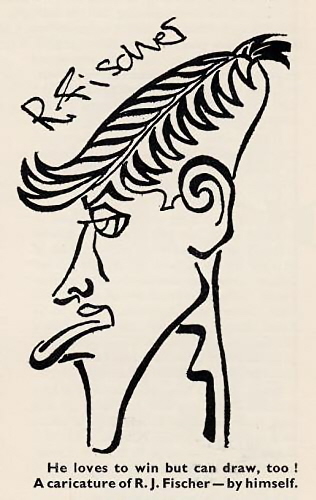
(8721)
Rudy Bloemhard (Apeldoorn, the Netherlands) has found the website of Marina Petric [link broken], which states that the Fischer caricature was by her late father, Berislav Petric.
(8724)
From Michael Clapham:
‘The Fischer caricature is included in the montage on the front cover of the Winter 1961 issue of the American Chess Quarterly:
The montage appears to come from promotional material for the tournament held in Bled on 2 September-4 October 1961. It features the 20 contenders, plus Milan Vidmar, the tournament director.
The website referred to in C.N. 8724 mentions that the caricatures shown were from a tournament in Yugoslavia in 1959. However, only the first group image of eight is from the Candidates’ tournament held there in 1959.
Three of the larger images are included in the montage from Bled, 1961 (Fischer, Matanovic and Petrosian), but I cannot identify most of the other large images. However, a similar caricature to one of these (although Gligoric is facing in the opposite direction) is on the cover of a booklet, published in Belgrade, on Zurich, 1959:’
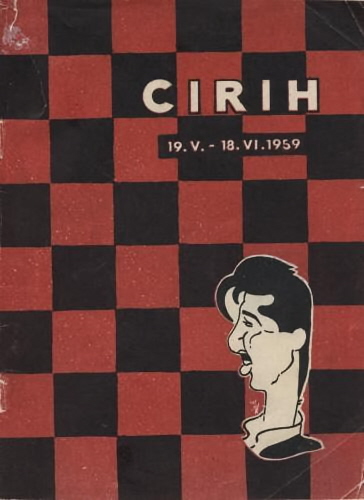
The other caricature of Gligoric referred to by Mr Clapham was also on the front cover and title page of 100 partija Svetozara Gligorica (Belgrade, 1952). From our copy:
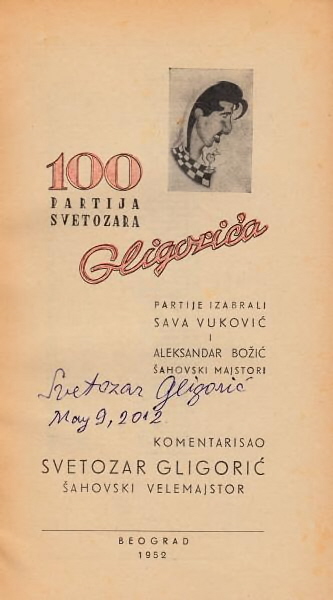
(8778)
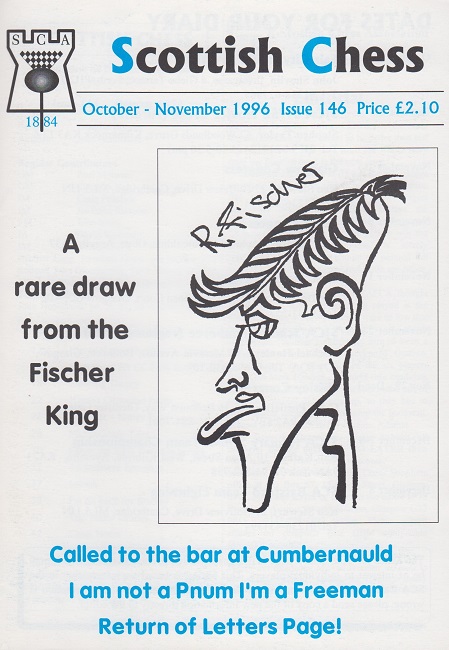
This caricature is often attributed to Fischer himself, but in C.N. 8724 a correspondent reported that the website of Marina Petric showed it as one of many by her late father, Berislav Petric. The link given in C.N. 8724 is no longer valid, and her new webpage [link also now broken] does not currently include the Fischer drawing.
(11096)
Marina Petric (Austin, TX, USA) informs us that her father, Berislav Petric, drew a set of chess caricatures in Belgrade and asked the players concerned, including Fischer, to sign them. She has provided the two pictures below:
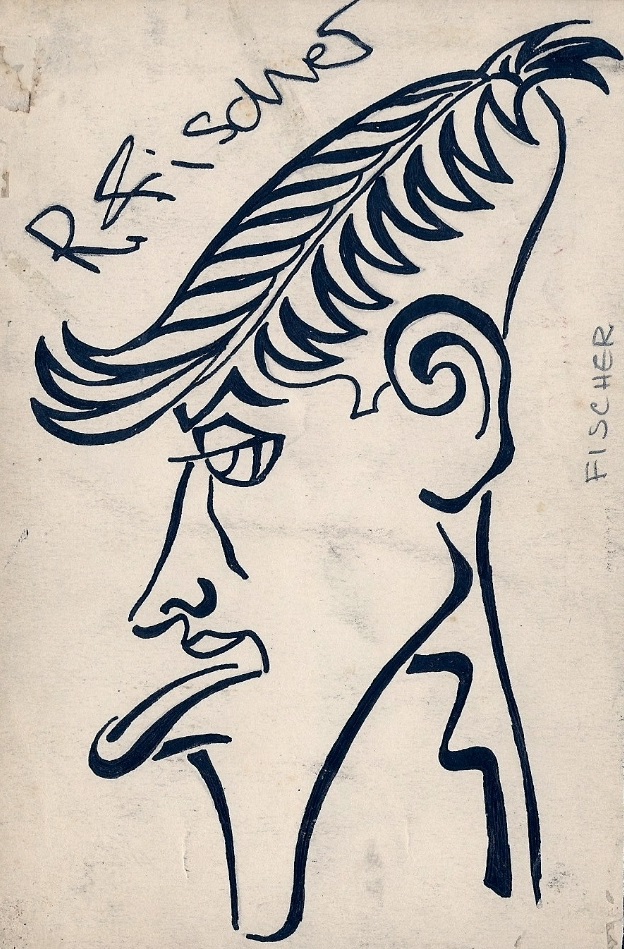
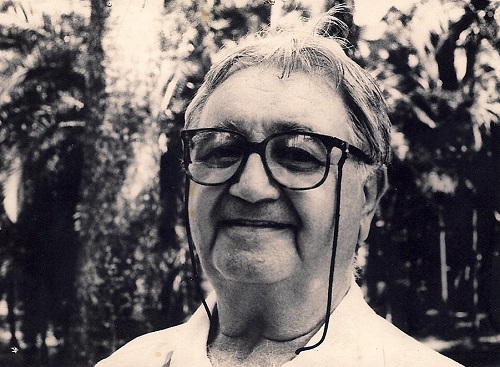
Berislav Petric
At our request, Marina Petric has added that her father was born in Sarajevo on 3 May 1929. After graduating in architecture, he emigrated to Brazil in 1964, and died in Rio de Janeiro on 8 May 1998.
(11100)
Concerning the 1961 match between Fischer and Reshevsky, aborted in a scheduling dispute when the score was level after 11 games, Frank Brady wrote on page 55 of Profile of a Prodigy (New York, 1965):
‘The Fischer-Reshevsky hassle brought the greatest flood of letters ever to inundate Chess Life – well over a thousand to a magazine whose entire circulation was only about six thousand. Almost all the mail was pro-Fischer, in marked contrast to his bad press elsewhere.’
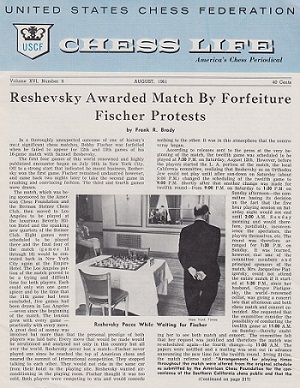
At the time, Frank Brady was the Editor of Chess Life.
(8923)
There are a few photographs of Bobby Fischer with Fidel Castro (Havana, 1966), but the shot below (of which a better copy is sought) is slightly different from a well-known one:
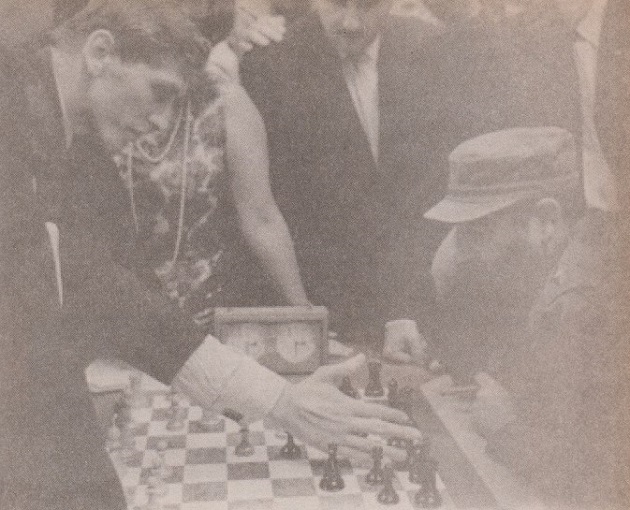
Source: El ajedrez en Cuba by José Luis Barreras Meriño (Havana, 2002), in the concluding photographic supplement.
(9033)
See too page 15 of the January 1967 Chess Review.
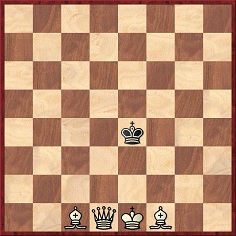
Mate in three
This composition has been widely published, e.g. on page 246 of Miniature Chess Problems From Many Countries by Colin Russ (London, 1981).
Russ gave it with a correct citation, ‘P. Benko, Chess Life, 1968’. From page 304 of the August 1968 Chess Life, on the second page of an article by Benko entitled ‘Echo and Repetition’:
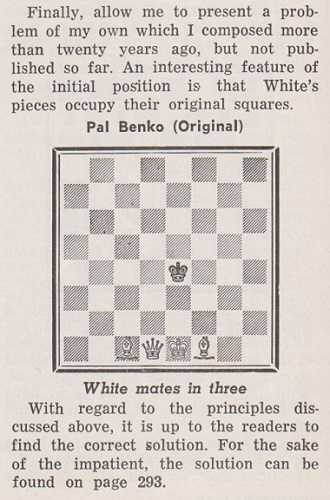
The solution on page 293:
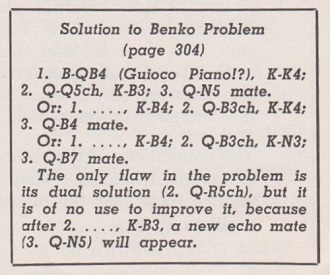
Benko also published the problem on other occasions, e.g. on page 233 of the April 1977 Chess Life & Review.
In an article dated 22 August 2005 on pages 38-39 of his dire book This Crazy World of Chess (New York, 2007) Larry Evans put the black king on e5 (a change which, curiously, does not affect the key move) and wrote:
‘Bobby Fischer once bet he could solve it in a half hour and lost. ... Bobby then bet Benko he could find a second solution (called a cook) if he could study it overnight. He lost again. There is one and only one key move.’
No source or other information was given, the word ‘once’ being deemed sufficient. The same diagram and text appeared on pages 41-42 of the ‘new edition’ (Las Vegas, 2009).
On pages 581-582 of Pal Benko My Life, Games and Compositions by P. Benko and J. Silman (Los Angeles, 2003) Benko wrote that it was ...
‘... the last problem I composed as a teenager. It was published many times because its original setup appealed to problem-solvers and tournament players alike.
During the Lugano Olympiad, which Bobby Fischer attended as a spectator, I made a bet with him that he couldn’t solve it in 30 minutes. As time ran out, he became irritated and demanded to see the answer. When I showed it to him, he insisted that other solutions had to exist. Naturally, this led to another bet. After more time passed, he was forced to settle both wagers. The teenage Pal Benko never would have guessed how much mileage he was going to get out of that little problem.’
In a ChessBase article dated 5 September 2011, in which Benko stated that he composed the problem when aged 15, the Fischer story at the Lugano Olympiad was related again.
It should, though, be noted that the Lugano Olympiad took place in October-November 1968 and that, as shown above, Benko had already published the problem in the August 1968 Chess Life.
A sidelight is that page 582 of Benko’s book added:
‘M. Grigoriev imitated this problem by placing Black’s king on b4. He published it in 64 in 1982, claiming a mate in two by 1 Qd5. Unfortunately, he overlooked the cook 1 Qd4+.’
An inscription by Benko on page 47 of our copy of Kandidatenturnier für Schachweltmeisterschaft by S. Gligoric and V. Ragozin (Belgrade, 1960):
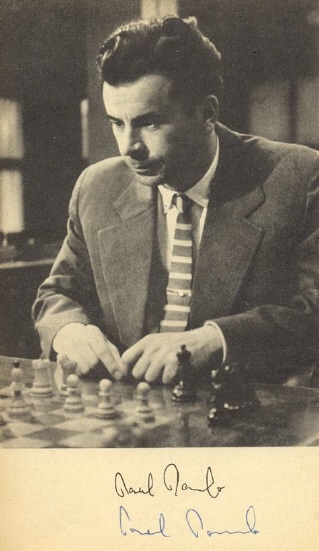
See too our feature article Pal Benko (1928-2019)
(9043)
A photograph taken at Herceg Novi, 1970:
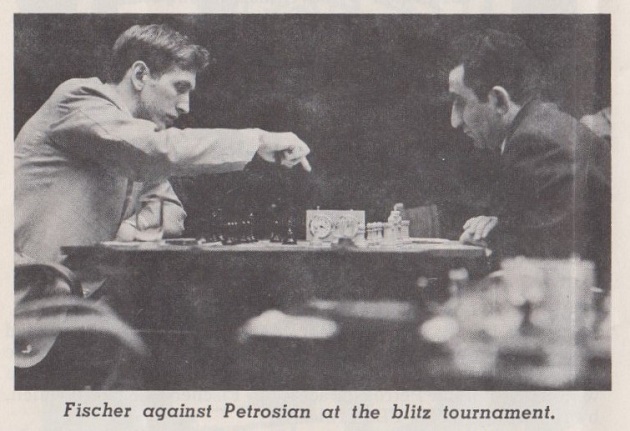
Source: Chess Life & Review, June 1970, page 302.
(9114)
Dan Scoones writes:
‘Despite the caption in Chess Life & Review, I believe that the photograph was taken not during the Herceg Novi blitz tournament but in the second round of the USSR v the Rest of the World match in Belgrade. The Belgrade game began 1 c4 g6 2 Nc3 c5, which corresponds to the position in the photograph, whereas the Herceg Novi game opened 1 c4 Nf6 2 Nc3 g6. Moreover, the design of the players’ chairs is consistent with the ones used in Belgrade, and in all the Herceg Novi photographs that I have seen there were white tablecloths. Finally, the shade of Fischer’s jacket matches other Belgrade photographs, but not pictures taken in Herceg Novi.’
(9119)
Alan Smith (Stockport, England) notes a photograph of Bobby Fischer in play against Joseph Sawyer (1874-1965) on page 3 of the Gazette (Montreal), 1 September 1956:
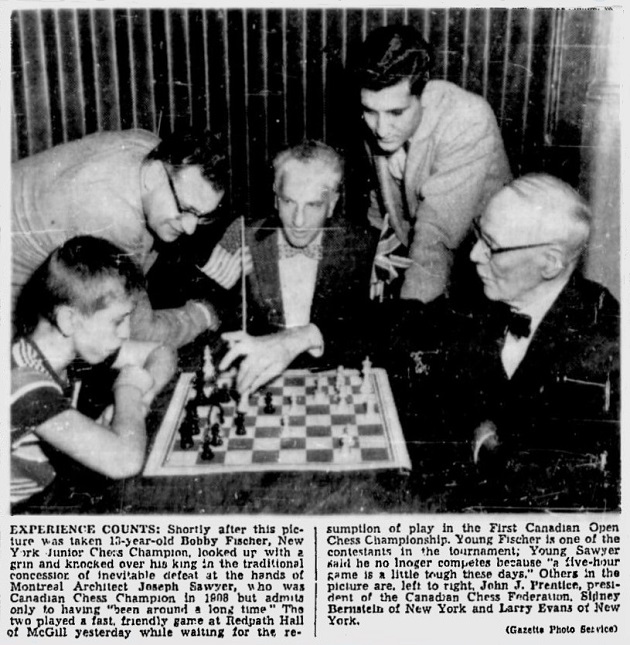
(9123)
From Stephen Wright (Vancouver, Canada):
‘The phrase “Chess is life” is frequently attributed to Fischer, but with no source given. The January 1962 issue of Harper’s Magazine has an article by Ralph Ginzburg, “Portrait of a Genius As a Young Chess Master”, which contains the following:
“... whereas chess is just a game for most people, a diversion from life, for Bobby Fischer chess is life and everything that happens off the chessboard is a distraction.”
Is this the source of the “Chess is life” phrase, i.e. written by Ginzburg and not a direct quote from Fischer at all, or did Fischer actually say or write these words in a documented source?’
So far we have found no other citations relevant to Mr Wright’s query. Below is the passage as it appeared at the bottom of page 54 of Harper’s Magazine, January 1962:

(9154)
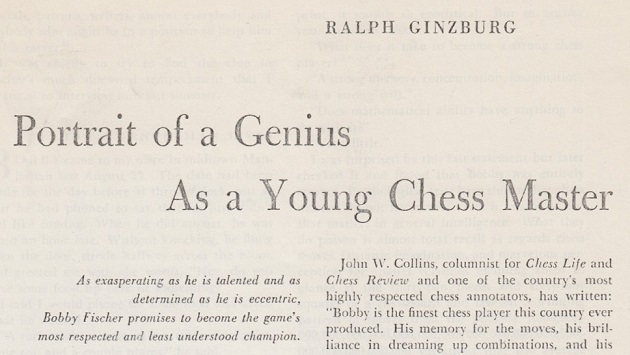
Ralph Ginzburg’s article was published on pages 49-55 of Harper’s Magazine, January 1962. It was reprinted on pages 189-195 of CHESS, 12 March 1962, and many extracts are on pages 35-39 of Bobby Fischer’s Conquest of the World's Chess Championship by Reuben Fine (New York, 1973).
The circumstances and context of the interview were discussed by Frank Brady on pages 46-47 of Profile of a Prodigy (New York, 1973) and on pages 137-139 of Endgame (New York, 2011). In 1984 (C.N. 718) Frank Skoff (Chicago, IL, USA) gave his view:
‘I doubt very much that Fischer was fairly dealt with. One can tell the truth selectively and still miss the mark. Ginzburg’s disposal of the tapes makes me suspicious since now no-one can check them against the printed interview for accuracy and completeness. Brady does not indicate how Ginzburg “disposed” of the tapes: were they sold or destroyed? Why? After all, Fischer was already a national figure, and surely any interviewer would keep the tapes in order to answer any possible criticisms that might arise after publication of the interview. Fischer did not get a square deal in my opinion.’
Regarding the tapes, in Profile of a Prodigy (page 47) Frank Brady reported Ginzburg’s claim ‘that he had disposed of them years earlier’. Subsequently, in Endgame (page 139), Brady was more specific: ‘Ginzburg said he destroyed all of the research materials that backed up the article.’
It may well be the most ‘colourfully quotable’ article ever written about a leading chess master, but the hallmark of a good writer is self-restraint when in possession of colourful material. How exactly should a biographer of Fischer handle the Ginzburg interview? Is quoting from it unfair to Fischer? If so, which parts? (Is it known whether he accepted some of the article but rejected specific points?) Does a simple forewarning to readers that the article has been disputed by Fischer and others give a chronicler carte blanche to quote salivatingly all the juiciest bits? Or, conversely, is questioning the article’s authenticity unfair to Ginzburg? And can a writer who refrains from using it be accused of pro-Fischer bias? That issue was touched on by W.H. Cozens on page 373 of the October 1974 BCM.
On page 139 of Endgame Brady went beyond the question of accuracy:
‘One can never know the full truth, of course, but even if Ginzburg merely reported verbatim what Bobby had said, it was a cruel piece of journalism, a penned mugging, in that it made a vulnerable teenager appear uneducated, homophobic and misogynistic, none of which was a true portrait.
Previous to this, Bobby had already been wary of journalists. The Ginzburg article, though, sent him into a permanent fury and created a distrust of reporters that lasted the rest of his life.’
Whatever effect the article had on Fischer, there is no place for wishful thinking and dramatic assumptions about the immediate general aftermath. Given the many outlandish, and appalling, statements ascribed to Fischer in the Ginzburg interview, it is all too easily imagined that in 1962 the article ‘brought Fischer widespread ridicule and hostility’ and ‘sent shockwaves around the chess world’. Not at all. In the major English-language chess magazines of the time (Chess Review, Chess Life, the American Chess Bulletin, the BCM and CHESS) the reaction to publication of the Harper’s Magazine article was either very muted or non-existent.
(9155)
From page 10 of the Colorado Springs Gazette Telegraph, 10 January 1973, page 6:
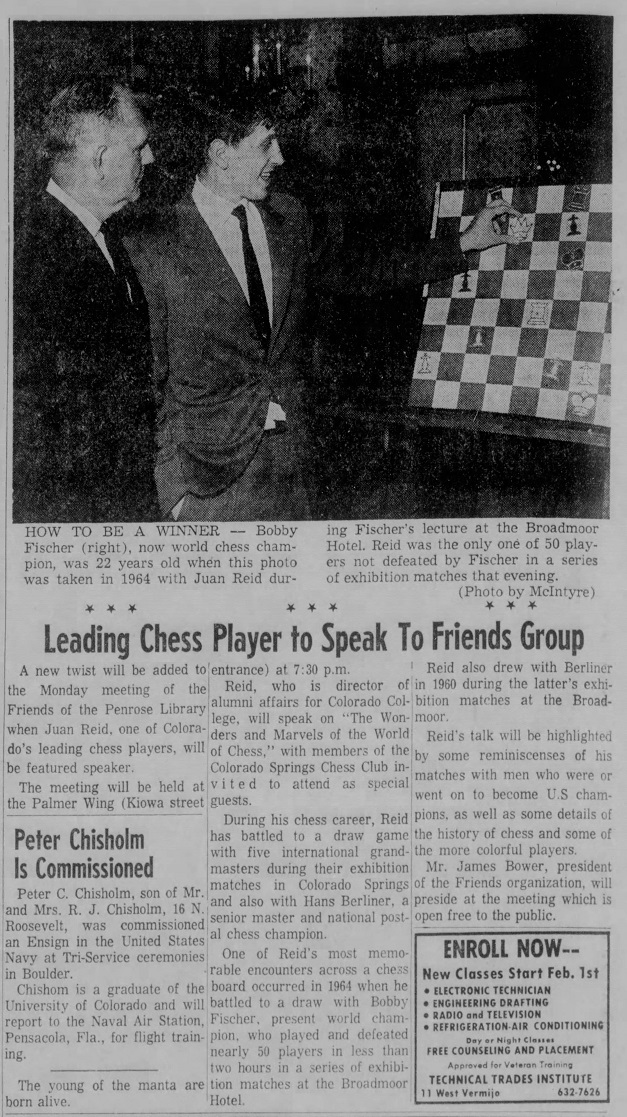
The position on the demonstration board is the conclusion of Fischer’s win against Celle (Davis, CA, 16 April 1964 – game 50 in My 60 Memorable Games), but what more is known about Fischer’s encounter with Juan Reid?
(9213)
Oliver Beck (Seattle, WA, USA) writes:
‘Juan Reid, who died in 1981, drew against Bobby Fischer in a 32-board simultaneous exhibition at the Broadmoor Hotel in Colorado Springs, CO on 28 April 1964, an event not recorded in John Donaldson’s two books (1994 and 2005) on Fischer’s US tour in 1964.
I received the information from an acquaintance related to Reid. Among the cuttings sent to me was a report on page 1 of the Colorado Springs Gazette Telegraph, 2 September 1972, as well as the game-score itself, published in the column of Bill Woestendiek (which, however, was written in this case by Marshall Sprague) in, I believe, the Colorado Springs Sun.’
The Gazette Telegraph item:

The game in the Woestendiek/Sprague column:
Robert James Fischer – Juan Reid
Colorado Springs, 28 April 1964
Philidor’s Defence
1 e4 e5 2 Nf3 d6 3 d4 Nf6 4 Nc3 exd4 5 Nxd4 Be7 6 f3 Nbd7 7 Be3 Ne5 8 Qd2 c5 9 Bb5+ Bd7 10 Nf5 O-O 11 Bxd7 Qxd7 12 O-O-O Nc4 13 Qe2 Nxe3 14 Qxe3 Rfd8
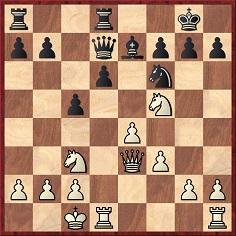
15 g4 Bf8 16 e5 Ne8 17 Ne4 Qc7 18 exd6 Nxd6 19 Nexd6 Bxd6 20 Nxd6 Rxd6 21 Rxd6 Qxd6 22 Rd1 Qxh2 23 Qe7 Qb8 24 Rd7 Qf4+ 25 Kb1 g6 26 Qe2 b6 27 a3 a6 28 Qd3 b5 29 Qd5 Re8 30 Ka2 Re5 Drawn.
(9219)
C.N. 9218 reported a denial by Fischer, although not from a primary source, that he had ever claimed an ability to give knight-odds to any woman in the world. The claim was attributed to him in the Ginzburg interview (C.N. 9155), and below is the alleged exchange between Ginzburg and Fischer, on page 50 of Harper’s Magazine, January 1962:
‘“Lisa Lane has said – and lots of other people agree – that you’re probably the greatest chess player alive.”
“That statement is accurate, but Lisa Lane really wouldn’t be in a position to know. They’re all weak, all women. They’re stupid compared to men. They shouldn’t play chess, you know. They’re like beginners. They lose every single game against a man. There isn’t a woman player in the world I can’t give knight-odds to and still beat.”’
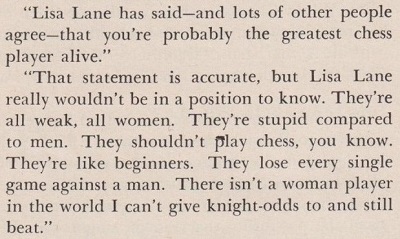
Whether or not Fischer spoke those words, or anything similar, they have been widely disseminated, and the name of Nona Gaprindashvili has somehow been drawn in. Below are three passages written by Larry Evans:
‘Why, of [sic] why, are there no lady grandmasters?
This tedious topic was kicked around long before Bobby Fischer proclaimed: “Women are weakies. I can give knight odds to any woman in the world. To Nona even, a knight!” Russia’s Mikhail Tal politely demurred: “Fischer is Fischer, but a knight is a knight!”’
Source: a syndicated column by Evans published in, for instance, the Sunday Oregonian, 2 December 1973, page F3.
‘Bobby Fischer probably regrets ever saying: “They’re all weak, all women. They’re stupid compared to men. They shouldn’t play chess, you know. They’re like beginners. They lose every single game against a man. There isn’t a woman player in the world I can’t give knight-odds to and still beat ... To Nona even, a knight!”’
Source: a syndicated column by Evans published in, for instance, the Oregonian, 15 March 1976, page B6, and reproduced on page 71 of Evans’s book The Chess Beat (Oxford, 1982).
‘... Bobby Fischer’s boast over 30 years ago that he could give a knight to any woman – even world champ Nona Gaprindashvili. “Fischer is Fischer. But a knight is a knight”, pooh-poohed Mikhail Tal.’
Source: Chess Life, February 1995, page 17.
In a discussion of the Harper’s Magazine interview on page 361 of Impact of Genius (Seattle, 1992) R.E. Fauber wrote:
‘He denounced “girls” as “silly” and branded them “weakies”. He offered to give knight odds to any female chess players. The Soviets joined in the general hilarity by offering to pit newly-crowned women’s world champion Nona Gaprindashvili against him, at those odds. Fischer did not respond.’
We offer some factual observations:
1) The word ‘silly’ is not in the Ginzburg interview. The word ‘weakies’ is on page 51, but in a different context, i.e. not specifically about females who play chess:
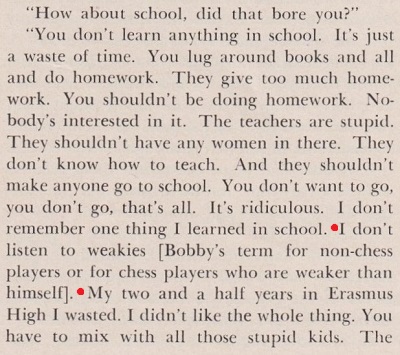
2) The words attributed to Fischer by Ginzburg were not an ‘offer’ to give knight odds but a claim that (hypothetically or theoretically) he could give such odds;
3) Nona Gaprindashvili was not mentioned in the Harper’s Magazine interview, and at that time she was not ‘newly crowned’ (Fauber) or ‘world champ’ (Evans). She did not win the women’s world championship title until October 1962, about nine months after publication of the interview.
On page 367 of the December 1963 Chess Review Petar Trifunovic wrote:
‘Someone once asserted to the writer that women’s chess is very weak, declaring as proof that Bobby Fischer said he can give knight odds to the women’s champion. The writer doesn’t know that Fischer said anything of the sort, but is sure no-one can give knight odds to Nona Gaprindashvili.’
Chess Review added an editorial footnote:
‘Some years ago a magazine article did quote Fischer to that effect. But he has said he was improperly quoted on many points, out of context or otherwise. Certainly, he did not mention Nona Gaprindashvili as she was not then women’s champion.’
4) We do not know where and when Mikhail Tal may have made the remarks ascribed to him.
5) During the second match between Fischer and Spassky, 30 years after the Ginzburg interview, Fischer was asked about women’s chess by Cathy Forbes at the fifth press conference, on 5 October 1992. Below is the exchange, as transcribed on page 152 of No Regrets by Yasser Seirawan and George Stefanovic (Seattle, 1992):
Forbes: ‘Why, in your opinion, do women generally not play chess as well as men?’
Fischer: ‘Well, it seems to be nature, but perhaps with time they are improving and I assume that they will continue to improve.’
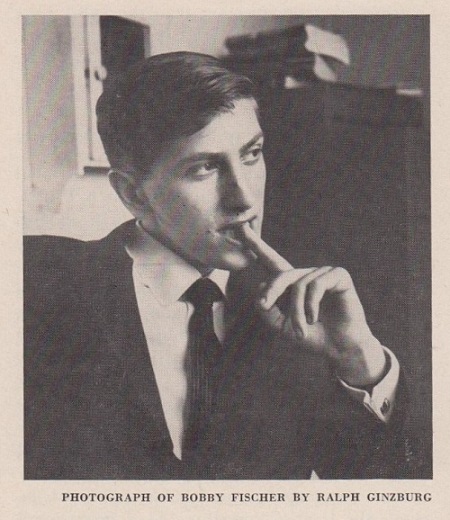
From Harper’s Magazine, January 1962, page 52
(9253)
On the topic of Chess and Women and, in particular, Bobby Fischer’s views (C.N.s 9218 and 9253), Olimpiu G. Urcan notes a remarkable interview with Fischer (Canadian Broadcasting Corporation).
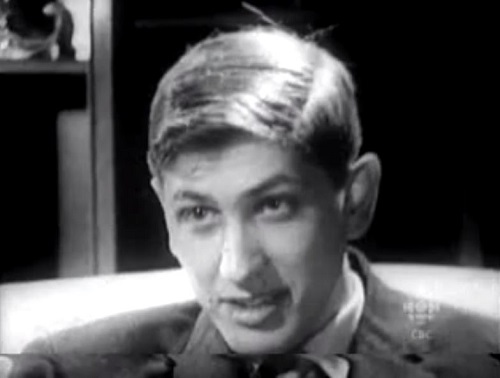
(10750)
Now, our correspondent has found this report on page 27 of the Montreal Gazette, 27 January 1962 [sic – not 1963 as indicated on the video page], which gives information on the transmission date and states that the interviewer was Bob Quintrell:
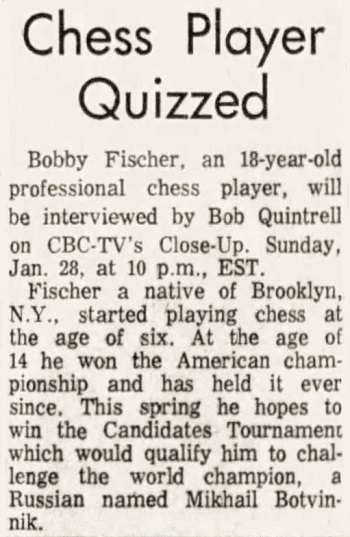
(10950)
Having watched The Story of LIFE Magazine, Michael McDowell points out that the comments about Fischer by the photographer Harry Benson (in the sequence beginning at about 54’15”) are markedly different from what Benson said in the documentary Bobby Fischer Against the World (C.N. 7345).
(9281)
Carlos Drake (Buenos Aires) forwards a chess report on page 11 of Tribuna, 11 December 1971:
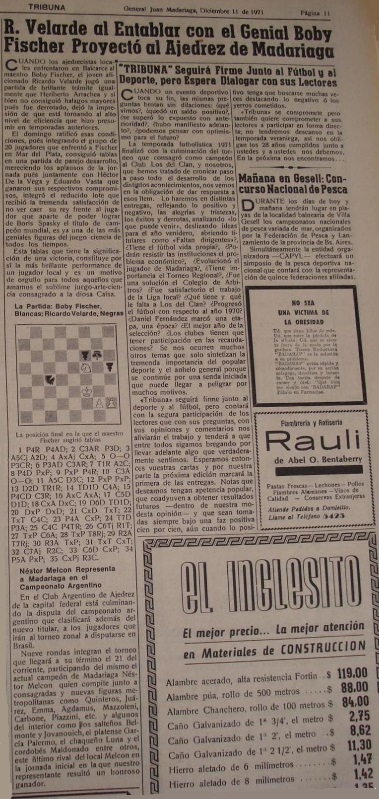
Robert James Fischer – Ricardo L. Velarde
Simultaneous exhibition, Mar del Plata, 5 December 1971
Sicilian Defence
1 e4 c5 2 Nf3 d6 3 Bb5+ Bd7 4 Bxd7+ Nxd7 5 O-O g6 6 c3 Ngf6 7 Re1 Bg7 8 d4 cxd4 9 cxd4 e5 10 Nc3 O-O 11 Bg5 Qb6 12 dxe5 dxe5 13 Qd2 Rfe8 14 Rad1 Nc5
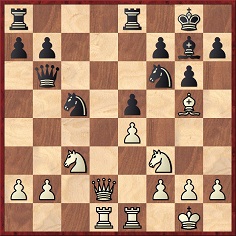
15 b4 Ne6 16 Bxf6 Bxf6 17 Nd5 Qd8 18 Nxf6+ Qxf6 19 Qd6 Rad8 20 Qxe5 Qxe5 21 Nxe5 Rxd1 22 Rxd1 Ng5 23 f4 Nxe4 24 Rd7 f6 25 Ng4 h5 26 Nh6+ Kh8 27 Rxb7 Nc3 28 Rxa7 Re1+ 29 Kf2 Re2+ 30 Kf3 Rxa2 31 Rxa2 Nxa2 32 Nf7+ Kg7 33 Nd6 Nxb4 34 f5 gxf5 35 Nxf5+ Kg6 Drawn.
(9446)
The game below has been provided by Carlos Drake, who received it from Bustos in a letter dated 1 November 2007. It was played in a 20-board simultaneous exhibition during Fischer’s visit to Argentina.
Robert James Fischer – Carlos Alberto Bustos
Balcarce, 1 December 1971
Pirc Defence
1 e4 d6 2 d4 Nf6 3 Nc3 g6 4 f3 Bg7 5 Be3 O-O 6 Qd2 Nc6 7 O-O-O e5 8 d5 Ne7 9 g4 Nd7 10 h4 f5 11 gxf5 gxf5 12 exf5 Nxf5 13 Bg5 Nf6 14 Bd3 a6 15 h5 Qe8 16 Nge2 Rf7 17 Rdg1 Kh8
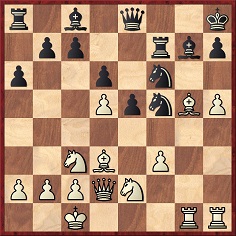
18 h6 Bf8 19 Rg2 Bd7 20 Rhg1 Be7 21 Ng3 Nxg3 22 Rxg3 Nh5 23 R3g2 Bf5 24 Bxf5 Rxf5 25 Ne4 Qf7 26 Bxe7 Qxe7 27 Ng5 Nf4 28 Rg4 Rg8 29 Nf7+ Qxf7 30 Rxg8+ Qxg8 31 Rxg8+ Kxg8 32 Qb4 b6 33 Qa4 Ng6 34 Qxa6 Nf8 35 Qc8 Rf7 36 a4 Re7 37 b4 Kf7 38 a5 bxa5 39 bxa5 Rd7 40 a6 Ke7 41 a7 Resigns.
(9486)
The start of the Preface to How Fischer Won by C.J.S. Purdy (Sydney, 1972), page vii:
‘At least a thousand million people have heard of the new World Chess Champion, Bobby Fischer. Most of them, including almost all the non-players and moderate players, are inclined to dislike what they hear. The enthusiasts excuse what they don’t like because chess looms large in their lives, and Fischer plays chess that is out of this world.
In this book I have tried to show that there is really little to dislike, and therefore little to excuse.’
(9571)
Dan Scoones writes:
‘I have noted three versions (i.e. discrepancies in White’s 13th and 17th moves) of the game between Arthur Feuerstein and Bobby Fischer at the 1956 Eastern States Open in Washington, DC:
- Fischer’s Chess Games (Oxford, 1980) and The Games of Robert J Fischer by R.G. Wade and K.J. O’Connell (London, 1981):
1 Nf3 Nf6 2 c4 g6 3 g3 Bg7 4 Bg2 O-O 5 O-O d6 6 d4 Nbd7 7 Nc3 e5 8 e4 exd4 9 Nxd4 Nc5 10 f3 Nfd7 11 Be3 a5 12 Qc2 a4 13 Rfb1 c6 14 Bf1 Qe7 15 Qd2 Re8 16 Nc2 Ne5 17 Rd1 Bf8 18 Bh6 Bxh6 19 Qxh6 f5 20 exf5 Bxf5 21 Nd4 Bd3 22 Bxd3 Nexd3 Drawn.
- Bobby Fischer 1: 1955-1960 edited by S. Soloviov (Madrid, 1992):
1 Nf3 Nf6 2 c4 g6 3 g3 Bg7 4 Bg2 O-O 5 O-O d6 6 d4 Nbd7 7 Nc3 e5 8 e4 exd4 9 Nxd4 Nc5 10 f3 Nfd7 11 Be3 a5 12 Qc2 a4 13 Rfd1 c6 14 Bf1 Qe7 15 Qd2 Re8 16 Nc2 Ne5 17 Kg2 Bf8 18 Bh6 Bxh6 19 Qxh6 f5 20 exf5 Bxf5 21 Nd4 Bd3 22 Bxd3 Nexd3 Drawn.
- Bobby Fischer by K. Müller (Milford, 2009):
1 Nf3 Nf6 2 c4 g6 3 g3 Bg7 4 Bg2 O-O 5 O-O d6 6 d4 Nbd7 7 Nc3 e5 8 e4 exd4 9 Nxd4 Nc5 10 f3 Nfd7 11 Be3 a5 12 Qc2 a4 13 Rf2 c6 14 Bf1 Qe7 15 Qd2 Re8 16 Nc2 Ne5 17 Rd1 Bf8 18 Bh6 Bxh6 19 Qxh6 f5 20 exf5 Bxf5 21 Nd4 Bd3 22 Bxd3 Nexd3 Drawn.
The game did not appear in the earlier (1972) editions of the Wade/O’Connell book, in Die gesammelten Partien von Robert J. Fischer by C.M. Bijl (IJmuiden, 1976 and Nederhorst den Berg, 1986) or in the two-volume Russian collection of 744 games (Moscow, 1993).’
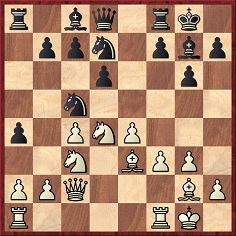
Did White play 13 Rfb1, Rfd1 or Rf2?
(9579)
From Stuart Rachels (Tuscaloosa, AL, USA):
‘Legend has it that Bobby Fischer said (or wrote) “To get squares, you gotta give squares”, or something similar. This “quotation” appears on various websites as well as on, for instance, page 11 of Soltis’ Bobby Fischer Rediscovered (London, 2003). However, I have never seen a source given for the comment. Is there any evidence that it emanates from Fischer? Does it occur in any of his writings or interviews, or are there witnesses who claim to have heard him say it?’
We see the remark in many books notable for their lack of sources. For instance:
Karl Marx Plays Chess by A. Soltis (New York, 1991), page 18; reproduction of his column on pages 10-11 of the March 1981 Chess Life;
The 100 Best Chess Games of the 20th Century, Ranked by A. Soltis (Jefferson, 2000), page 144;
Bobby Fischer Rediscovered by A. Soltis (London, 2003), page 11;
The Wisest Things Ever Said About Chess by A. Soltis (London, 2008), page 249;
What It Takes to Become a Chess Master by A. Soltis (London, 2012), page 192.
(9594)
Michael Clapham quotes the final paragraph of an article, ‘Fischer Dialogue’, by Ed Edmondson in the June 1970 Chess Life & Review, pages 317-319:
‘What next for Fischer? At this writing he is reported still in Yugoslavia, considering whether or not to play in Skopje. Meantime, the entire chess world cannot help but be intrigued once again by the question C.J.S. Purdy posed in his Chess World shortly after Fischer’s withdrawal from the 1967 Interzonal: “Why all this ponderous succession of tournaments to select an official challenger? When the whole world can see that we have one sheer chess genius among us, why can’t we cut the red tape and let him play a match against the titleholder?”’
We consider this an excellent illustration of how all quoted material needs to be double-checked. Did Purdy really suggest in 1967 that the world championship qualification system should be set aside because of Fischer’s supposed supremacy over all possible challengers (with the consequence that Spassky would not have played his second title-match against Petrosian)?
Firstly, a news item on page 108 of Chess World, July-August 1967 gave the background to Fischer’s withdrawal from that year’s Interzonal in Sousse:
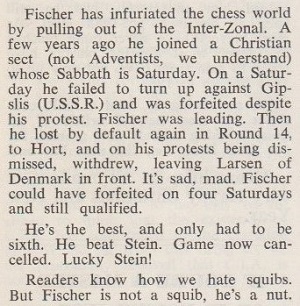
An article by Purdy entitled ‘The Fischer Problem’ on pages 137-139 of the September-October 1967 issue of Chess World contained the comments quoted in Chess Life & Review, but it will be observed that Edmondson did not respect their context:
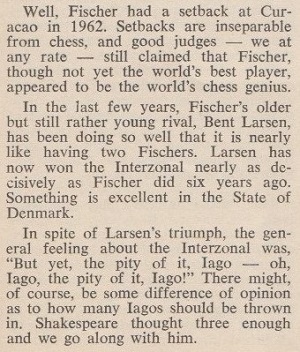
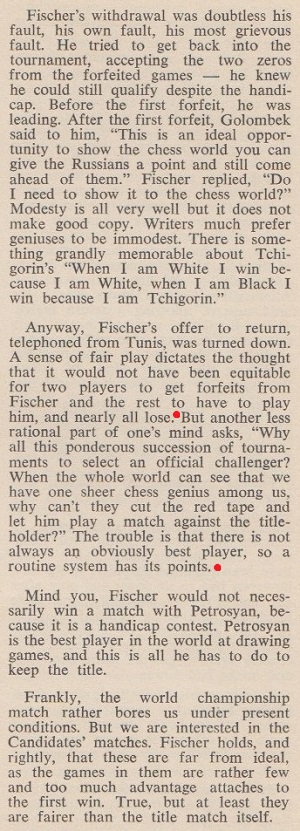
(9645)
‘Fischer, a New Tchigorin’ was the title of an article by C.J.S. Purdy on pages 134-136 of Chess World, September-October 1967. He annotated Fischer v Stein, Sousse, 1967 (the final game in Fischer’s My 60 Memorable Games) with this introduction:
‘Here is the game, which in the tournament doesn’t officially exist and yet was its masterpiece, symbolising the triumph of genius over schooled mastery.’
Purdy’s concluding observation:
‘By ordinary human standards, playing chess like White in this game would seem to require nerves of steel. Fischer’s powers of calculation and confidence in his judgment make it possible for him to conduct vital contests in a style which nobody else would venture over the board except in games played for fun. Tal certainly has played with at least equal daring, but it seems to me that he deliberately speculates. Fischer gives the impression of having everything sewn up.’
Irving Chernev tinkered with Purdy’s words on page 197 of The Golden Dozen (Oxford, 1976). The full annotations were reproduced on pages 90-92 of C.J.S. Purdy’s Fine Art of Chess Annotation and Other Thoughts by Ralph J. Tykodi (Davenport, 1992).
Purdy’s note after 25 Qg3 began:
‘The Purdy rule, “Always unpin”, is dead right here.’
(9702)
An extract from page 15 of Searching for Bobby Fischer by Fred Waitzkin (New York, 1988):

How far back can the remarks attributed to Fischer (sometimes with ‘ego’ instead of ‘mind’) be traced?
In a 1971 television interview with Dick Cavett (beginning at about 3’20”) Fischer stated that his greatest pleasure in chess was breaking the opponent’s ego. See too the Cavett link in C.N. 5460.
(9802)
From page 163 of The Kings of Chess by William Hartston (London, 1985), concerning the 1971 Fischer v Petrosian match:
‘Fischer seemed in a good mood at the start, almost sociable. One journalist found a good description of his manner: “Ordinarily, Fischer is socially evasive rather than hostile, likely to greet even an old friend as if he were expecting a subpoena.”’
And from page 18 of Bobby Fischer Goes to War by David Edmonds and John Eidinow (London, 2004):
‘A journalist wrote that Fischer was likely to greet even an old friend as if he were expecting a subpoena.’
People worth quoting are worth naming. The ‘journalist’ who made the remark, and it is a good one, was Robert Cantwell, on page 31 of Sports Illustrated, 8 November 1971:
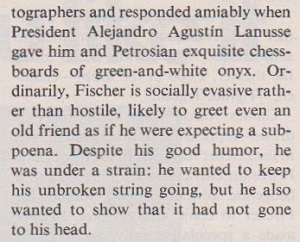
Cantwell’s article, entitled ‘Bobby Clears the Board for the Title’, was on pages 30-32 and 35.
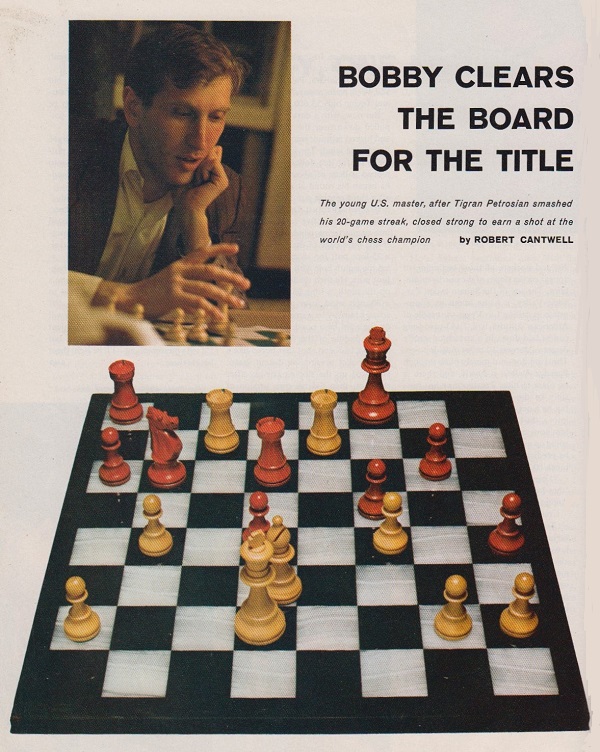
(9814)
Brian Karen (Levittown, NY, USA) asks for further information about Fischer’s view of Capablanca’s Hundred Best Games of Chess by Harry Golombek (London, 1947).
C.N. 1928 (see our feature article on the book) alluded to Golombek’s remarks on pages 13-14 of The Games of Robert J. Fischer by Robert G. Wade and Kevin J. O’Connell (London, 1972). Below are his exact words:
‘I have written elsewhere (in my book on Capablanca’s games) of the apparent simplicity of Capablanca’s style which conceals a great deal of art. The same could well be said of most of the games of Bobby Fischer. He himself has acknowledged this influence and I remember some years ago in a recorded interview between him and Leonard Barden that was broadcast on a chess programme of the BBC how he said he had read and appreciated my book on Capablanca, thereby at once gratifying me as an author and confirming my already mentioned belief in the effect Capablanca had had on Fischer.’
C.N. 7987 quoted from pages 54-55 of My Seven Chess Prodigies by John W. Collins (New York, 1974):
‘In Bobby Fischer’s Chess Games, by Wade and O’Connell, contributing editor Sir [sic] Harry Golombek remarks on the influence of Capablanca on Bobby’s style and sees a strong resemblance in the respective strategies that run through their games. He recalls that Bobby acknowledged the influence in an interview with Leonard Barden that was broadcast on the BBC, and that Bobby also said he had read and appreciated a book on Capablanca by Golombek. The influence and resemblance are evident, and I have always been aware of it, recent evidence of it being in his third and fifth games with Spassky in Iceland. But I must say that I do not recall Bobby ever dwelling on his admiration of Capablanca or playing over great numbers of Capa’s games, though I assume he played over all of them at some time.’
Golombek also referred to the radio interview in his column (‘Fighting play of Bobby Fischer’) on page 11 of The Times, Weekend Features, 7 January 1967. After listing some of the American’s recent results, Golombek wrote:
‘All this, and much more, has been achieved by a style of play marked by deep yet clear positional strategy. It is significant in this respect that some years ago, in a radio interview, he said that he enjoyed playing over Capablanca’s games. A fighting player who is rarely content with a draw, Fischer produces game after game full of effective yet pleasing ideas. He is that rare combination, a player who thinks for himself and yet can learn from the practice of others.’
We have consulted Leonard Barden, but it is not possible to say whether the recording and/or transcript of his exchanges with Fischer have survived. At present, we can only quote from Mr Barden’s ‘Chess forum’ column in the Listener, 15 October 1964, page 607:
‘The 21-year-old United States champion Robert J. Fischer is undoubtedly the most controversial personality in present-day international chess. Listeners to the Third Network chess programmes will remember his forthright comments on other great masters when I interviewed him during the Leipzig Olympics in 1960 ...’
See too A Fischer Interview (responses to Román Torán’s questions in Leipzig) and Fischer’s Views on Chess Masters (his famous article on pages 56-61 of Chessworld, January-February 1964).
In an enthusiastic review of The Unknown Capablanca by David Hooper and Dale Brandreth (London, 1975) Golombek wrote on page 10 of The Times (Saturday Review), 24 May 1975:
‘... my admiration for Capablanca’s style of play knows no bounds and my gratitude to the authors is correspondingly great.
... I, too, have spent many years studying the games of Capablanca and, nearly 30 years ago, published a book on him which, so I fondly hoped, would have helped to relieve the indigence of old age – an ever-present thought in the mind of a chess master.’
He made a further comment (in the third person) about his 1947 volume on page 354 of The Encyclopedia of Chess (London, 1977):
‘Capablanca was too lazy to annotate his later games. Golombek, a fervent admirer of his style of play, improved his own strength of play so much after studying Capablanca’s games that he won the British championship almost immediately after finishing the book.’
(9831)
Recorded material from the 1960 Olympiad in Leipzig was included in the BBC radio programme about chess broadcast on Network Three on 23 April 1961, beginning at 16.00:
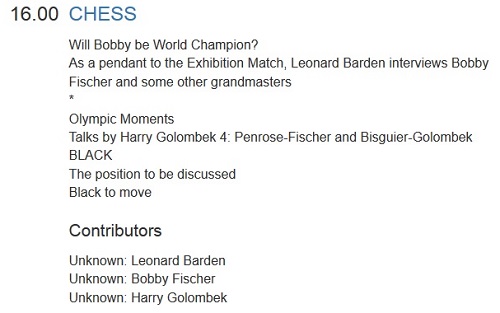
The BBC Written Archives Centre has informed us that the PasB (Programme-as-Broadcast) documentation merely states:
‘Interviews: (recorded at the Leipzig Chess Congress)
Between Leonard Barden
and various Grandmasters (NF).’
‘NF’ stands for No Fee, which means that the BBC did not enter into contracts with the interviewees and, therefore, did not list them individually on the PasB.
(9960)
From Leonard Barden:
‘My clear recollection of the recordings which I made during the 1960 Olympiad is that they were not really interviews in the normal sense, but informal memory tests, seeking recall of one or two key moments from the games of others and one or two from the subject’s own play, with a few supplementary questions arising from the flow of the conversation.
Before the British Chess Federation team left for Leipzig, the BBC issued me with a heavy tape-recorder, which I carried over my shoulder and which was an extra to my suitcases. They housed thick loose-leaf volumes of handwritten openings data plus what turned out to be the most valuable item of all: a copy of the latest Deutsche Schachzeitung, which the postman delivered just as I was leaving the house. It contained the Ojanen v Keres game (Modern Benoni) that Jonathan Penrose consulted to effect on the morning of the final round before his game with Tal.
After I arranged interview times with the subjects in Leipzig, I found that the tape recorder batteries no longer functioned. So I went to the Leipzig branch of GUM, the main department store chain then in Eastern Europe, and bought replacements. These did not work either. I then arrived at the local radio station. As I hoped, it was impressed to have a visitor from the BBC, and it took pleasure in providing me with working batteries. Somewhat daring in the ambiance of the time, I ventured a political joke: capitalist batteries did not work, but communist batteries were no better. This was well received, and we parted amicably.
The subjects of the quasi-interviews included Tal, who had the best memory of all, as one would expect from other well-known reports around that time of his phenomenal powers of recollection. Choosing a game from his youth, I asked about his loss to Lev Aronin at Riga, 1954. In retrospect, this was probably not a good test choice since the game was noteworthy as an early example of the Tal sacrificial style, taking on the Caro-Kann and sacrificing a bishop at e6 and a knight at g5 to keep the black king in the centre, before missing a probable win by 17 Rxe5+. Tal responded by repeating the pre-game banter between the players, the course of the game itself, and a further conversation with Aronin at the post-mortem. He also had excellent recall when I asked him about games by a couple of other grandmasters.
Korchnoi received me at noon when he was still in bed, smoking, and told me amid coughs that he used one-mile runs for physical training, a claim which provoked my scepticism but, of course, was perfectly true. His memory test performance was quite good.
Gligoric surprised me negatively since I had assumed that as a highly professional and dedicated chess worker he would have a good memory. In fact, he had poor recall even of his own games.
Finally, Fischer had a good memory of a couple of his early games from the mid-1950s, but could recall little when I asked for his recollections of games by his rival Reshevsky.’
The famous Penrose v Tal game referred to by Mr Barden was annotated by Penrose on pages 360-362 of the December 1960 BCM. After 1 d4 Nf6 2 c4 e6 3 Nc3 c5 4 d5 exd5 5 cxd5 g6 6 e4 d6 7 Bd3 Bg7 8 Nge2 he wrote:
‘I was aware that these moves had been played earlier in the year in a game Ojanen-Keres, and although I could not recollect the further course of the game very well, I thought that a variation good enough to lead to the defeat of Keres must be a very good one.’
The Ojanen v Keres game, played in a match between Finland and Estonia (Helsinki, 15 May 1960), had been published on page 224 of the July 1960 Deutsche Schachzeitung with notes by Eero Böök. Two books which discuss it, as well as Penrose’s victory over Tal, are Ojasen oival luksia by K. Ojanen and V. Salonen (Toijala, 1975) and Kaarle Ojanen – elämä ja pelit by H. Hurme, I. Kanko, J. Norri and P. Saharinen (Helsinki, 2009). See, respectively, pages 67-71 and pages 174-177.
(9984)
More and more archive film on chess is coming to light, including particularly interesting footage from the Candidates’ tournament, Bled in 1959.
Two screen-shots:
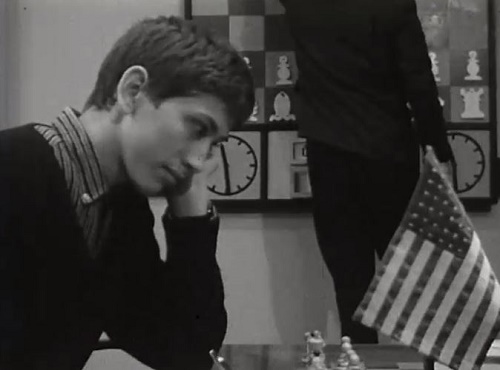
Bobby Fischer
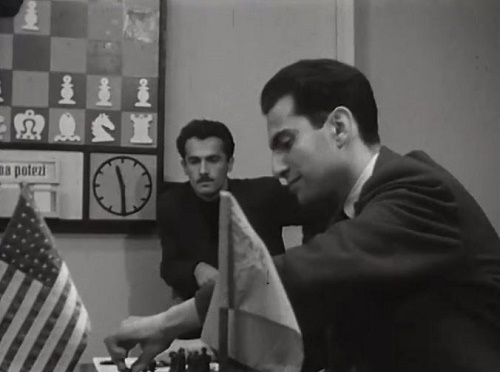
Mikhail Tal
(9886)
From the back cover of Tutte le partite di Bobby Fischer by Karsten Müller (Rome, 2011):
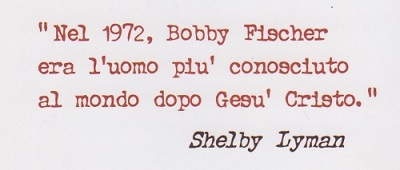
Whether Shelby Lyman ever made that specific assertion is unclear, but after about an hour of Liz Garbus’s 2011 documentary film Bobby Fischer Against the World (C.N. 7345) he did say to camera:
‘One of Fischer’s problems was that, after the match, he was supposedly better known by the population of the world than anyone except for Jesus Christ. And he was a guy who treasured his privacy. He had a problem.’
(9953)
Ewen McLaughlin (Betws, Wales) enquires about the position after 57 Ka6 in the fourth match-game between Fischer and Taimanov, Vancouver, 25 May 1971:
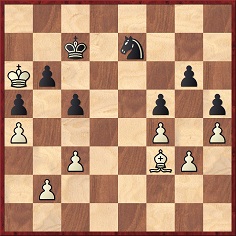
Most sources, old and new, have Taimanov’s move as 57...Ng8, but occasionally (e.g. in the 1976 and 1986 editions of Christiaan M. Bijl’s anthology of Fischer’s games) 57...Nc8 is given.
Can the discrepancy be resolved beyond all reasonable doubt?
(9959)
Evidence in support of Taimanov’s move being 57...Nc8, as opposed to 57...Ng8, has not been found. Dan Scoones notes that, for instance, the June 1971 issue of Northwest Chess gave 57...Ng8 (see page 9).
However, the magazine then had 58...Ne7, 59...Kc6 and 60...Kc7. As Ewen McLaughlin points out, that sequence is on page 369 of Profile of a Prodigy by Frank Brady (New York, 1973) but the other books consulted put 58...Ne7, 59...Nc6 and 60...Ne7.
(9991)
From page 106 of CHESS, 10 December 1960:
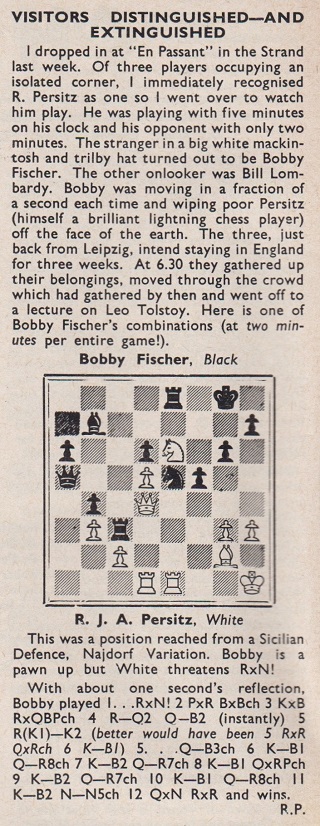
From Leonard Barden:
‘The writer in CHESS, ‘R.P.’, was probably Roland Payne, a strong blitz player and a regular at the “En Passant” in the Strand. He had an excellent kibitzer memory and was well capable of reconstructing the Persitz v Fischer fragment.
The reference to Fischer going to a Tolstoy lecture may sound odd, but 20 November 1960 was the 50th anniversary of the death of the Russian writer (and chessplayer), and there were lectures in both England and the United States to mark the occasion. The academic Isaiah Berlin recorded one such lecture for the BBC on 23 November.’
(9992)
C.N. 10159 showed a picture of Koltanowski drawn by Henry Grob and published on page 1 of the 4 December 1936 issue of Schach-Kurier.
Richard Forster (Zurich) notes that it is one of five portraits of chess figures in Henry Grob: der Zeichner und Maler by Henry Grob (Zurich, 1965). They include Fischer:
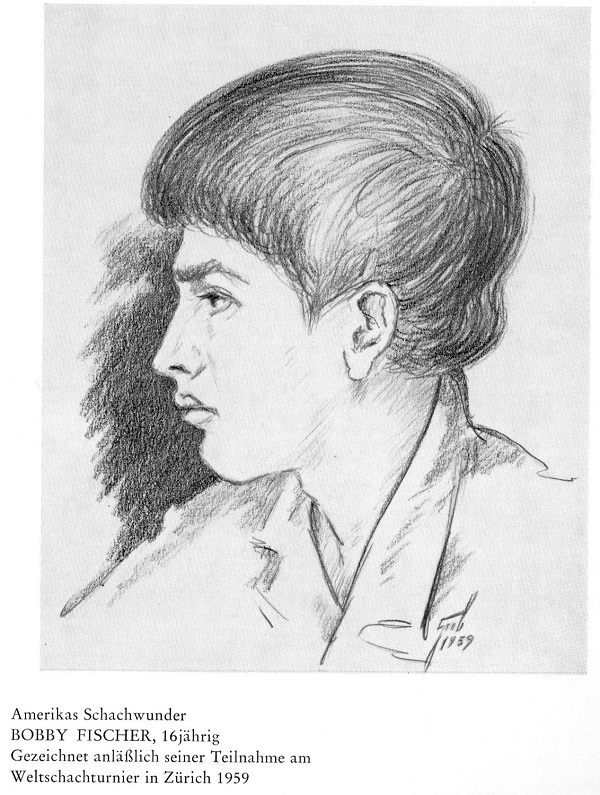
(10217)
From an article about Walter Browne by Mark Saylor on pages 10-12 of the January 1978 Chess Life & Review:
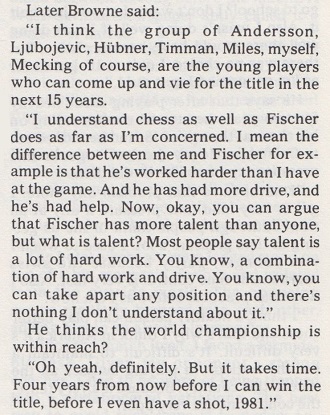
(10228)
Many people are unaccountably fond of predicting who will win chess matches and tournaments, but a rarer, darker form of prophecy concerns how a player’s life will end. The example that we have in mind is by Joseph Platz (1905-81): his prediction that Bobby Fischer ‘would end his life by suicide or die in an insane asylum’.
In a simultaneous display in 1964 Fischer was defeated by Platz, who annotated the game on pages 4-5 of the Spring 1964 issue of the Connecticut Chess Light. Annoyed that his greatest chess hero, Emanuel Lasker, was omitted from Fischer’s list of the ten greatest masters in an article in the January-February 1964 issue of Chessworld, Platz wrote:
‘My victory over Fischer gave me a double satisfaction in as much as I avenged Dr Lasker, whom Fischer does not even rate among the ten greatest players of all times, and whom Fischer calls a “weak player”. In the name of Lasker I answer, “Indeed for 27 yrs he was a very weak! player”. And I would add: Ask any group of players who was the greatest player of all times and some will say Alekhine, and some will say Lasker. But no-one will give Lasker less than second place.’
After quoting views on Lasker by Réti, Helms, Alekhine (inaccurately, as pointed out in C.N. 138), Fine, Capablanca, Reinfeld and Einstein, Platz concluded:
‘So much about some of the geniuses who paid homage to Lasker, the chessplayer, the mathematician, the philosopher, the writer, the playwright, this unique, this lovable personality.
And now I ask, can anyone say the same about Fischer? Playing chess, he knows that, perhaps better than anyone else, although he has yet to prove it. And how long will he stay at the top? 50 years, like Lasker? And what qualifies him to write chess history and rank players?’
When Platz’s article was reprinted on pages 4-5 of the Connecticut Chess Newsletter, Winter 1978-79, the sentence ‘And what qualifies him to write chess history and rank players?’ was omitted. Moreover, Platz added an afterword:
‘Please note that this was written by me in 1964, eight years before Fischer became World Champion. At that time I predicted that Fischer would become World Champion, that he would keep his title for not more than six years, that he would end his life by suicide or die in an insane asylum.’
From page 5 of the Connecticut Chess Newsletter, Winter 1978-79
The full article in the Connecticut Chess Newsletter was reproduced on pages 44-45 of Chess Horizons, April-May 1979. It was also given on pages 135-137 of Chess Memoirs by Joseph Platz (Coraopolis, 1979), but ‘he would end his life by suicide or die in an insane asylum’ was replaced by ‘he would die like Paul Morphy’.
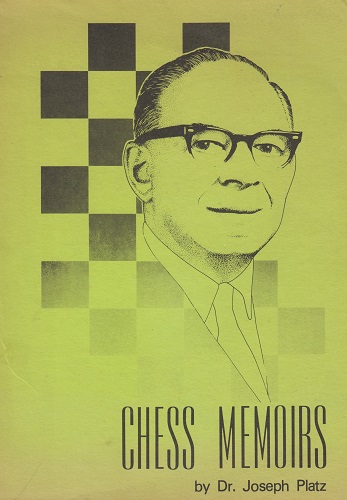
Concerning Platz’s claim (page 5 of the Connecticut Chess Newsletter, Winter 1978-79) ‘At that time I predicted ...’, the wording could be taken to refer to either 1964 or 1972. As shown above, Platz’s article in the 1964 Connecticut Chess Light made no predictions of any kind, but merely asked rhetorically whether Fischer would, like Lasker, stay at the top for 50 years.
On page 410 of the July 1972 Chess Life & Review Platz was one of a stream of pundits who dispensed opinions on the Reykjavik match. Predicting a final score of 12½-8½, he commented:
‘Fischer’s knowledge of the game, his natural ability, his will to win every game, even when he has no advantage, will carry him to victory. ... Spassky is under greater pressure ... what will happen to him if he loses the match? ... Fischer will fight with confidence; he is under obligation to nobody.’ (Ellipses in the original.)
Can further relevant remarks by Platz about Fischer be found?
Acknowledgement: the two Connecticut chess publications have kindly been provided by the Cleveland Public Library.
(10241)
The photograph on the dust-jacket of the original US edition of My 60 Memorable Games also accompanied a review by Fischer of M. Yudovich’s monograph on the King’s Indian Defence (‘229 pages of nothing’) in the 2/1969 Chess Digest Magazine (pages 33-34):
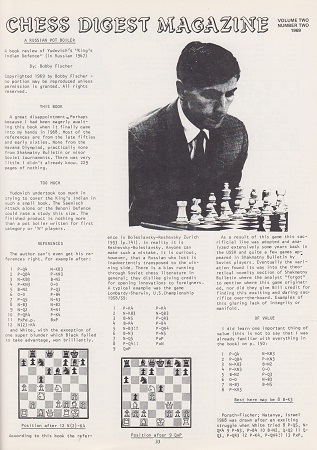
The conclusion on page 34:
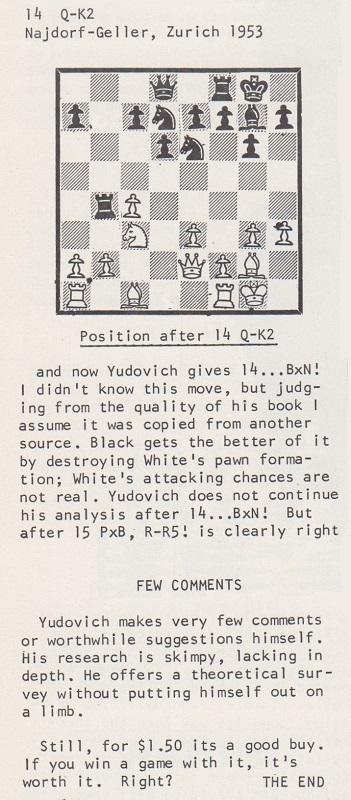
(10244)
From John Donaldson:
‘The last Swiss System tournament of Bobby Fischer’s career was the New York State Open in Poughskeepie in 1963, an event which was poorly covered in American magazines of the time with the exception of Chess Life. Fischer annotated four of his seven games (against R. Oster, B. Greenwald, L.W. Beach and A. Bisguier) in Chess Life, and his notes to the Bisguier game were reworked for My 60 Memorable Games (game 45), where a fragment from another game in the event, against Miro Radojcic, was added. Fischer’s remaining games, against Matthew Green and Joseph Richman, are also known.
No tournament bulletin was issued, and the crosstable has not been published, even though the pre-event advertising announced that all participants would receive one by mail (e.g. on page 202 of the July-August 1963 Chess Life):
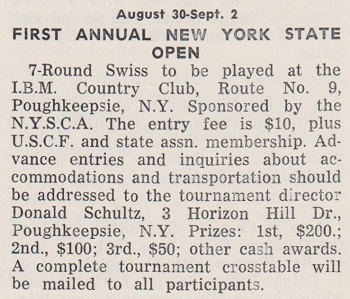
It is thus difficult to resolve a mystery stemming from a photograph opposite page 208 of Chessdon by Donald Schultz (Boca Raton, 1999):
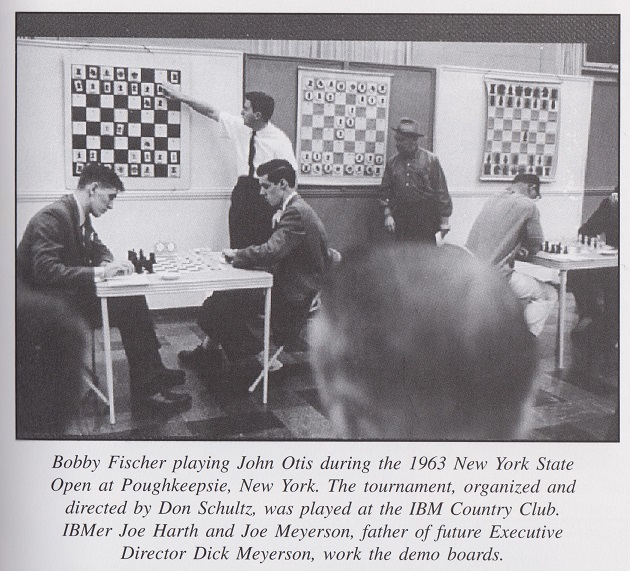
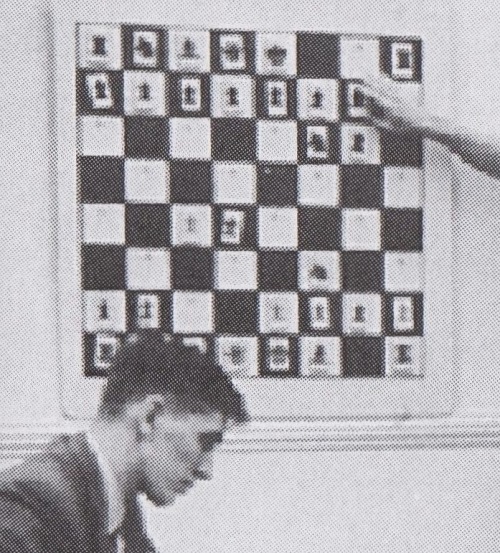
Schultz gave the same photograph, with a similar caption, on page 17 of Fischer, Kasparov, and the Others (Highland Beach, 2004), writing there too that Fischer was facing John Otis. However, Otis is not listed as an opponent of Fischer’s in the tournament. Moreover, the board position is the same as at the beginning of the game which Fischer annotated on pages 236-237 of the October 1963 Chess Life (mentioned in C.N. 4423), where he gave his opponent’s name as R. Oster.
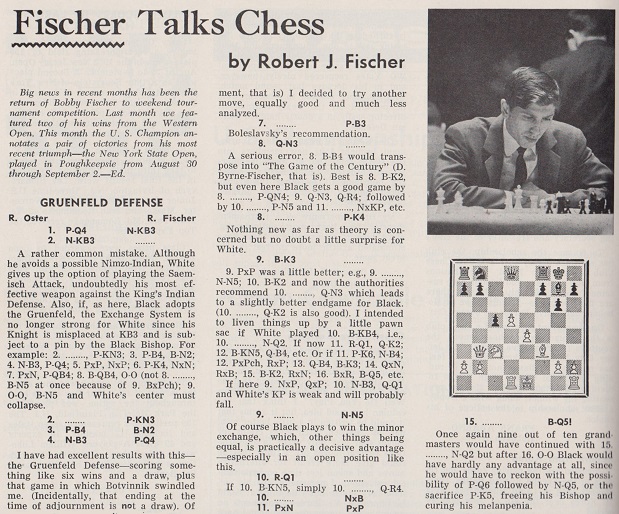
Can Fischer’s opponent in the Poughkeepsie photograph be positively identified?’
(10256)
C.N. 8226 (see too Fischer’s Fury) noted the absence of any mention of My 60 Memorable Games in Chess Review throughout the year in which the book was published (1969). Nor, as far as we can see, did Chess Review refer to Bobby Fischer’s Games of Chess when it appeared (in 1959).
That earlier book was listed on page 6 of Chess Life, 5 June 1959:
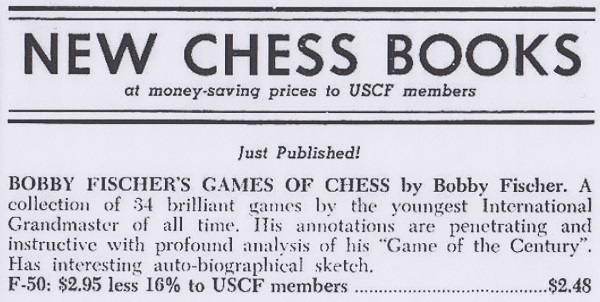
In reality, most of the games were bare scores, and the 97-page volume was not widely praised. Pages 80-81 of the March 1960 BCM had a brief critique of ...
‘... this topical but otherwise disappointing book. The whole contents could have been given comfortably in half the number of pages at a considerably lower price.’
The UK edition sold at 12s. 6d. and had a two-page Foreword by Harry Golombek. (He was the Games and Overseas News Editor of the BCM, but under the editorship of Brian Reilly the magazine was not the place for cronyism; see, for instance, C.N. 3551.)
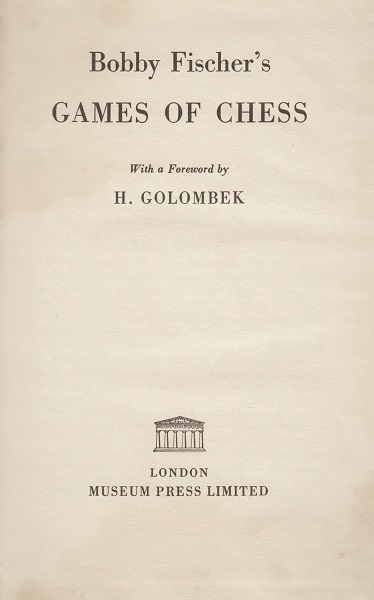
Bobby Fischer’s Games of Chess received a surprisingly warm welcome on page 19 of the January 1960 Chess World, where C.J.S. Purdy remarked:
‘We call the book expensive because it is not much more than a book of Fischer’s games in the USA championship of 1957-58. Perhaps it is not expensive if you consider the miracle of a boy of 14 winning the championship of one of the world’s strongest nations and ahead of the player then regarded as the strongest of the Western world – a standing Fischer himself has now usurped – and not only winning it but capably annotating his games in a mature and objective style.’
Whatever the merits of the book, the publicity for it was delusive. Michael Clapham has sent us an advertisement which appeared in six consecutive editions of the Chess Review catalogue (1960-65):
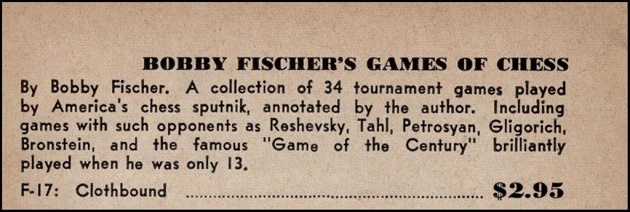
The games against Tal, Petrosian, Gligoric, Bronstein and 16 others (i.e. the full set played at the 1958 Interzonal tournament in Portorož) were unannotated.
(10284)
A photograph taken during the Candidates’ tournament in Yugoslavia, 1959:
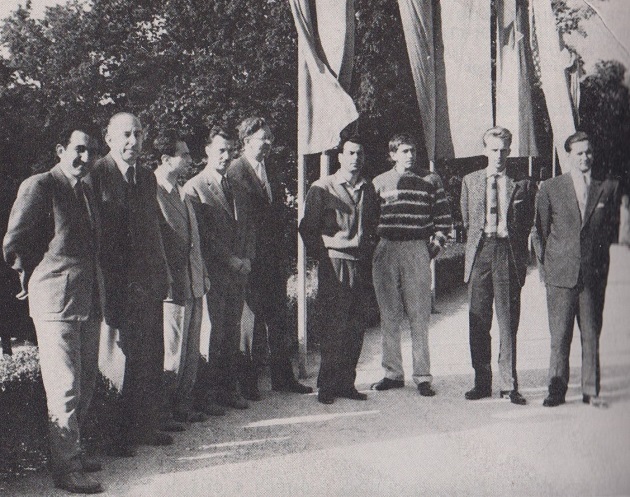
From left to right: Petrosian, Golombek (chief arbiter), Tal, Gligoric, Smyslov, Benko, Fischer, Ólafsson, Keres.
Source: Chess Review, December 1959, page 360. A less clear copy of the picture is opposite the imprint page of Kandidatenturnier für Schachweltmeisterschaft by S. Gligoric and V. Ragozin (Belgrade, 1960) with the caption ‘Alle Spieler mit grossen Hoffnungen: Vor dem Turnierbeginn in Bled’.
(10332)
From page 3B of Florida Today, 26 May 1975:

Page 37 of the February 1964 Chess Review mentioned ‘Greg Grant, 16-year-old senior at Jamesvill-De Witt [sic] High’.
The game against Grant was Fischer’s only defeat in a large simultaneous display (the overall result of which is debatable) in Rochester, NY on 15 February 1964. It was published on page 13 of A Legend On The Road by John Donaldson (Seattle, 1994) and on pages 20-21 of the second edition (Milford, 2005). The source of the game-score was ‘Robert Nasiff’s monograph on Syracuse chess history’, and Fischer’s 20th and 30th moves received double question marks.
1 e4 e6 2 d4 d5 3 Nc3 Nf6 4 Bg5 dxe4 5 Nxe4 Be7 6 Bxf6 Bxf6 7 Nf3 Bd7 8 c3 Bc6 9 Qc2 g6 10 O-O-O Nd7 11 h4 Bxe4 12 Qxe4 c6 13 h5 Qc7 14 g4 O-O-O 15 g5 Be7 16 Bc4 Nb6 17 Bb3 Nd5 18 Rdg1 Qf4+ 19 Qxf4 Nxf4 20 Rg4 Nd3+ 21 Kc2 Nxf2 22 Rgg1 Nxh1 23 Rxh1 Bd6 24 Kd3 c5 25 d5 b5 26 Ke4 c4 27 Bc2 Rhe8 28 hxg6 hxg6 29 Rh7 Re7 30 Nd4 f5+ 31 White resigns.
(10381)
Robert Nasiff (Tully, NY, USA) informs us that his monograph on Syracuse chess history, which was referred to in C.N. 10381, is unpublished and that he had obtained the Fischer v Grant game-score direct from the latter in the second half of the 1960s.
Below, from page 1B of the 16 February 1964 issue of the Democrat and Chronicle (Rochester, NY), we show the report by Earl Caldwell which John Donaldson quoted in A Legend On The Road (first edition: pages 11-12; second edition: pages 18-19):
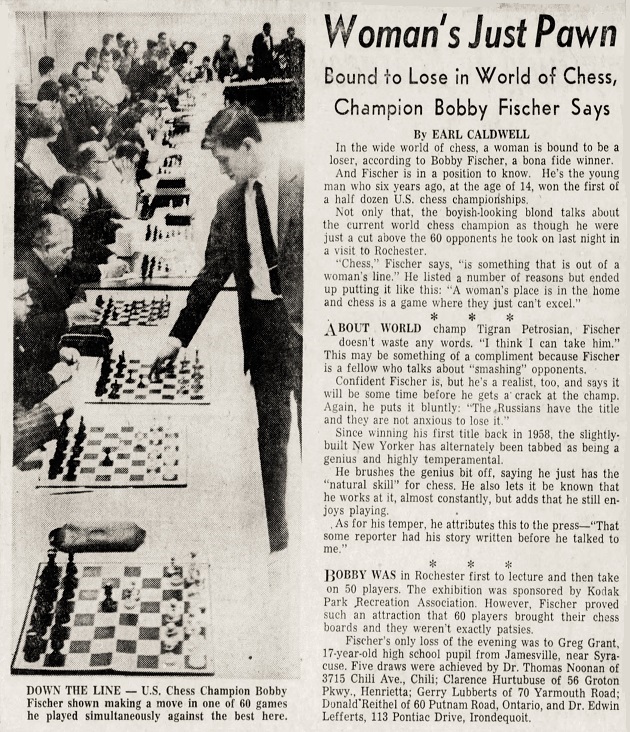
(10386)
A game previously unknown to us:
Bobby Fischer (simultaneous) – Robert W. Moore
Los Angeles, 1 February 1961
Sicilian Defence
1 e4 c5 2 Nf3 d6 3 d4 cxd4 4 Nxd4 Nf6 5 Nc3 a6 6 Bg5 e6 7 Qf3 Be7 8 O-O-O Nbd7 9 Rg1 O-O 10 g4 Qc7 11 Be3 b5 12 g5 Ne5 13 Qh3 Ne8 14 f4 Nc4 15 Bxc4 Qxc4 16 a3 g6
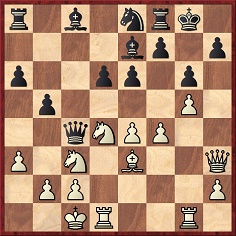
17 f5 exf5 18 exf5 Ng7 19 Qf3 Bxf5 20 Nd5 Rae8 21 Nf6+ Bxf6 22 gxf6 Be4 23 Qf2 Nf5 24 Nxf5 Bxf5 25 Bh6 Re2 26 Qxf5 Qa2 27 White resigns.
Source: Press Democrat (Santa Rosa, CA), 9 July 1961, page 6E (syndicated column by G. Koltanowski).
The 50-board display is discussed, with Robert W. Moore named as one of the three winners, on pages 66-67 of The Unknown Bobby Fischer by J. Donaldson and E. Tangborn (Seattle, 1999).
(10474)
Not once but twice a chess book by ‘an academic professor of psychology, philosophy, sociology and economic business administration’ quotes Nigel Short on Bobby Fischer:
‘Why it finds the Bush administration for necessary a 61 years old man too rushed, nobody except itself selbste a danger represents is a mystery.’
That is from a book discussed in C.N.s 4716 and 9025, Check Mate and Word Games by Carlos Tortoza (Denver, 2006).
From page 157:

And from page 168:

Information about the ‘academic professor’ on the back cover:
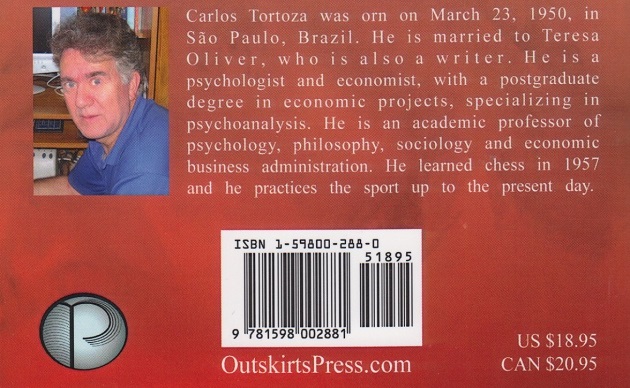
It takes a few seconds to find online Nigel Short’s actual words, in his Sunday Telegraph chess column of 22 August 2004:
‘Why the Bush administration finds it necessary to hound a 61-year-old man who poses no danger to anyone but himself is a mystery.’
(10536)
Other Fischer quotes from the Tortoza book were shown in C.N. 4716:
‘As I eleven became simply good, became I.’
‘I know humans, the all will of the World to possess and nevertheless Chess not play can.’
‘I love the moment, if I break the Ego of mine opposite.’
(4716)
Christian Rau (Rüsselsheim, Germany) reports that he owns this copy of Bobby Fischer Teaches Chess:
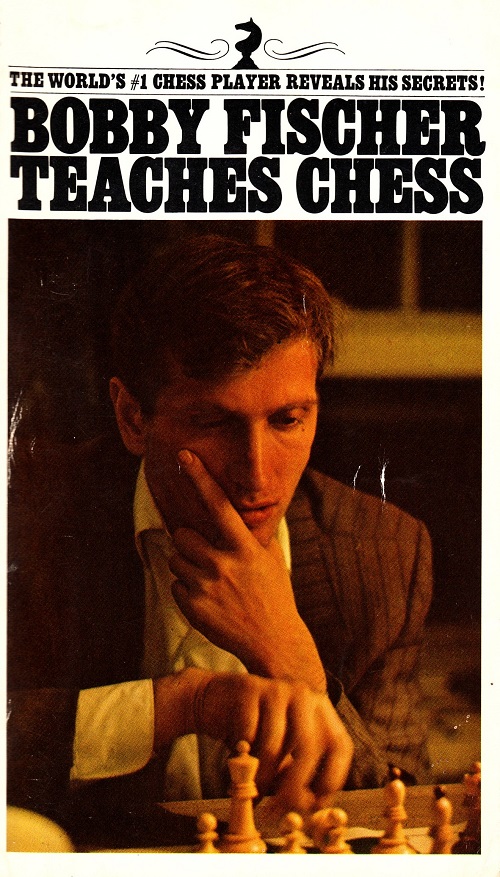
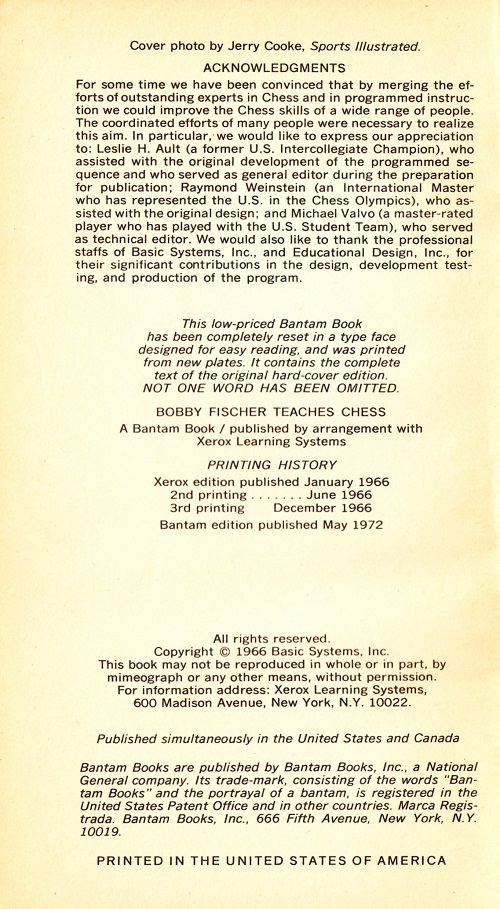
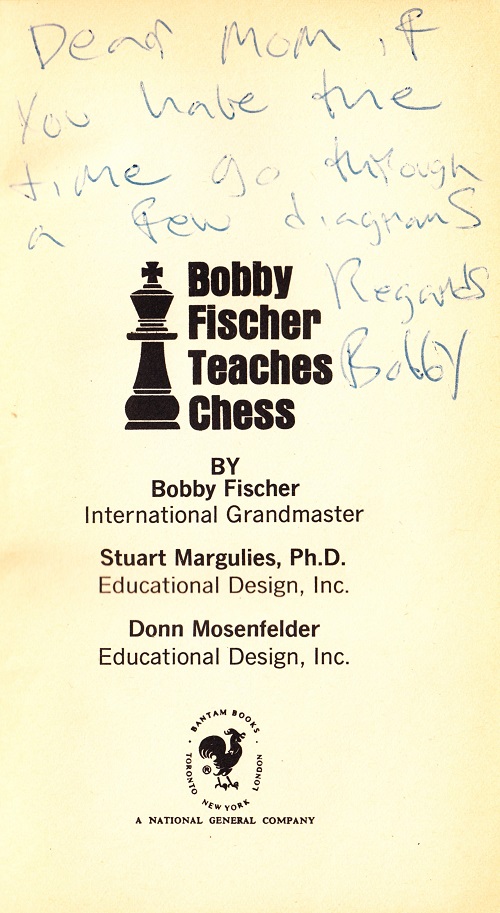
(10580)
Richard Reich has commented on the omission of any Kindle productions from our article Books about Fischer and Kasparov, and particularly the works on Fischer by John Donaldson and Eric Tangborn. We have therefore added a section comprising the following titles, which are available in Kindle format only:
Another Kindle work (2015) is John Donaldson’s A Legend on the Road: Bobby Fischer’s 1964 Simultaneous Tour. It is roughly twice as large as the second edition of the hard-copy book (Milford, 2005).
Kindle books will not be added systematically to our bibliographical articles (the others being Capablanca/Alekhine, Keres/Tal, Korchnoi/Karpov and leading modern chessplayers), but proposals for especially worthwhile additions are always welcome.
However, such listings will try to remain exhaustive as regards hard-copy books, irrespective of quality, for the bibliographer’s task is to catalogue all relevant tomes, masterpieces and potboilers alike, without discrimination. Consequently, to the list of books on Fischer we must add, à notre corps défendant, an undated volume just acquired, Bobby Fischer World Champion for Political Reasons? by Julio Hidalgo.
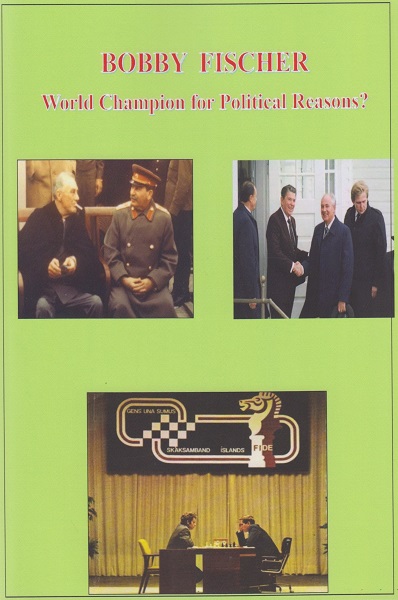
Apart from the ISBN number, 9781537399676, on the (blank) back cover, the sole bibliographical information about the book, whose pages are unnumbered, is in the bottom corner of the last page:
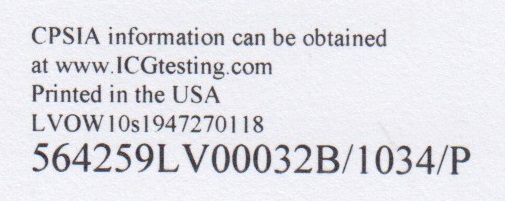
An author’s name is mentioned only on the title page, and not on the cover, but even the word ‘author’ is an exaggeration, because the book is essentially an omnium gatherum of other people’s writings. The early part lifts chunks from, among other publications, the Everyman Chess edition of Russians versus Fischer by D. Plisetsky and S. Voronkov (London, 2005), and a small example shows the literary and presentational skills of Julio Hidalgo:
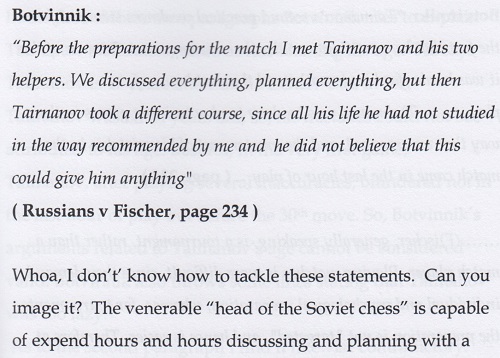
Later, it is Kasparov’s Predecessors work which dominates. Dozens of pages reproduce his text, with minimal linking material. For instance:
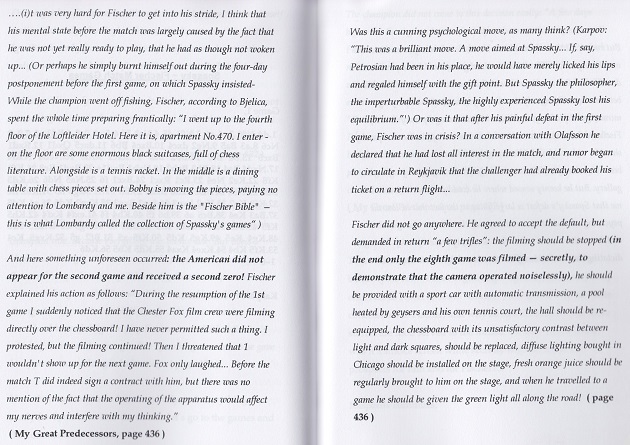
Another chapter, over half-a-dozen pages long, consists almost exclusively of text from Kasparov’s Child of Change. Euwe is a casualty too.
Towards the end of the book a chapter entitled ‘A Spassky Interview’ begins:
‘I have selected some paragraphs of [sic] an interview to [sic] Spassky, for Kingpin Magazine ...’
The ‘some paragraphs’ occupy six pages.
Garry Kasparov remains the chief victim of the Fischer book, but in any such case what chance of corrective action exists? How one longs for Kasparov to take a public stand, also supporting fellow victims of rapacity.
(10732)
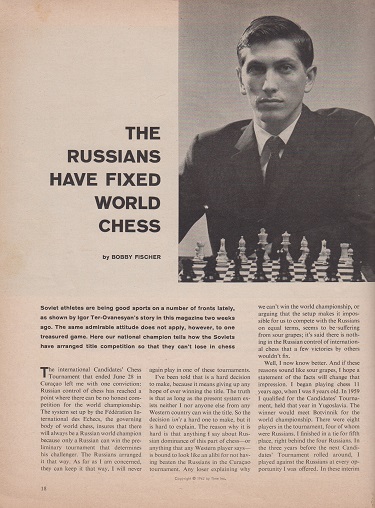
Pages 18-19 and 64-65 of Sports Illustrated, 20 August 1962 published an article by Bobby Fischer, ‘The Russians Have Fixed World Chess’, and one passage is shown below, from page 19:
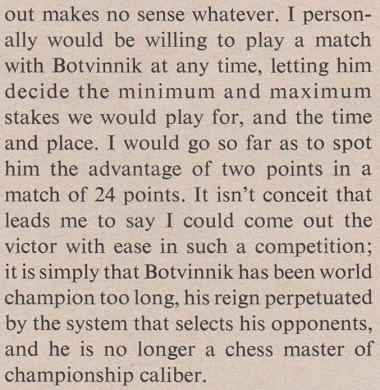
On page 66 of Profile of a Prodigy by Frank Brady (New York, 1973) the article was referred to in a section about the Olympiad in Varna later in 1962:

That second initiative was mentioned on page 21 of CHESS, 24 November 1962:
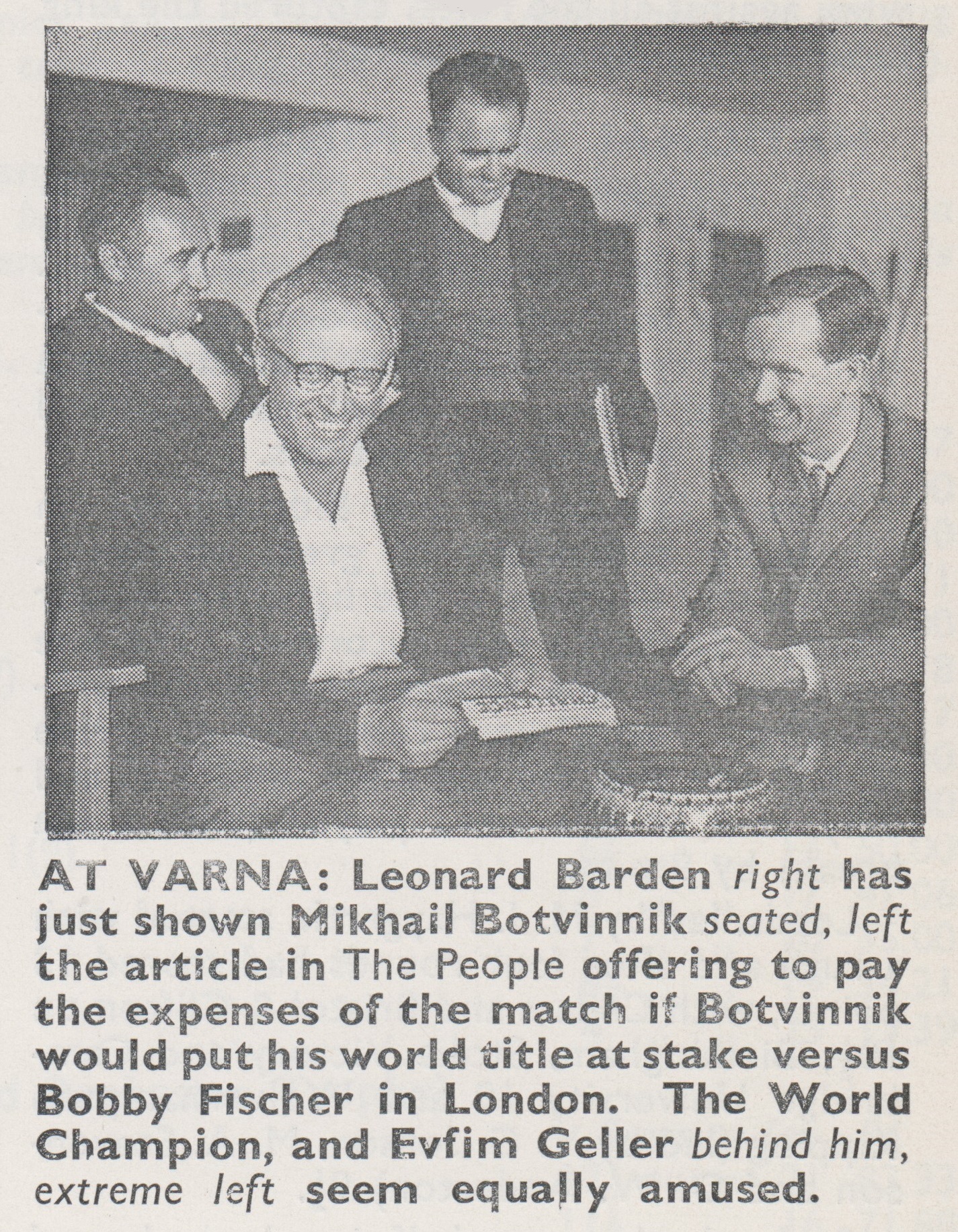
Can any reader supply the People article?
(10956)
Addition on 3 January 2023:
We are now able to show the newspaper article which Botvinnik was holding. Written by Michael Knight, it appeared on page 9 of the (Sunday) People, 23 September 1962:
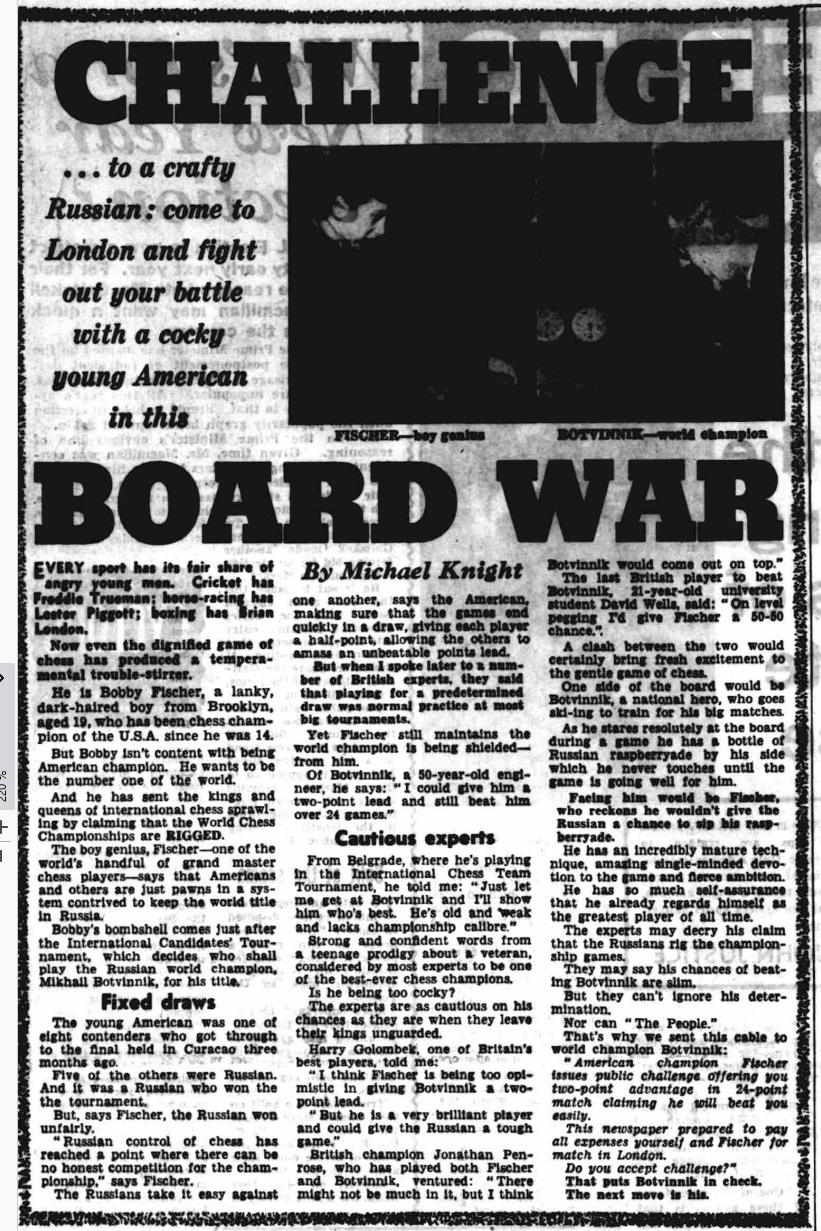
Fischer is quoted as stating, inter alia: ‘Just let me get at Botvinnik and I’ll show him who’s best. He’s old and weak and lacks championship calibre.’
An outstanding question is the identity of the fourth person in the CHESS photograph. Is it Yakov Estrin?
Apish ‘tributes’ to Bobby Fischer on page 21 of Chess Life, March 2008:
‘He was the pride and sorrow of chess.’ (Raymond Keene)
‘Chess was his native tongue.’ (Larry Evans).
(11059)
Our feature article on Evans contains much Fischer-related material, including this documented summation of Evans’ assessments of Fischer and Karpov:
- ‘It looks like Fischer has been ducking Karpov, not the other way around.’ (1979).
- ‘Bobby has been ducking Anatoly, not the other way around.’ (1979).
- ‘Posterity will remember [Karpov] mainly for ducking Fischer.’ (1986).
- ‘[Fischer] certainly ducked Karpov.’ (1991).
- ‘Karpov ducked Fischer.’ (1991).
Another one from Evans:

Reno Gazette-Journal, 18 April 1987, page 33
(12127)
The FBI Vault contains a 1966-67 file on Fischer’s passport requests for travel to Cuba.
(11083)
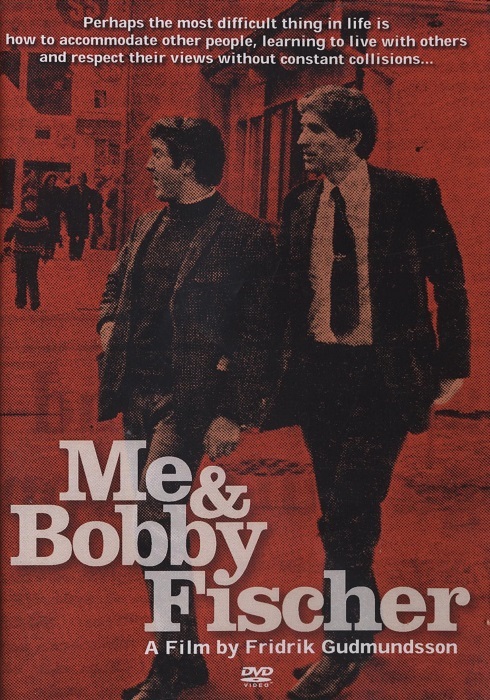
Michael Clapham has been watching the film by Friðrik Guðmundsson Me & Bobby Fischer, which is available on DVD:
‘It has over an hour of Fischer talking, in 2005, about such matters as his aborted match with Karpov, his time in prison, his views on Jews, and pre-arranged games.’
(11085)
From the plate section of International Championship Chess by B. Kažic (London, 1974):
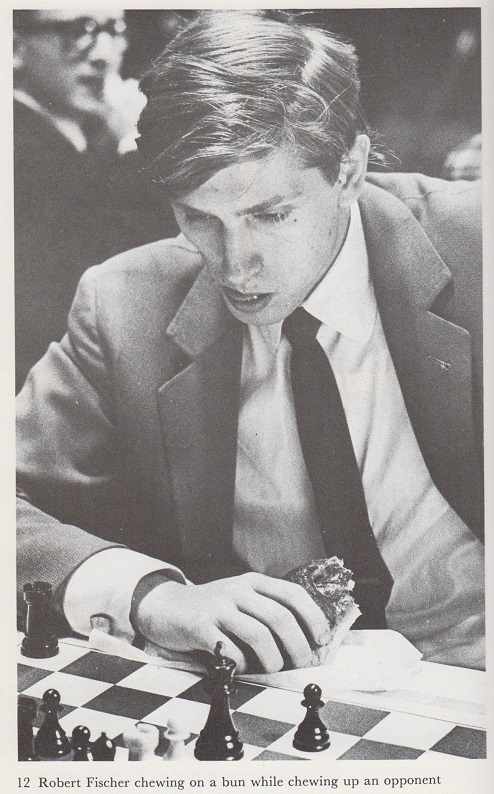
The caption might have added the identity of Fischer’s chewee: William G. Addison. The position shows the end of their game in round seven of the 1963-64 US Championship, New York.
(11103)
‘Bobby Fischer: The Mozart of Chess’ was the heading of the chapter about him on pages 366-371 of The Jew in American Sports by Harold U. Ribalow (New York, 1959):
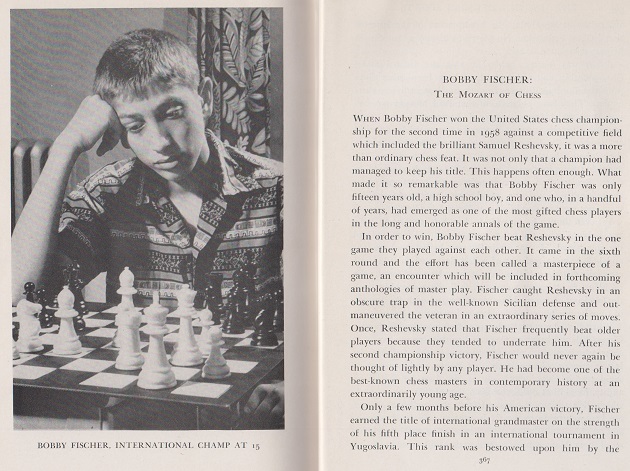
The chapter took its title from Harold C. Schonberg’s New York Times article of the previous year which is referred to in our feature article ‘The Mozart of Chess’.
(11118)
Page 314 of This Crazy World of Chess by Larry Evans (Las Vegas, 2009).
Page 26 of Battle of Bonn by Raymond Keene and Eric Schiller (2008).
Page 123 of Carlsen-Anand Match for the World Chess Championship by Raymond Keene (New York, 2013).
Page 29 of Carlsen v Caruana: FIDE World Chess Championship, London 2018 by Raymond Keene and Byron Jacobs (London, 2018).
Page 8 of A Guide Book Of Places To Go and People You Will See Around NY Chess by Peter Julius Sloan (2012).
Page 192 of The Big Book of World Chess Championships by Andre Schulz (Alkmaar, 2016).
Page 113 of The Psychology of Chess by Fernand Gobet (Abingdon, 2019).
How often has anyone bothered making such a point about, for instance, Steinitz?
(11165)

The above snippet, concerning a case not yet included in Chess in the Courts, comes from page 296 of the October 1961 BCM, in a section edited by Harry Golombek.
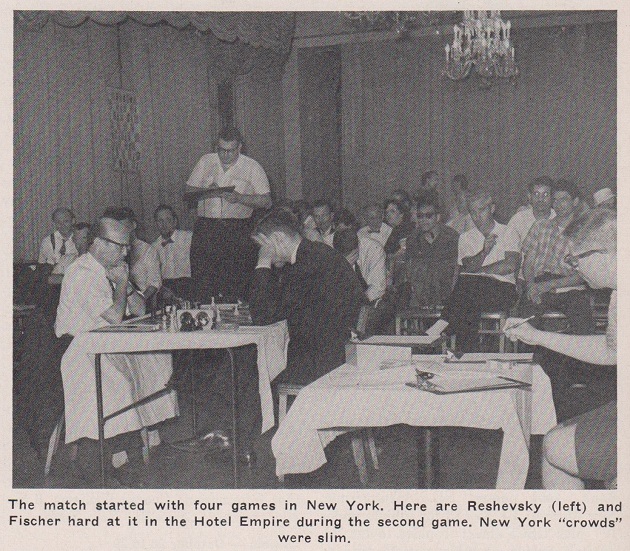
Chess Review, September 1961, page 264
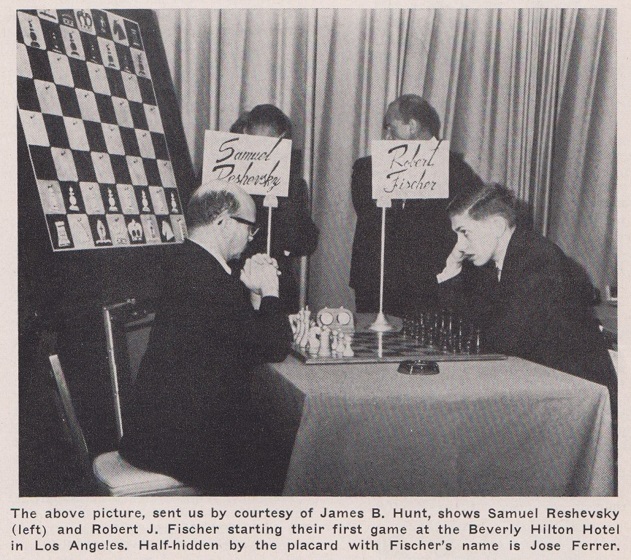
Chess Review, October 1961, page 317
Below are five press reports:
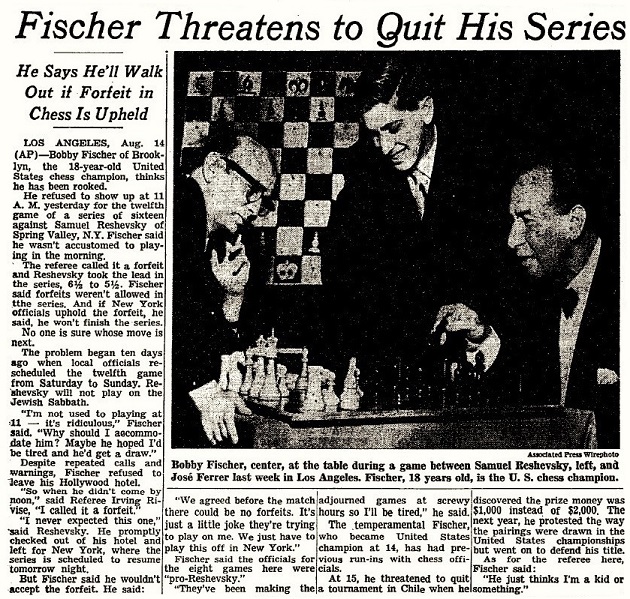
New York Times, 15 August 1961, page 36
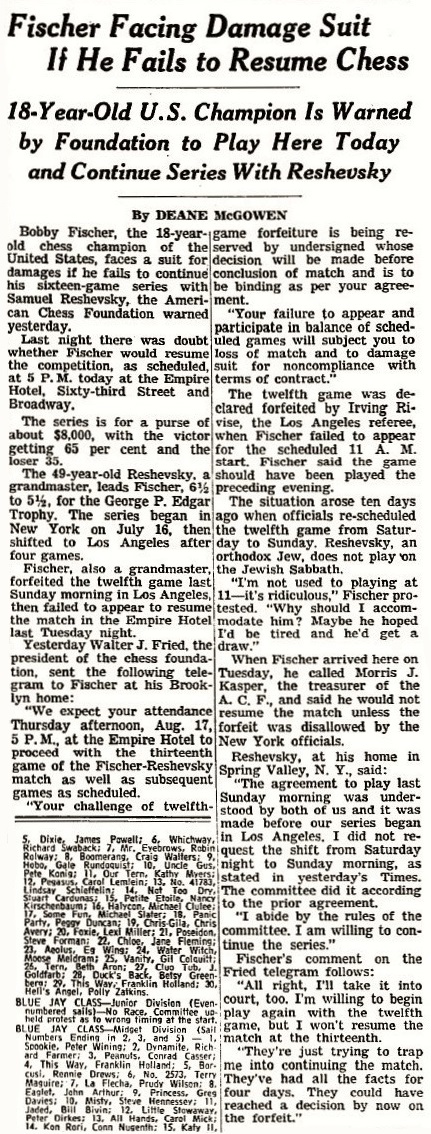
New York Times, 17 August 1961, page 22
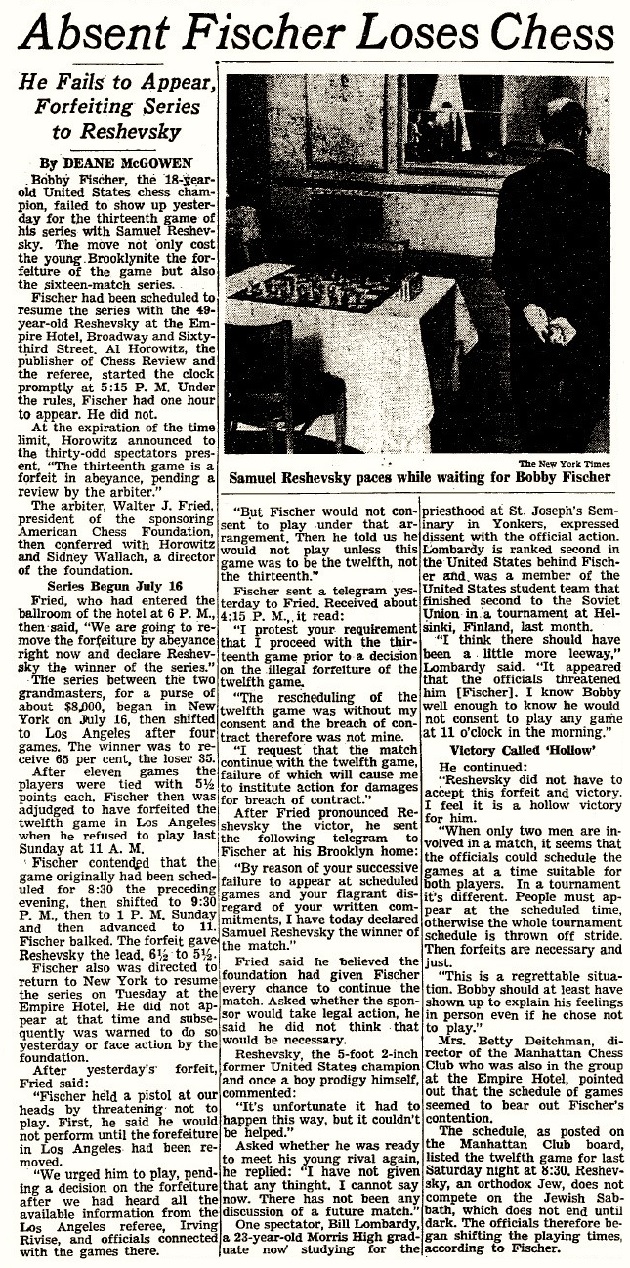
New York Times, 18 August 1961, page 27

New York Times, 19 August 1961, page 15
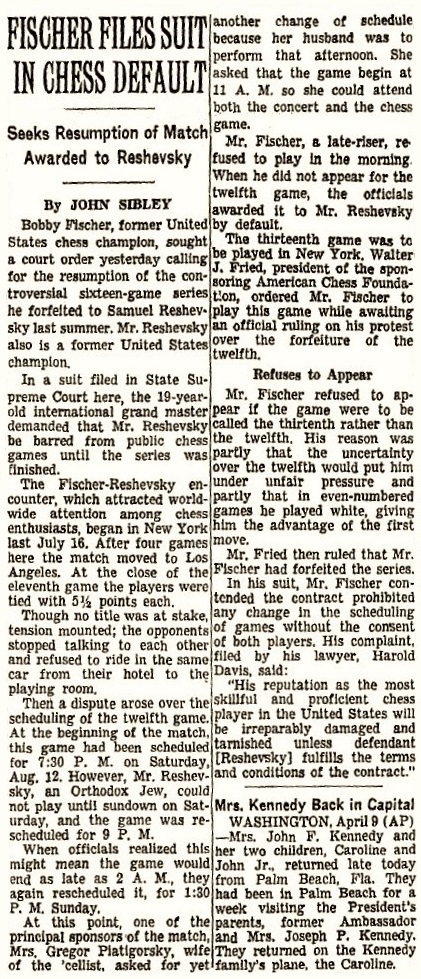
New York Times, 10 April 1962, page 33
There were briefer reports in the New York Times of 14 August 1961, page 20 and 16 August 1961, page 25. The above photograph of Reshevsky, Fischer and Ferrer in the 15 August 1961 edition is similar to the one in Chess and Hollywood. C.N. 8923 referred to coverage of the affair in Chess Life; an article entitled ‘The Fischer-Reshevsky Snafu’ on page 321 of Chess Review, November 1961 provides a notable summary.
On page 137 of Endgame (New York, 2011) Frank Brady wrote that ‘the case lingered in the courts for years and was finally dropped’. Does a detailed account of the full procedure exist?
(11169)
From page 288 of My 60 Memorable Games by Bobby Fischer (New York, 1969), in game 46:
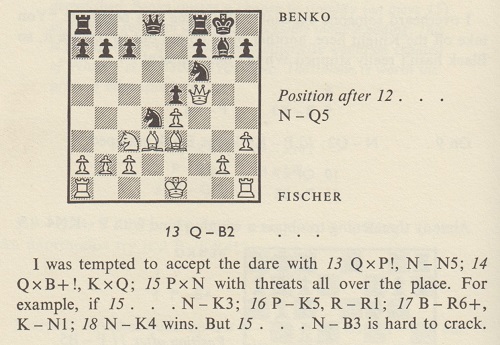
In a report on a simultaneous exhibition by Fischer in Toronto on 27 February 1964, Wayne D. Komer noted on page 223 of CHESS, April 1964 that Fischer first gave a 45-minute talk on that game against Benko (1963-64 US Championship):
‘He drew a large chuckle from the crowd when he said that after studying the board [in the diagrammed position] he decided not to play 13 QxKP and then sacrifice the queen for the bishop after 13...N-N5 (14 QxBch KxQ 15 PxN) because he thought this game would then detract from his (brilliant) victory over Robert Byrne in round three when it came time for the judges to award the brilliancy prize.’
The full article has been reproduced in A Legend On the Road by John Donaldson (Seattle, 1994 and Milford, 2005). See pages 20-21 and 34 respectively.
(11222)
In C.N.s 11219 and 11278 Eduardo Bauzá Mercére presented a number of photographs taken by him at the Club Argentino de Ajedrez during visits to Buenos Aires earlier this year. In addition, he put us in contact with Mr Carlos León Cranbourne (Buenos Aires), who has now sent us many further pictures.
The present item focuses on Fischer, and, in particular, his 1971 match in Buenos Aires against Petrosian:
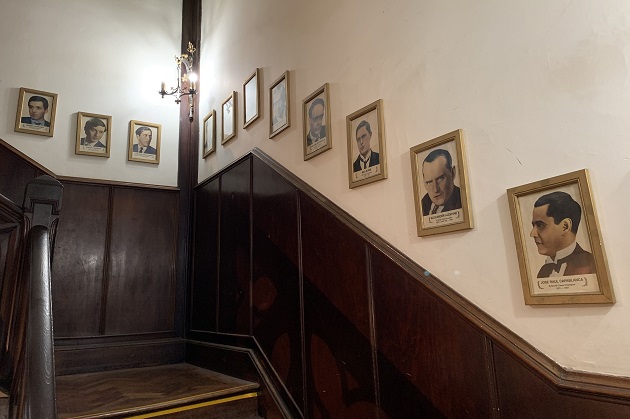
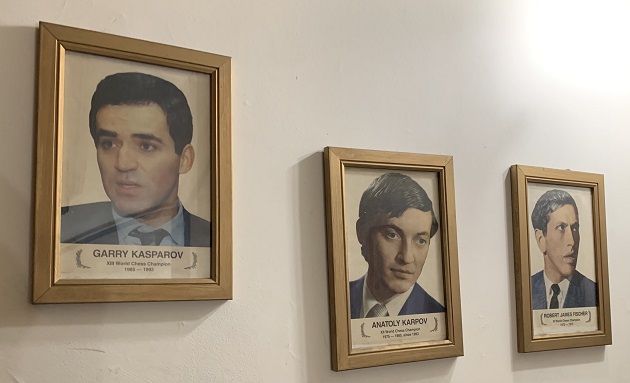
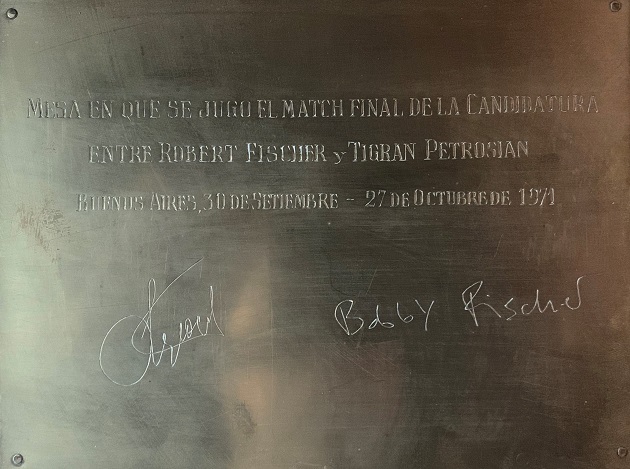
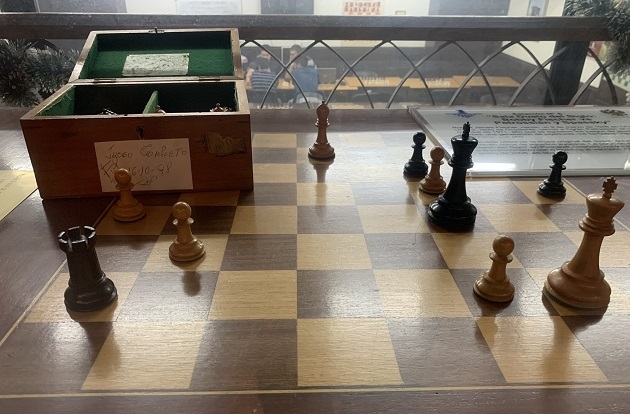
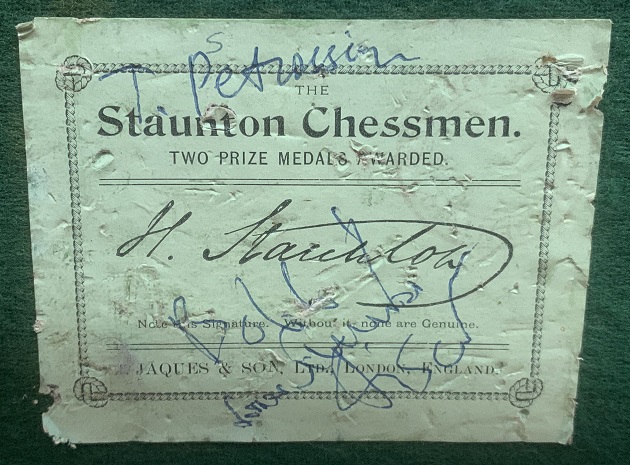
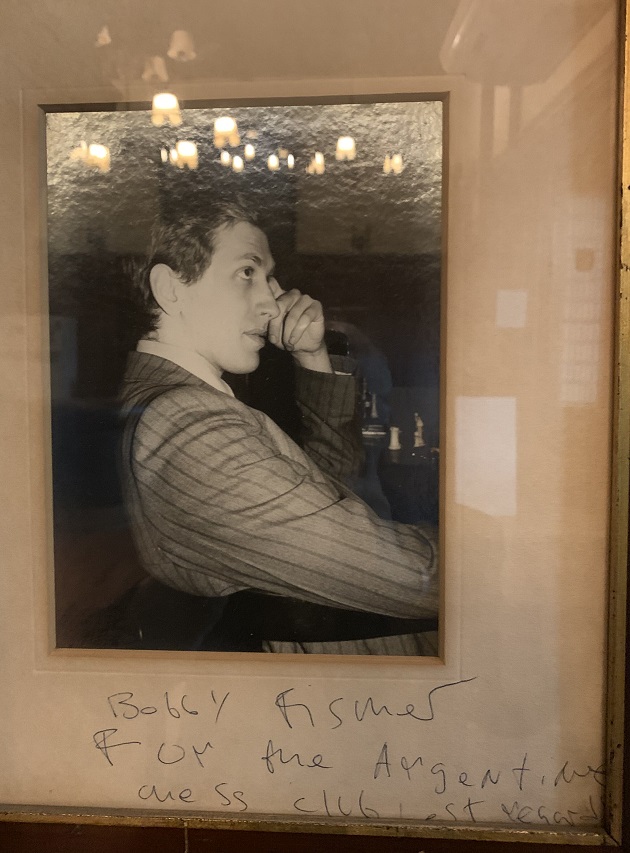
The board in the fourth picture shows the conclusion of the final game of the 1972 Spassky v Fischer match.
(11330)
A further picture was given in C.N. 12003:
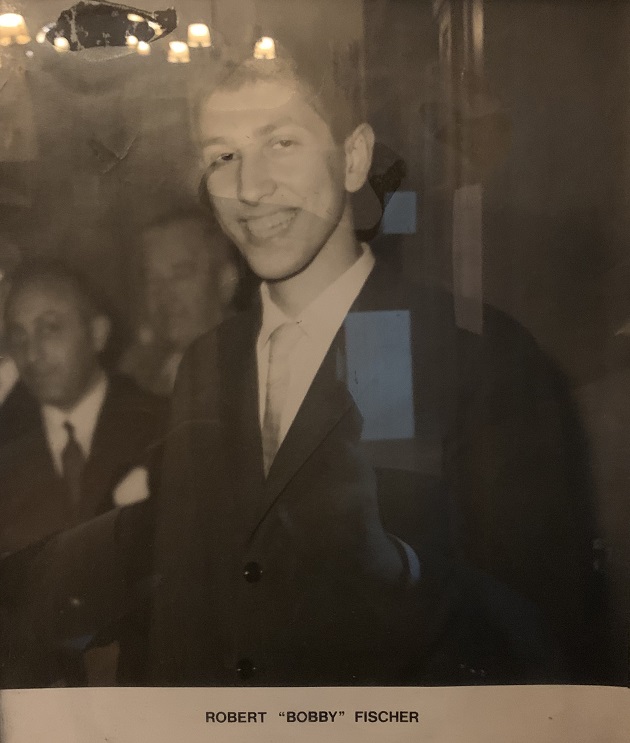
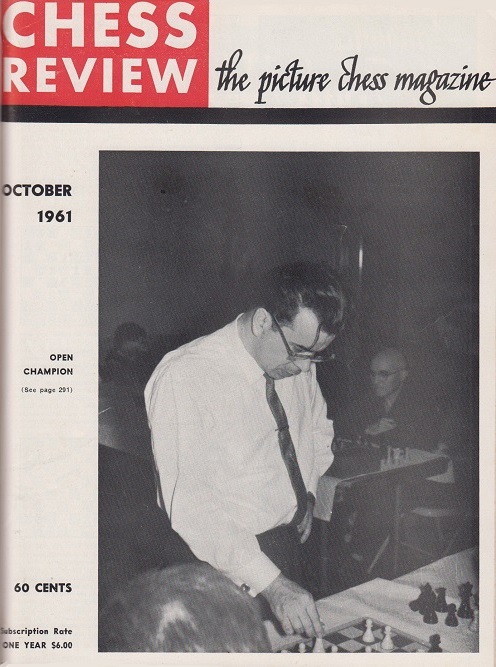
The recent death of Pal Benko prompts us to recall the exceptional quality of Pal Benko My Life, Games and Compositions by P. Benko and J. Silman (Los Angeles, 2003). Anyone dipping into it again may care to begin with Silman’s interview with Benko on pages 425-432. It includes this comment on page 426:
‘When I gave my place to Fischer for the Interzonal in Palma de Mallorca in 1970, I was sure Bobby would advance to the Candidates Matches and beat the Russians. My own career was nearing its end, so why shouldn’t I give Fischer a chance to embrace his fate? I never had any doubts about his success, and he didn’t disappoint me.’
In ‘chess literature’ there are many vague claims that Benko was paid to cede his place in the Interzonal tournament (Palma de Mallorca, November-December 1970).
An early reference to money is at the end of an article by Miro Radojcic on pages 368-370 of the July 1970 Chess Life & Review:
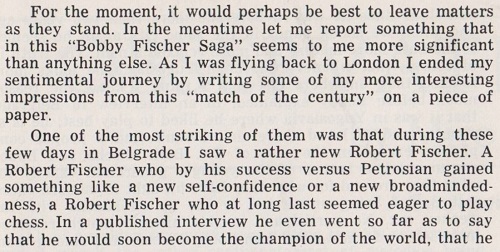
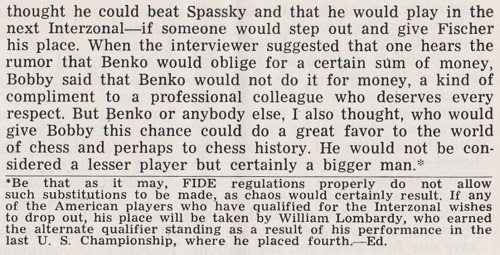
Benko gave the following account on page 439 of the July 1975 issue of the same magazine:
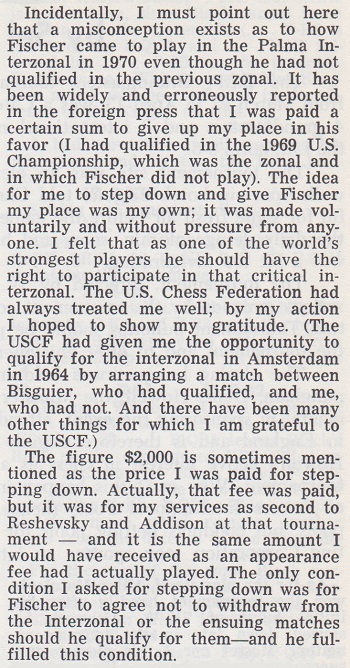
In the ‘Ask the Masters’ column on page 56 of Chess Life, July 1981 Benko reverted to the topic with a brief summary:
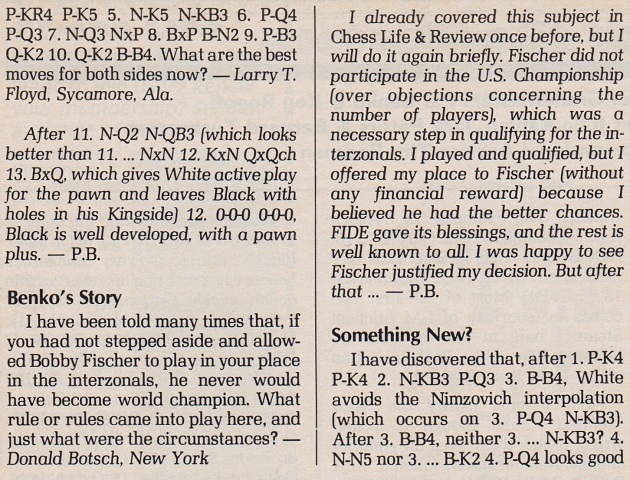
(11458)
From John Donaldson:
‘The recent publication of all 20 games from Bobby Fischer’s simultaneous exhibition in Münster, Germany in 1970 resolved several mysteries and gave the chess world over a dozen new games played by the late world champion.
The display was previously known, although not the exact date. The fact that it took place on 27 September 1970 makes it probable, if not 100% certain, that the exhibition game Fischer v Andersson, sponsored by the Swedish newspaper Expressen, occurred the day before. The Siegen Olympiad ended on 27 September, but the last day of play was 25 September. It is conceivable, if unlikely, that the Fischer v Andersson game was on 25 September, as neither played in the final round of the Olympiad.
The complete set of games, both good and bad, in the Münster display makes it clear that Fischer did not follow the practice of some old-time masters of considering that his move was not completed until he had moved on the following board. In view of some of the blunders committed by him that evening, such as 35 Rb5 against Langhanke, giving a final score of 15½-4½, Fischer may have wished that he had.
The game against Eugen Kurz has a pretty finish with some affinity to Fischer v Benko, US Championship, 1963-64 (17 Rg6 in one game and 19 Rf6 in the other): 1 e4 e6 2 d4 d5 3 Nc3 dxe4 4 Nxe4 Nd7 5 Nf3 Ngf6 6 Bg5 Be7 7 Nxf6+ Nxf6 8 Bd3 O-O 9 Qe2 c6 10 O-O-O Qc7 11 h4 b6 12 Ne5 Bb7 13 Rh3 Rad8 14 Rg3 Kh8 15 Bxf6 Bxf6 16 Qh5 h6
17 Rg6 fxg6 18 Qxg6 Resigns.
Another question is whether the Münster display is the only one ever given by Fischer in which he took Black (in eight of the 20 games). Most exhibitors take White, and in this Fischer was no exception. In his 1964 exhibition tour of North America he gave over 40 displays, and in not one is there a record of him playing a single game as Black.’
(11543)
John Donaldson writes:
‘Bobby Fischer’s contributions include countless opening innovations and original middlegame plans. His pioneering use of the King’s Indian Attack is an example of how he seamlessly combined the two, and his wins against Ivkov (Second Piatigorsky Cup, 1966), Myagmarsuren (Sousse Interzonal, 1967) and Panno (Buenos Aires, 1970) are still model games half a century later.
Fischer is also one of the founding fathers of the Hedgehog. Ulf Andersson and Ljubomir Ljubojevic played it extensively in the 1970s and 1980s and are credited with being its creators, but, as will be shown below, this is not completely true.
García Soruco v Fischer, Havana Olympiad, 1966 is credited as the game where the plan …Kh8, ...Rg8, …g5, …Rg6 and …Rag8 was first seen, but this may not be so. On pages 18-20 of the 1974 book Morphy Chess Masterpieces by Fred Reinfeld and Andrew Soltis the latter points out that Fischer may have been influenced by Paulsen v Morphy, New York, 1857, where Black played ...Kh8, ...Rg8 and ...g5. The pawn structure is different, but there is some similarity. Here is how the Hedgehog may have developed.
Both players were without sight of the board in the game, which was played on 10 October 1857 and is on page 30 of Hans Renette’s monograph on Paulsen.
1 e4 e5 2 Nf3 Nc6 3 Nc3 Bc5 4 Bb5 d6 5 d4 exd4 6 Nxd4 Bd7 7 Nxc6 bxc6 8 Ba4 Qf6 9 O-O Ne7 10 Be3 Bxe3 11 fxe3 Qh6 12 Qd3 Ng6 13 Rae1 Ne5 14 Qe2 O-O 15 h3
15...Kh8 16 Nd1 g5 17 Nf2 Rg8 18 Nd3 g4 19 Nxe5 dxe5 20 hxg4 Bxg4 21 Qf2 Rg6 22 Qxf7 Be6 23 Qxc7
Morphy now announced mate in five starting with 23…Rxg2+.
The next game, considered the first example of the plan being executed in its entirety, comes from the 1966 Olympiad in Havana (Julio García Soruco v Bobby Fischer):
1 e4 c5 2 Nf3 d6 3 d4 cxd4 4 Nxd4 Nf6 5 Nc3 a6 6 Bc4 e6 7 Bb3 b5 8 a3 Be7 9 Be3 O-O 10 O-O Bb7 11 f3 Nbd7 12 Qd2 Ne5 13 Qf2 Qc7 14 Rac1
14...Kh8
Passive moves (a3, f3 and Rac1) by the Bolivian Olympiad team member are just the encouragement that Fischer needs to implement what Kasparov calls the “compressed spring” strategy.
15 Nce2 Rg8 16 Kh1 g5 17 h3 Rg6
17...d5 is a good move, but it reduces the tension. The text gives White more problems to solve.
18 Ng3?
White cannot just sit tight. He had to try something active, such as 18 Rfd1 Rag8 19 c4, with the idea of 19...bxc4 20 Bxc4 Nxc4 21 b3.
18...Rag8
18...d5 was again quite good for Black, but Fischer adheres to his strategy and is soon rewarded.
19 Nxe6?
This simply loses, but it is hard to suggest a satisfactory defense.
19...fxe6 20 Bxe6 Nxe4 21 Nxe4 Rxe6 22 White resigns.
Fischer’s first try with the variation worked like a charm, his opponent allowing him to do everything he wanted. The second time around, matters were not so simple. The 19-year-old Ulf Andersson was not yet a world-class grandmaster, but he was a strong player (rated 2480 on the July 1970 FIDE rating list, which placed him in the top 100 players in the world at the time).
This game between Fischer and Andersson was played in a hotel room in Siegen on 26 September 1970, the day after the Olympiad ended. Fischer was paid a fee by a Swedish newspaper, which published the game-score a move a day over several months.
1 b3
This was not the first time that Fischer opened with 1 b3, as he had played it a few months before against Tukmakov in Buenos Aires. Fischer stated that 1 e4! is "best by test" (C.N. 4423), but he had a much better career record with 1 b3 – a perfect 4-0 score, in fact. All the games were played against quality opponents (Mecking and Filip were the two others) and were interesting fights in which Fischer introduced new ideas.
1...e5 2 Bb2 Nc6 3 c4 Nf6 4 e3 Be7 5 a3 O-O 6 Qc2
6 d3 d5 7 cxd5 Qxd5 8 Nc3 Qd6 9 Nf3 Bf5 10 Qc2 Rfd8 11 Rd1 h6 12 h3 Qe6 13 Nd2 Nd7 14 Be2 Kh8?! (14...Qg6 (Kasparov)) 15 O-O Bg6 16 b4 a6 17 Rc1 Rac8 18 Rfd1 f5 19 Na4 Na7 20 Nb3 b6 21 d4 f4 22 e4 and White soon won in Fischer v Tukmakov, Buenos Aires, 1970.
6...Re8
6...d5 7 cxd5 (7 d3) 7...Nxd5 8 Nf3 Bf6 9 d3 g6 10 Nbd2 Bg7 11 Rc1 was a dream Sicilian for White in Petrosian v Sosonko, Tilburg, 1981. Black is actually two tempi down on normal lines in the Scheveningen (colors reversed) as he has spent three moves with his king’s bishop instead of one.
7 d3 Bf8 8 Nf3 a5 9 Be2 d5 10 cxd5 Nxd5 11 Nbd2 f6
Andersson supports his e-pawn with the text, but step-by-step he is drifting into a passive position where he will soon have no constructive plan.
Soltis suggests 11...g6 followed by ...Bg7 as Sosonko played, but it would seem that ...g6, ...Bg7 and ...d5 in the opening save a couple moves over ...Be7-f8-g7.
12 O-O Be6 13 Kh1!!
“The exclamation points are not awarded to this move, but rather to Fischer’s entire plan. It is the originality of the plan that merits praise. Later, this plan became popular in Hedgehog positions, where (with colors reversed) White’s c-pawn is on his fourth rank.” (Alex Fishbein on page 48 of his 1996 book on Fischer.)
13...Qd7 14 Rg1 Rad8 15 Ne4!
15...Qf7
If 15...h5 then 16 h3 with g4 to follow. In fact, Black has no way to stop g4, as the noted Hedgehog expert Sergey Shipov points out:
15...Kh8 16 g4! Bxg4 17 Rxg4! Qxg4 18 Nxe5 Qe6 19 Bg4 Qg8 20 Nxc6 bxc6 21 Rg1! with powerful compensation for the exchange.
15...Nb6 16 g4! Bxg4 17 Nh4 f5 18 Nxf5 Qxf5 (or 18...Bxe2 19 Nf6+ Kh8 20 Nxd7 Bf3+ 21 Rg2 Rxd7 22 Nh4 Bxg2+ 23 Kxg2) 19 Bxg4 Qf7 20 d4 exd4 21 Ng5. In both cases White is winning.
16 g4! g6?!
This unforced weakening increases the strength of g4-g5.
16...Nb6 17 Nfd2 Be7 (Shipov) or 17...Bd5 (Kasparov) would have offered complicated play.
17 Rg3 Bg7 18 Rag1!
“A remarkable attacking construction! The original source, with reversed colours, was the game Soruco v Fischer (Havana Olympiad, 1966).” (Kasparov on page 353 of his 2004 book on Fischer in the Predecessors series.)
18...Nb6 19 Nc5! Bc8 20 Nh4 Nd7?
Black had to sacrifice the exchange for a pawn: 20...Rd5 21 Bf3 Rxc5 22 Qxc5 Qxb3 with chances for both sides (Shipov).
21 Ne4!
“An amazing paradox: with the board full of pieces, practically without coming into contact with the enemy army and not straying beyond his own half of the board, White has imperceptibly achieved a winning position.” (Kasparov on page 353 of his 2004 book on Fischer in the Predecessors series.)
21...Nf8 22 Nf5! Be6 23 Nc5 Ne7 24 Nxg7! Kxg7 25 g5! Nf5 26 Rf3 b6 27 gxf6+ Kh8 28 Nxe6 Rxe6
29 d4! exd4 30 Bc4 d3 31 Bxd3 Rxd3 32 Qxd3 Rd6 33 Qc4 Ne6 34 Be5 Rd8 35 h4 Nd6 36 Qg4 Nf8 37 h5 Ne8 38 e4 Rd2 39 Rh3 Kg8 40 hxg6 Nxg6 41 f4 Kf8 42 Qg5 Nd6 43 Bxd6+ Resigns.
“This game made such a great impression on Ulf Andersson that in the 1970s the talented Swedish grandmaster, who is well known for his skill in defence, became one of the main ideologists of the ‘hedgehog’ set-up and the ‘compressed spring’ method when playing Black. That is how the chess revolution of the 1970s began.” (Kasparov on page 354 of his 2004 book on Fischer in the Predecessors series.)
Here, just a day after the game with Andersson, Fischer has the opportunity to use his plan once again, as Black against Michels in the simultaneous display in Münster referred to in C.N. 11543. White’s fate is similar to what would have happened to García Soruco if he had not self-destructed with 19 Nxe6.
1 e4 c5 2 Nf3 d6 3 d4 cxd4 4 Nxd4 Nf6 5 Nc3 a6 6 Bd3 e6 7 Nb3 Be7 8 O-O Qc7 9 Qe2
9 Be3 Nbd7 10 f4 O-O 11 Qf3 is a popular main line.
9...Nbd7 10 Be3 O-O 11 f3?!
11 f4 is necessary as the text is too passive.
11...b6 12 Qf2 Bb7 13 Rfd1 Rac8 14 Rac1
White has no constructive plan.
14...b5 15 a3 Ne5 16 Kh1 Kh8
17 Bb6 Qb8 18 Rd2 Rg8 19 Rcd1 g5 20 Bd4 Rg6 21 Qf1 Rcg8 22 a4
White decides that he cannot wait forever.
22 Qe1 Bd8 23 Qf1 Bc7 followed by a break with ...d5 is another idea at Black’s disposal. If 22 Qg1 then 22...Nxd3 23 cxd3 e5 24 Be3 d5.
22...bxa4 23 Nxa4
23 Na5 had to be tried.
23...Rh6
23...g4! 24 f4 Nxd3 25 cxd3 g3! 26 h3 e5! 27 f5 Rg4! 28 hxg4 exd4 29 Nxd4 Qf8 wins even more quickly.
24 Bxe5 dxe5 25 Nac5 g4! 26 Nxb7 Qxb7
26...Nh5! would have ended matters faster.
27 Bxa6?
27 g3 had to be played.
27...Qa7 28 Qd3 gxf3 29 Na5
As 29 gxf3 is met by 29…Nh5.
29...Ng4 30 gxf3 Qf2 31 White resigns.
In view of these games, should Fischer be considered the father of the Hedgehog? He certainly discovered the key setup with …Kh8, …Rg8, …g5, …Rg6 and ...Rag8. We also know that he was very conscious of Black’s ability to break with …d5 (or when to avoid it). What we do not know for sure, since none of his opponents had their c-pawn on c4 or …c5, is whether he was aware of the …b5 break played independently or in conjunction with …d5. It does seem likely. Less clear is the maneuver …Bf8-e7-d8-c7, a now-standard Hedgehog line, which came into practice only after Fischer had stopped playing post-1972. All in all, it seems fairest to give credit to Fischer as the originator and to Andersson and Ljubojevic for refining it.’
(11562)
See also The Chess Hedgehog.
C.N. 9561 showed part of the back cover of C.J.S. Purdy’s Guideto Good Chess (Davenport, 2006):

The front cover of another Thinkers’ Chess production, published towards the end of 2019, also has a reference to Fischer on which more information is sought:
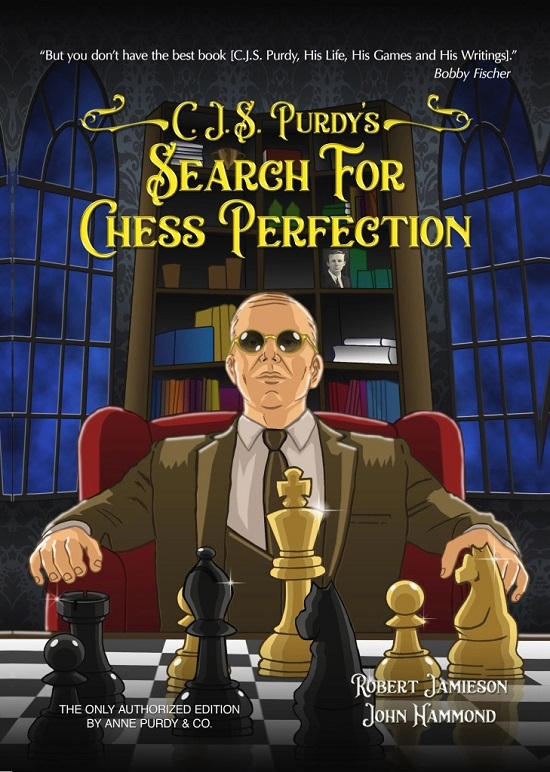
Purdy is almost universally admired, but C.N. 9639 quoted the following from Larry Evans, in a letter to us dated 12 November 1990:
‘... the relatively obscure Australian magazine Chess World (which probably never reached 1,000 subscribers) edited by a minor master to whom I could have given pawn and move ... If you care to place a wager – with the loser to pay for the cost of a poll – I maintain that not ten in a thousand subscribers to Chess Life have ever heard of or seen a copy of Purdy’s Chess World, which they would probably confuse with Frank Brady’s short-lived periodical.’
(11673)
Regarding Fischer, Yuri Kireev and Mikhail Sokolov (Moscow) point out that a slightly updated translation of H.C. Schonberg’s 1958 New York Times article ‘Fourteen-Year-Old “Mozart of Chess”’ (C.N. 5491) ...

... was published on page 52 of the 22/1958 issue of America (with the author’s name given as ‘Nonberg’), accompanied by a photograph of Fischer in play against Rodolfo Cardoso:
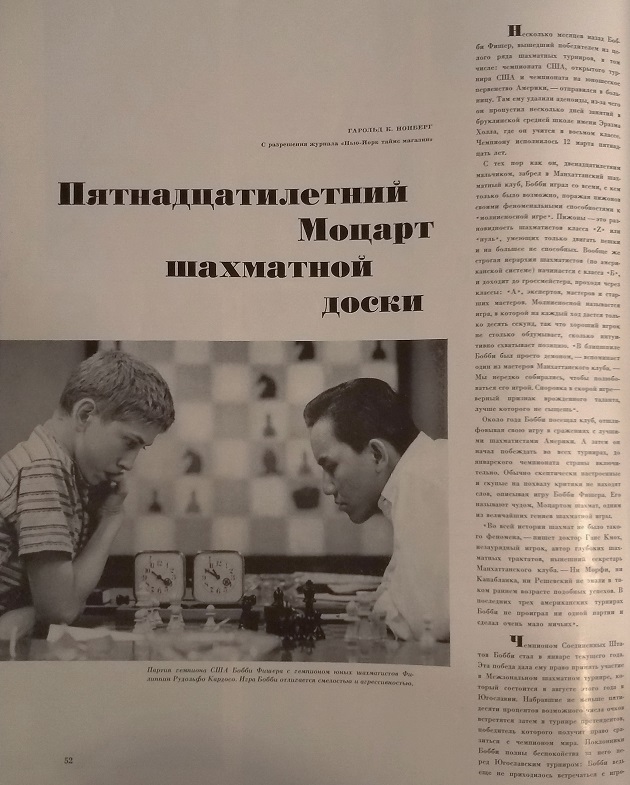
(11734)
John Donaldson draws attention to a website which offers a large number of Fischer-related newspaper articles.
He also writes:
‘I recently listened to a 2022 podcast series on the Worldwide Church of God, where one episode is on Bobby Fischer. One of the people they talk with, a person who interviewed Fischer in late 1976/77, when he was disenchanted with the WWCOG, still has the tape recordings of the interview. Although they play only segments of the five hours, some parts are interesting. Unless anyone in the former Yugoslavia still has the press interviews in which Fischer discussed a possible 1978 match with Gligoric, it is likely to be the last pre-1992 interview that Fischer gave. It is Episode 1.7: ‘Finding Bobby Fischer: The Lost Tapes’.
Incidentally, late last year I had a discussion with Eugenio Torre in St Louis. He was reticent to speak about Fischer but did confirm that he played only one training game with him (a long draw in a 2 c3 Sicilian which is known).’
(11927)
Willibald Müller (Munich, Germany) draws our attention to a 1967 East German film Die gefrorenen Blitze, with particular reference to ‘Cyril Pustan, the second husband of Bobby Fischer’s mother’:
We add that the University of Bradford states:
‘The Cyril Pustan archive collection has recently been kindly donated to Special Collections at the University of Bradford’s JB Priestley Library and will be made available to researchers in the near future.’
(11974)
Bobby Fischer’s grave in Laugardælir, Iceland is shown in this photograph taken in March 2024:
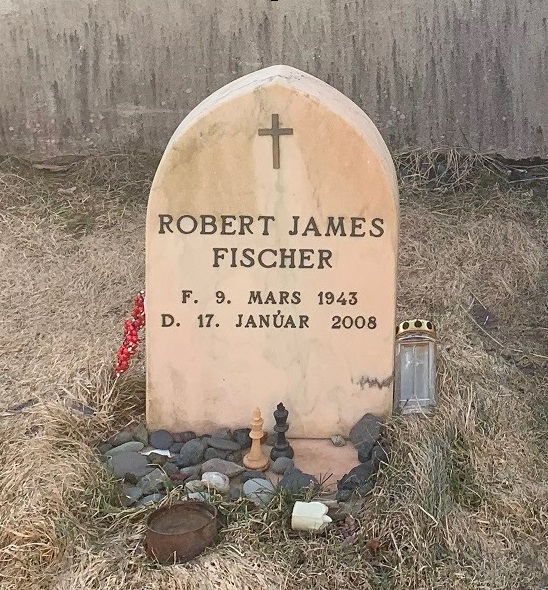
Acknowledgement: Zachary Saine (Amsterdam).
Addition on 31 October 2024:
An obvious ChessBase hoax:

Who would fall for that?
From the chessgames.com page of Dennis Monokroussos:

In Cuttings we have commented: Guile and gullibility complacently co-exist.
See too Articles about Bobby Fischer.
To the Chess Notes main page.
To the Archives for other feature articles.
Copyright: Edward Winter. All rights reserved.